NORTH SAILS BLOG
Tout
Events
Guides
News
People
Podcast
Sustainability
Tech & Innovation
Travel & Adventure
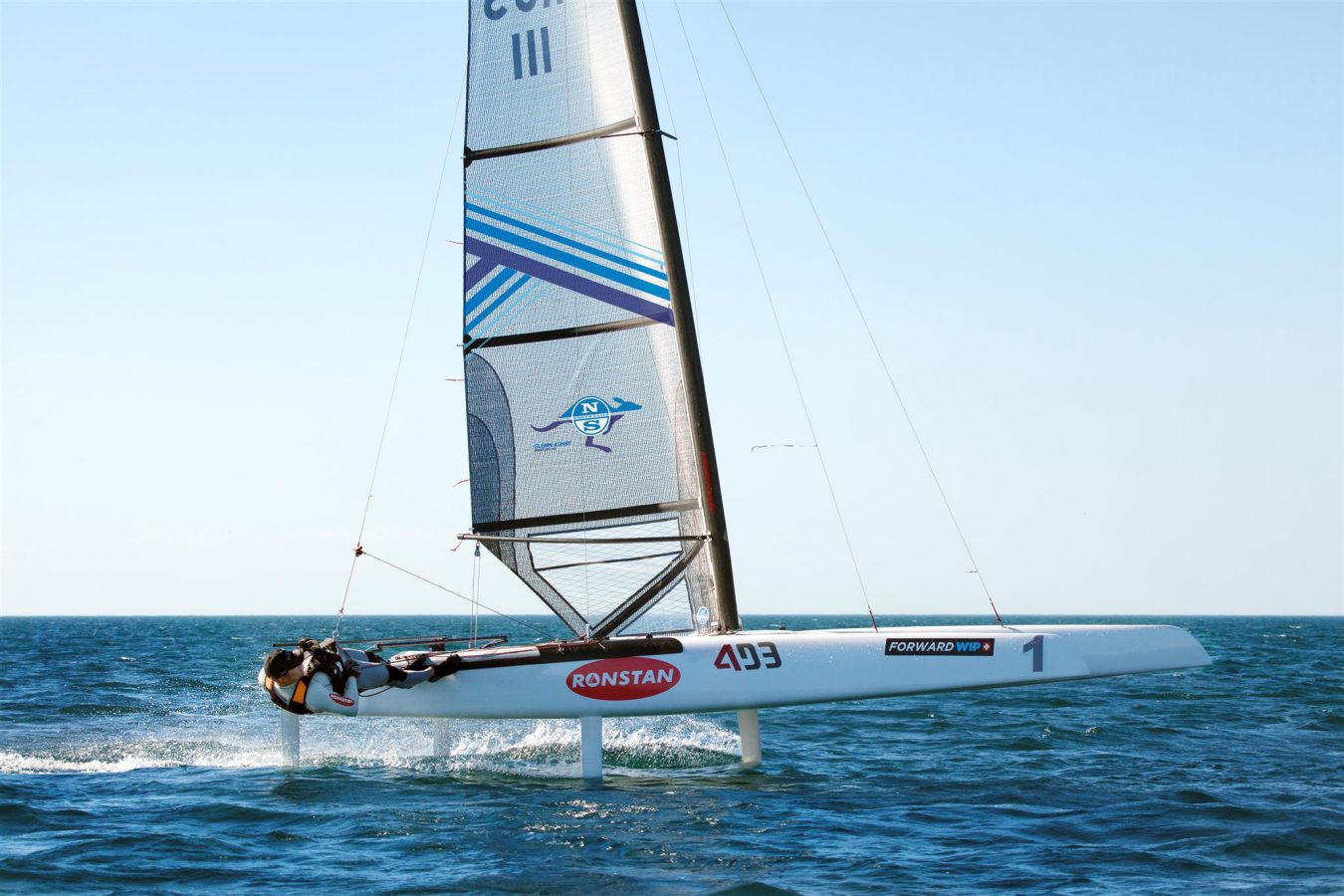
2020 NORTH A-CLASS INVENTORY
2020 NORTH A-CLASS INVENTORY
Optimized Designs for Boat Types, Masts and Sailor Weight
The North A-Class Catamaran inventory is customized to complement your gear. Find below our sail selection charts which shows the sail that best suits your weight, mast and sailing conditions.
Foiling Boats
SAILOR WEIGHT
All 14 & 15 Untapered Fibrefoam
DNA Tapered Fibrefoam 6.3 to 6.5 Hounds Height
Saarberg Mast
Above 78 kg
Decksweeper 2F
Decksweeper 2
Decksweeper 2
Below 78 kg
Decksweeper 2F
Decksweeper 2F
Decksweeper 2F
Classic Boats
SAILOR WEIGHT
All 14 & 15 Untapered Fibrefoam
DNA Tapered Fibrefoam 6.3 to 6.5 Hounds Height
Saarberg Mast
Above 78 kg
Classic Decksweeper 1F
Classic Decksweeper 1
Classic Decksweeper 1
Below 78 kg
Classic Decksweeper 1F
Classic Decksweeper 1F
Classic Decksweeper 1F
SAIL MODEL
BOAT TYPE
Classic Decksweeper 1
Classic
Classic Decksweeper 1F
Classic
Classic Decksweeper 2
Foiling
Classic Decksweeper 2F
Foiling
SHOP SAILS
READ MORE
READ MORE
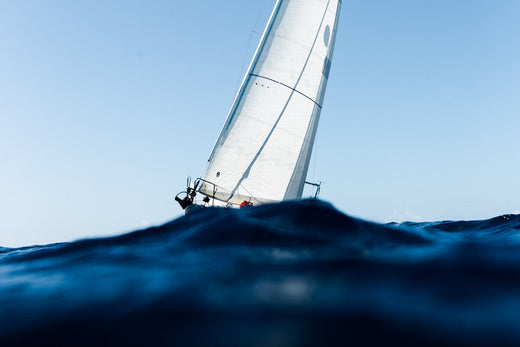
INTRODUCING THE 3Di OCEAN LINE UP
After an exhaustive research and development program, North Sails is thrilled to launch 3Di OCEAN 370, our latest innovative sail product that completes a line-up of 3D molded sails dedicated to cruising.
READ MORE
READ MORE
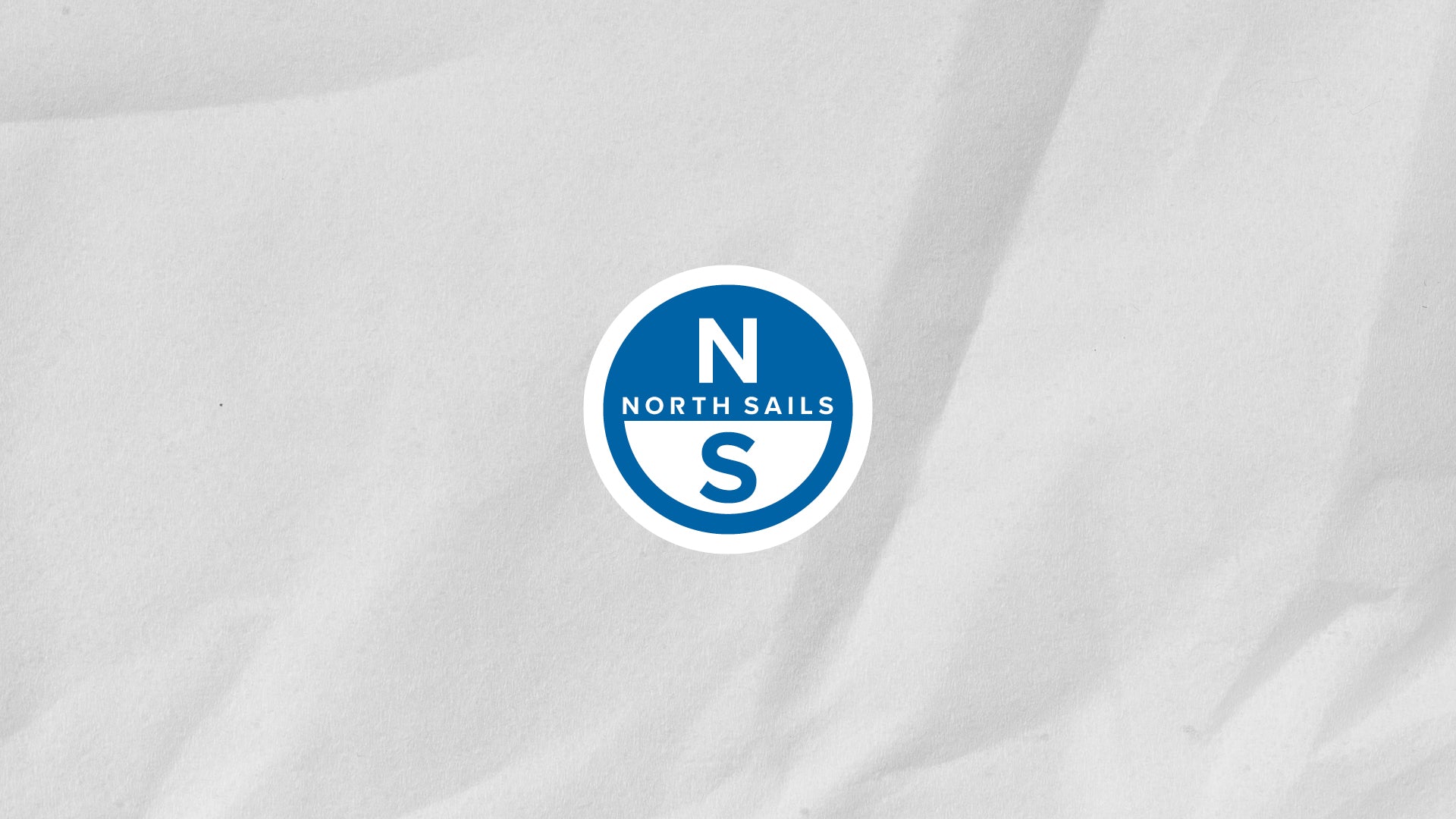
BENETEAU FIRST 18 SE & SEASCAPE 18 TUNING GUIDE
Beneteau First 18 SE & Seascape 18 Quick Tuning Guide.
QUICK TUNING NOTES
TWS
0-4
4-8
8-12
12-16
18+
Mast Rake
8,64m
Shrouds Tension
Loos Tension Gauge 91 Model A
34
36 Base Setting
38-40
42-44
45-46
Shroud Turnbuckles
(Full Turns)
-1
0
+1 to +2
+3 to +4
+5 to +6
JIB
Cunningham
Light
Light/Medium
Medium
Medium/Tight
Tight
Clew
(Older option)
Upper
Upper
Upper
Upper
Upper
Traveler
(New option)
Middle
Middle
Middle
Middle
Middle
Twist
Medium
Minimum
Minimum/Medium
Medium
Medium
Cross Sheeting
No
No
No
No
No
MAINSAIL
A-Frame (distance - blocks)
5-10 cm
1-3 cm
1-3 cm
3 cm
Play in puffs
Outhaul (mid-foot from boom)
8-10 cm
8-10 cm
5-8 cm
Tight
Tight
Vang (Kicker)
Snug
Snug
Medium
Hard
Hard
Cunningham
No
Light
Light/Medium
Medium/Max
Max
Twist
Medium
Minimum
Minimum
Minimum/Medium
Lots
Keel Position
88° - 85°
85°
85°
85°
85°
Downwind
(App. Wind Angle)
85° - 100° Speed
90° - 130° Speed & Soaking
110° - 140° Speed & Soaking
120° - 150° Speed & Soaking
100° - 130° Speed & Soaking
Seascape 18 Speed Guide
UPWIND
TWS
BS
VMG
HEEL
AWA
AWS
TWA
TACK
6
3.9
2.9
9°
25°
9.3
42
90
8
4.7
3.5
10°
25°
12
40
86
10
5.1
4.0
12°
25°
14.4
38
84
12
5.2
4.2
15°
25°
16.5
36
80
14
5.3
4.3
16°
26°
18.5
36
75
16
5.3
4.3
16°
27°
20.6
35
75
20
5.4
4.4
18°
28°
24.6
35
75
DOWNWIND
TWS
BS
VMG
HEEL
AWA
AWS
TWA
JIBE
6
3.9
3.2
5°
109°
3.5
147
85
8
4.8
4.1
5°
115°
4.7
148
80
10
5.4
4.7
6°
122°
6
150
70
12
5.8
5.0
6°
128°
7.5
150
65
14
6.2
5.4
6°
130°
9.1
150
65
16
7.6
6.1
7°
118°
11
143
75
20
12.1
8.8
10°
100°
14
137
80
READ MORE
READ MORE

WHO WE ARE: CHRIS WALTER
WHO WE ARE: CHRIS WALTER
Get To Know Your Local Service Expert
Chris Walter is part of the service team at the Vancouver loft and has been with North Sails for seven years. He is 34 years old from Vancouver and the first boat he sailed on was a Cooper 353.
What is your favourite local regatta/race and why?
Too many to choose from, I love them all. The top would be the Columbia Gorge One Design Regatta (CGOD). Who doesn't love 20 knts, temp in the mid 30s and bathtub warm water? All in a spectacular Venue. The Vanisle 360 is also a favourite. The scenery is amazing and it's a real challenge both physically and mentally.
Where is your favourite spot to go cruising and why?
Anywhere I can get to. The whole coast of B.C. is beautiful.
What is your favourite design of boat and why?
The IMOCA 60 is my favourite design because of the forefront of design in ocean racing; plus the crazy people who sail them!
What is it about sailing that you enjoy the most?
I enjoy being outside and enjoying nature in addition to the power of the elements.
What activities you enjoy outside of sailing?
I enjoy skiing. I've been skiing since I was a kid at various resorts. Now a days, I ski with my brother at Sun Peaks.
Tell us something interesting about yourself that most people would not know.
I have never lived on land. I was born and have lived on a sailboat my entire life. First we lived on a Cooper 353 them a Brandlmayr 48. We had a dog growing up who lived on the boat with us, a schipperke, as well as a couple of hamsters.
How have you been keeping busy since all racing has been cancelled?
I've been fixing up my old boat, a C&C 32, mostly replacing all the things that slowly break on a nearly 40 year old boat. I added lazyjacks and sail bag, similar to what boats in ocean races use. I still have a regular sail cover for when I'm not sailing but this new one will contain the sail better while I'm out sailing. I've never raced the boat however was planning to do the Round Bowen race this year and perhaps a single handed race; we'll see what happens.
READ MORE
READ MORE
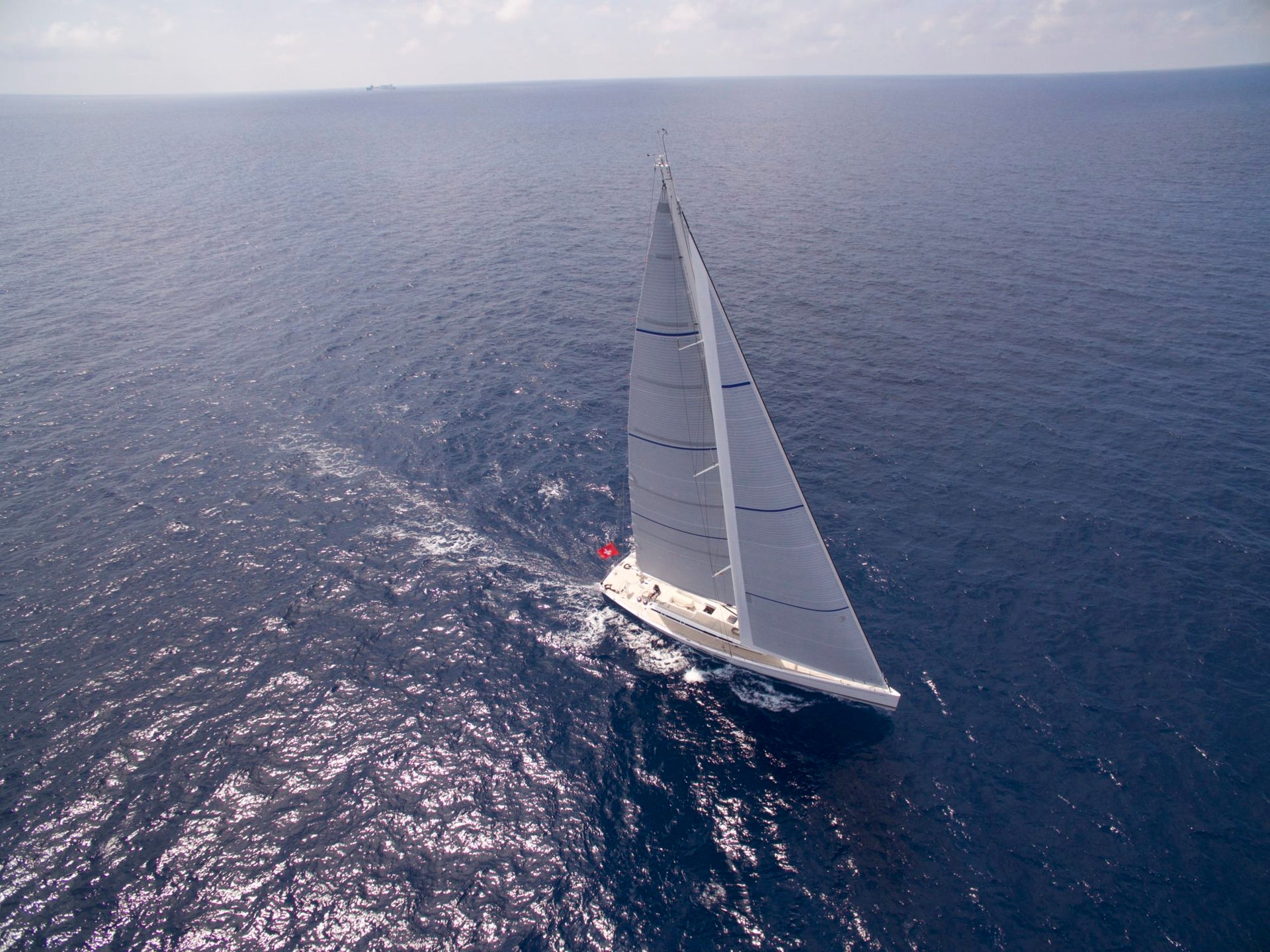
NEW SAILS FOR SUMMER
NEW SAILS FOR SUMMER ON A SWAN 80
Sail Expert Brad Favelle Shares His First Impressions
Brad Favelle, North sail expert based in Palma de Mallorca runs us through the delivery of some new sails which is always a refreshing experience. We met with Brad after installing a set of Swan 80 sails ready for summer cruising. He provides us with an on-the-ground view and shares his first impressions.
Explain the sail installation process. Once the client picked the sails, what was the first step to getting them on the boat once production concluded?
The sails are quite large on an 80-footer, so there was a fair amount of planning to get the sails to the boat and loaded on board. With the help of a forklift and the North Sails crane we lowered the sails onto the deck as the boat hit the water. Once the sails were safely on deck we started with the preparations of un-rolling in the correct position, then we used shackles and lashings to ensure the attachment points were set up correctly. Afterwards we loaded battens and applied the correct tension along with halyards to ensure all were hoisted ready for furling and boom reefing systems.This time is well spent along with the fine-tuning, which allowed us to create the best loading profiles for the sail and usability for the rig and deck systems onboard.
We can assess the results of the product and sail setup by conducting sea trials, which are beneficial to us as sail designers and experts, and to the crew. We enjoy sharing our expertise with the crew so they can help make their owner’s experience even more enjoyable whilst onboard.
What was it like seeing the new sails hoisted for the first time?
To see the sails hoisted for the first time was not only rewarding but highly pleasing from a sail design and production point. Making sure the design was optimal and that the sails fit perfectly was one of my main goals when taking on this project.
What were the client’s first remarks once they saw the sail up?
As any sailor knows, the best way to judge the result is through the enjoyment of a balanced helm and smiles as we powered through the perfect sea conditions. As we trimmed in the sails, we quickly picked up speed and the level of enjoyment set in for all on board. We were all delighted to be out on the water again.
What kind of conditions did you have for the first sail?
For our first sail, we had roughly 14-16 knots with a slight sea state. We had two crew: two North Sails Experts and an additional Industry professional. We couldn’t have asked for better conditions, which helped to make the entire experience productive and fun for the captain and crew.
Why is 3Di OCEAN 700 best for this type of yacht? Explain the features and benefits.
3Di OCEAN 700 is optimized for this size yacht as it delivers an exceptional level of modern cloth engineering. The blend of the internal tapes uses custom layouts and the chafe resistant surfaces provides the balance between durability and performance.
I feel that OCEAN 700 is a great package for the client because of its user-friendly handling and trim characteristics. Also, its color looks particularly great against the white hull. 3Di OCEAN 700 is the right choice for blue-water superyachts, with aramid and UltraPE filament tapes, making her highly durable and strong. Everything about 3Di OCEAN 700 is for cruising performance perfection.
What was the total production time once the order was placed to when they arrived on the scene?
SY Swan 80’s sails were ordered in mid-December of 2019. Once the new year arrived, North sail designers Flavia Tomaselli, Heine Sorensen and myself went through the details with the boat captain Kelsey, allowing us to configure the sail design and specification in January of 2020. In May, the sails were delivered to the boat.We’ve built a positive relationship with the boat captain, through our after-sales care and service team approach which helped confirm the order.
How long did it take to install the new sails once delivered?
Once the sails were delivered 3 North Sails Representatives help make short work of this process. The headsail did not contain battens, so that was straightforward. We attached a hoisting halyard and adjusted the halyard while attaching the sheets. The mainsail required the battens and cars to be fitted, and then we got the foot lashed on. The cars are then attached to the rig one at a time, then the reef lines which completes the loading onto the boom. All in all, the entire process took roughly five hours. Our external team delivers the onboard support to ensure this is a fluid process for the crew and captain.
Describe your first sail. What were the three main things you noticed?
Our first sail went great, 3Di will look good on any Swan. The finishing points on the sail were perfected with utmost detail and care. The flying shape of the new sails works in hand with the balance, feel and characteristics of the boat.
How long have you been working with the Swan 80 client?
I’ve been working with the boat captain for eight years. Kelsey and I have worked together on multiple projects for different boats, so it was a natural fit for him to continue his relationship working with North Sails here in Palma.
Through the industry-leading local port facilities and superyacht sail service hub, we are positioned perfectly to support all of the client needs for many years to come after the sails are delivered. Meeting the local demands, along with the high expectations of every client we see passing through the island, is our primary goal.
We have a passionate team that works hard to achieve these types of results. Delivering new sails is always a great way to spend a day in Mallorca! As sailmakers, we are ever-evolving the ways we provide the best for our clients.
READ MORE
READ MORE
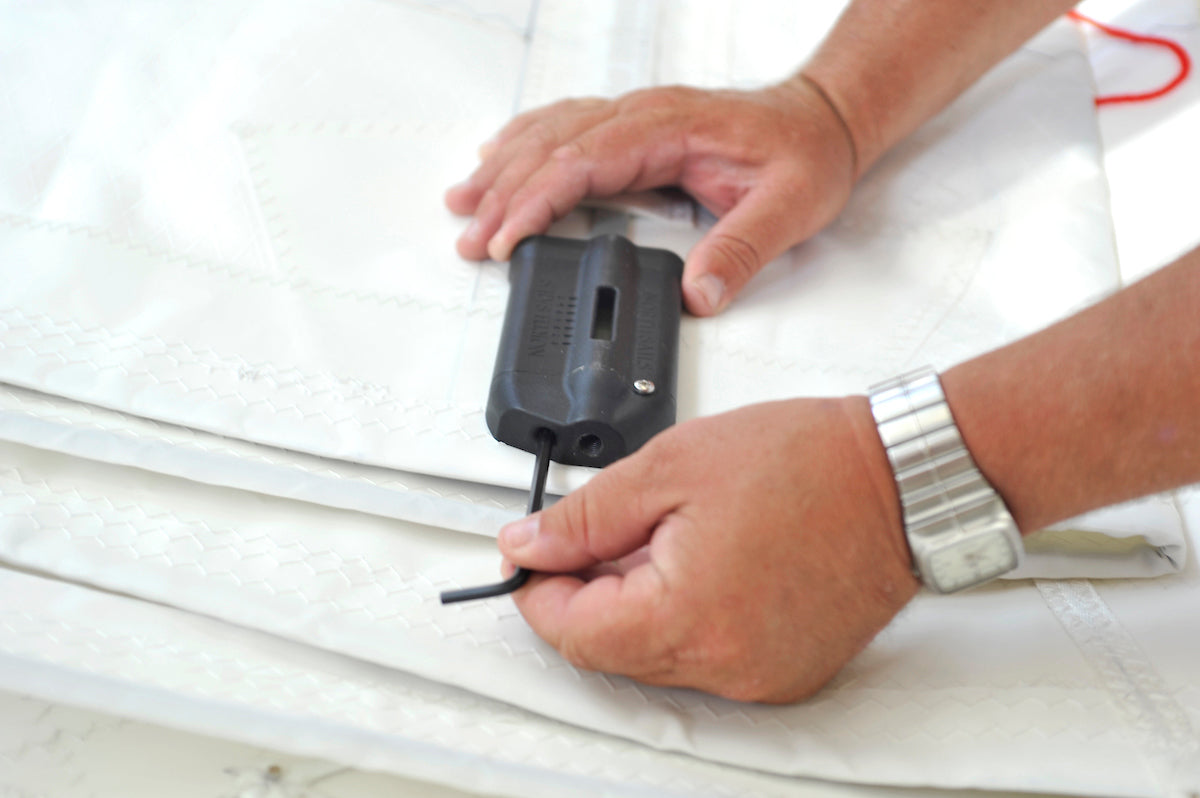
BATTENS 101
BATTENS 101
How To Install Three Common Batten Types
North Sails expert Tom Pease of North Sails in Milwaukee shows us how to use the three most common types of batten closures: velcro stuff, lace in and wing tip. To learn more about tensioning and installing battens for cruisers, see here.
READ MORE
READ MORE
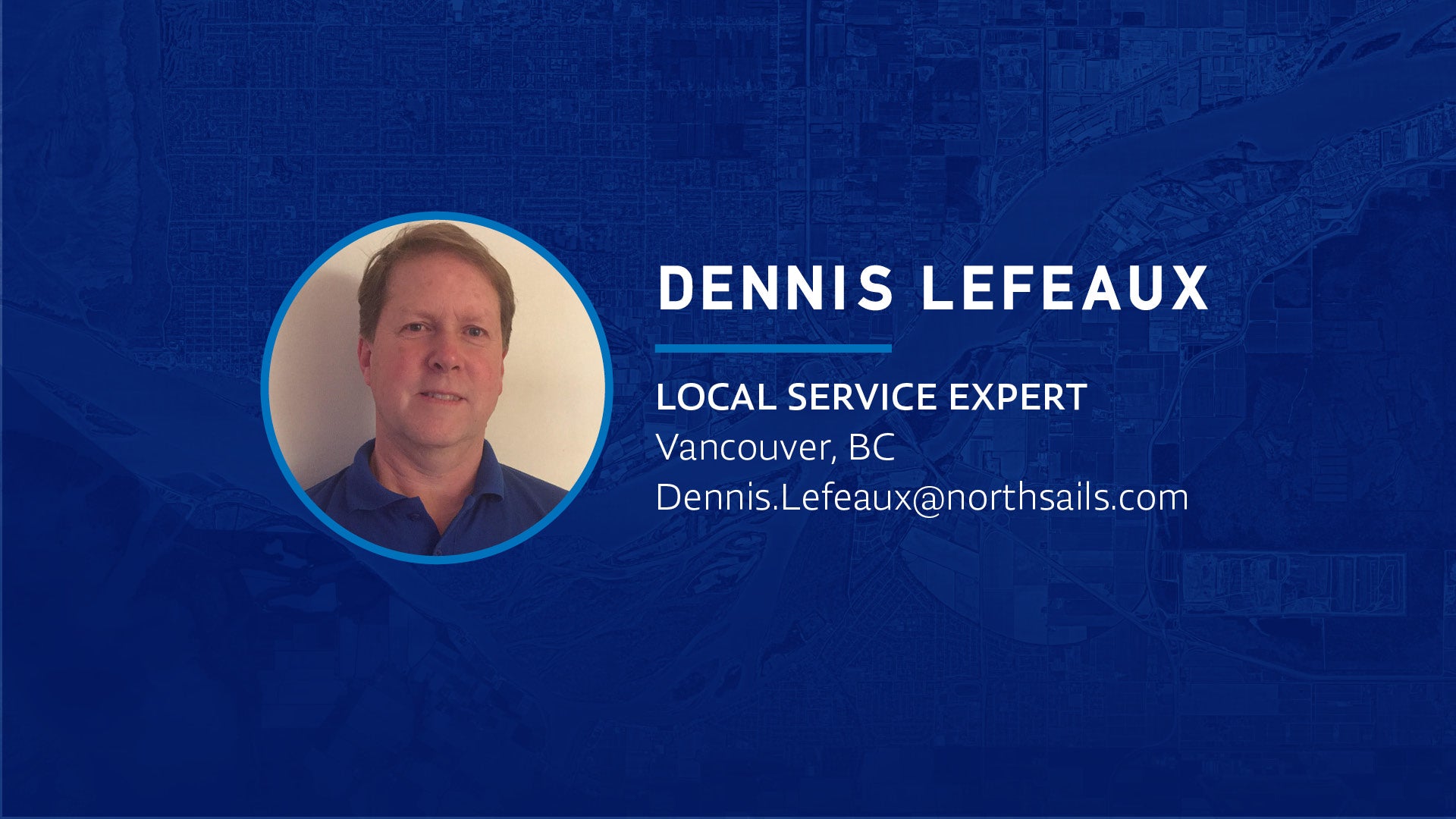
WHO WE ARE: DENNIS LEFEAUX
WHO WE ARE: DENNIS LEFEAUX
Get To Know Your Local Service Expert
Dennis Lefeaux has been a staple at North Sails Vancouver for years. He has worked for North Sails for over 40 years and is currently the service manager for Vancouver. He was born in Vancouver and is 59 years old with the first boat he sailed on being a T-Bird.
What is your favourite local regatta/race and why?
English bay scramble as it's fun and hard to figure out. Another favourite is Whidbey Island because it's tough racing but also has a fun social aspect once we're off the water.
Where is your favourite spot to go cruising and why?
Gulf Islands, the sailing is great and it's such a relaxing place.
What is your favourite design of boat and why?
Davidson 40 Teddy Bear, it's just a long time love affair. I also like the Martin 242 because it's simple, inexpensive, easy and fun.
What is it about sailing that you enjoy the most?
I would say it's a combination of being outside, the people, and the always changing playing field.
What activities you enjoy outside of sailing?
I enjoy hiking and fishing.
Tell us something interesting about yourself that most people would not know.
I was on the 1987 Canadian Americas cup team and coached soccer for 10 years.
How have you been keeping busy since all racing has been cancelled?
I’ve been keeping the loft running and getting service done for our customers while also working in the yards at home.
READ MORE
READ MORE
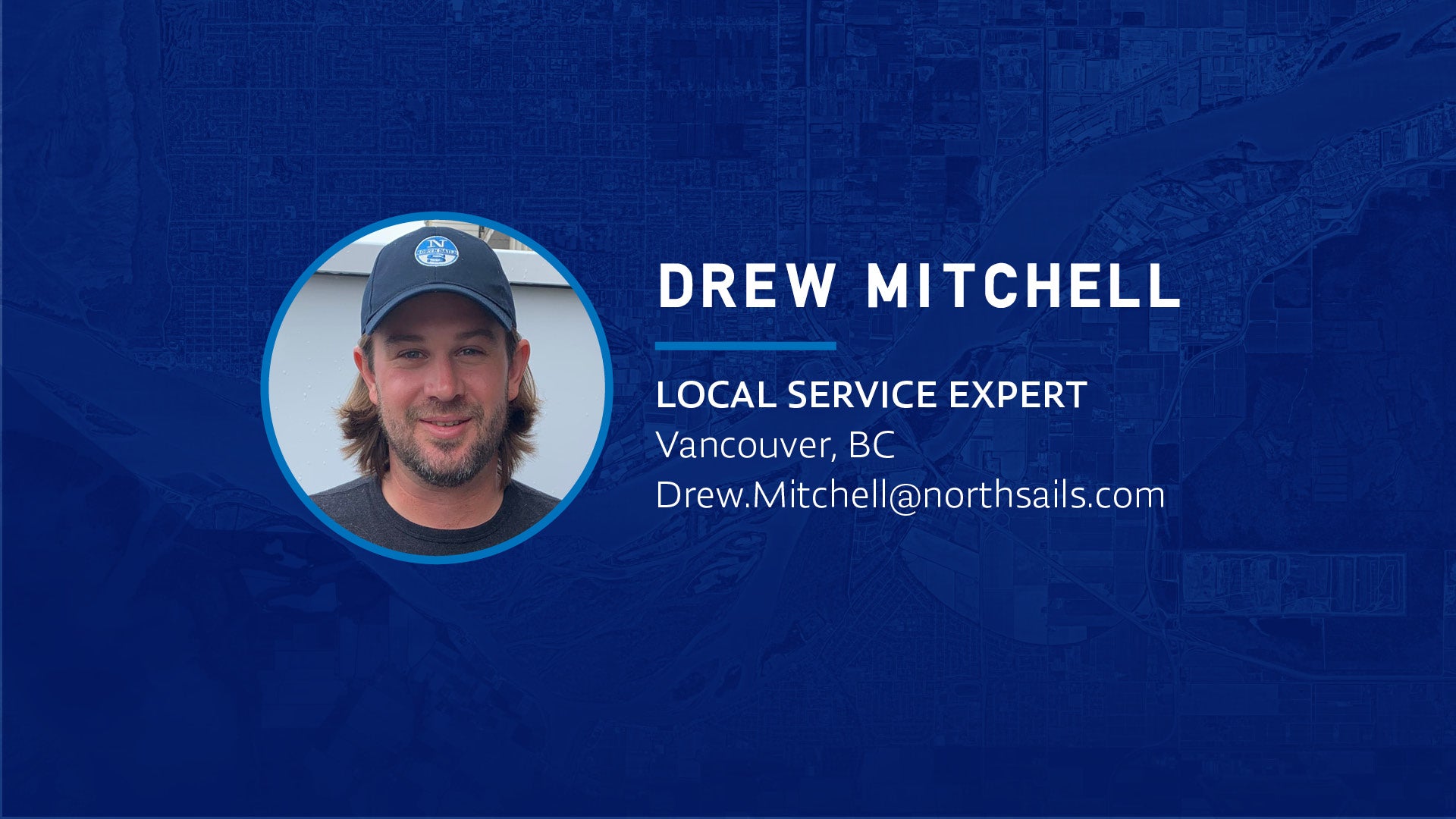
WHO WE ARE: DREW MITCHELL
WHO WE ARE: DREW MITCHELL
Getting To Know Your Local Sales Expert
Drew Mitchell was born in Halifax, Nova Scotia and has worked at North Sails for nine years as a sales rep and loft manager for the Vancouver loft. He is 32 years old and the first boat he sailed on was a Bluenose Sloop.
What is your favourite local regatta/race and why?
Van Isle 360. I enjoy this race as it is a pretty neat mix of sprint and distance racing with such amazing scenery. The stopovers are always fun as you get to mingle with other racers and chat about successes and failures on the race course. Also as an east coast kid it's a pretty neat way to some neat spots on Vancouver Island.
Where is your favourite spot to go cruising and why?
I've only ever cruised once in my life so I would have to say Alexandra Island RVYC outstation. It was on a 242 my buddy owned so it was more like camping on the water.
What is your favourite design of boat and why?
Bluenose Sloop. It is a classic Nova Scotian design that has been modified with fibreglass for racing. Currently it is the most competitive one design fleet in Nova Scotia with 25 + boats showing up for Chester Race Week. I am lucky enough to race on borrowed boats in the fleet with my brother. I hope to own one with him in the future.
What is it about sailing that you enjoy the most?
I enjoy all the uncontrolled variables that sailing has to offer and trying to manage them better than the competitors, it is like no other sport. I also enjoy the team aspect of sailing especially when I get to sail with my brother and close friends. My favourite type of sailing is large one design fleet racing.
What activities do you enjoy outside of sailing?
I enjoy hockey, surfing, snowboarding, powerboating and now golf.
What is something interesting about yourself that most people would not know?
Before moving to BC I played on both the Nova Scotian Box and Field lacrosse teams. I played in two founders cups (Jr b box national championship) and 1 Art Ross Victory Cup (Senior field national championship). I also played for STFX University team for 5 years, winning back to back MUFLL (league) championships and received league awards such as Rookie of the year, couple 1st team all stars and also won the league scoring title.
How have you been keeping busy since all racing has been cancelled?
I picked up golf, I am currently not very good but am really enjoying learning a new sport that I find is very difficult. Looking to shoot under 100 before sailboat racing ramps back up!
READ MORE
READ MORE
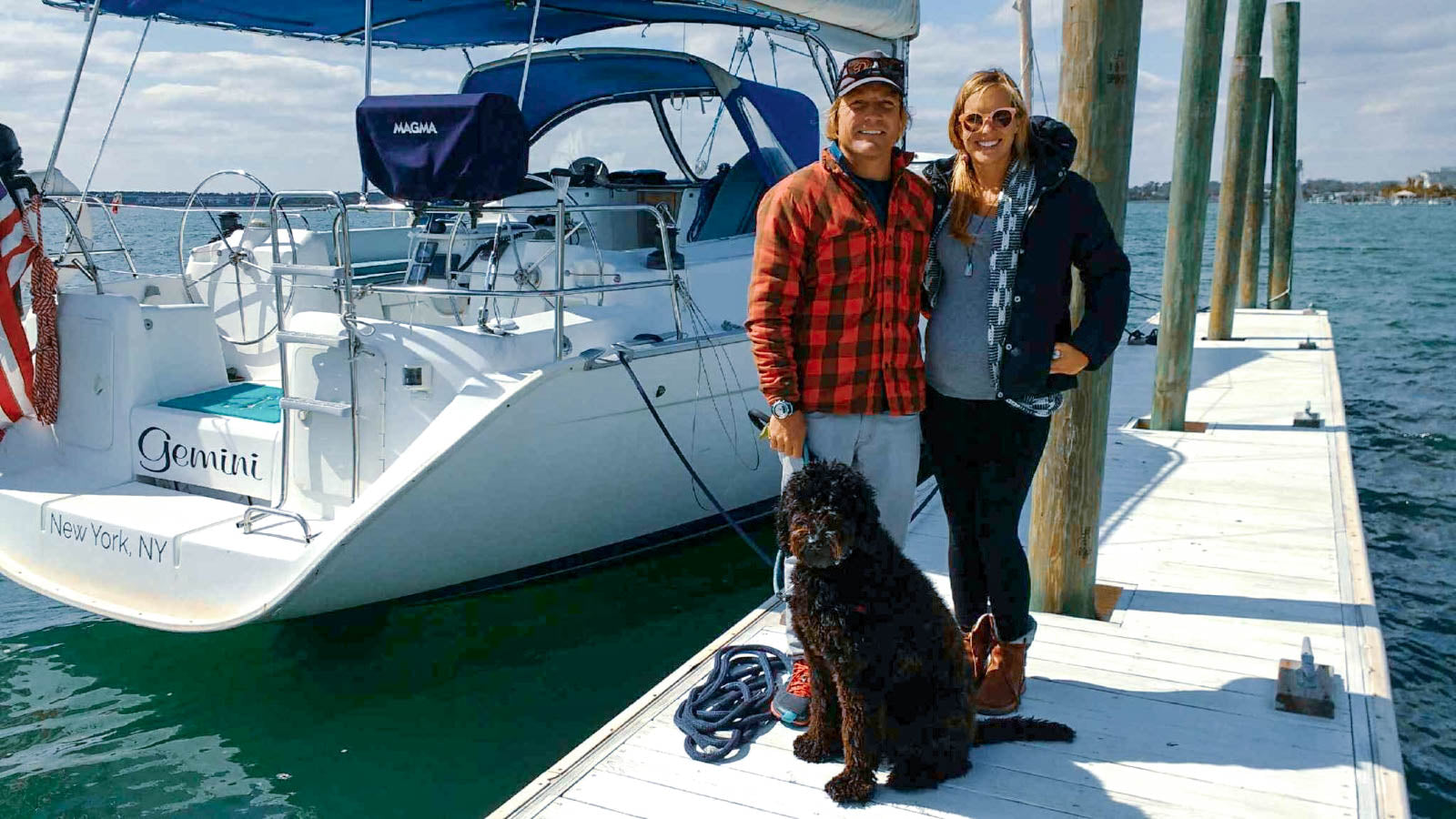
YOUNG CRUISERS: TAKING CHANCES CREATES OPPORTUNITY
YOUNG CRUISERS: TAKING CHANCES CREATES OPPORTUNITY
A Story About Living Each Day to the Fullest
By Caroline Gentry Rowell
Imagine, if you will, it is the late summer of 2010. I am 21 years old, just graduated university, have taken a respectable office job and just moved into my new, cute and cozy two-bedroom apartment– as my parents threatened to never help me lug all of my stuff in a U-Haul again. Well, now picture three months later, when I come blazing into my parents’ suburban home, telling them that I have met someone- more specifically have “fallen for” my college sailing instructor and… I am quitting my job, breaking my lease that they reluctantly cosigned, hopping on a plane to St. Maarten, and planning to sail the Caribbean and Pacific…with him. Honestly, I am still wondering how my dad didn’t have a heart attack on the spot?!
“I eagerly wanted to trade stability for adventure. So here I went…”
Had we only been dating for a couple of months? Yes. Did I know how to sail? No, I was too busy being wooed to grasp more than the basics of rigging a 420 and had never sailed before college. Was I scared of the unknowns? Duh– but I knew that I had to do this or I would always look back with regrets (and we need none of those in our lives). I can still feel the butterflies, a mixture of excitement and nerves, and remember the tears as I told my family and friends goodbye before I boarded the plane. But I knew that this was me living my dreams– I eagerly wanted to trade stability for adventure. So here I went…
It’s been ten years. That aforementioned “sailing club president” is my husband, we have a beautiful almost 2-year-old who is growing up spending his time between the mountains of North Carolina and cruising the Bahamas, and we hope to inspire others to live out their dreams and trust the unknowns (especially if they involve sailing/ cruising).
In the past 10 years, we have collected enough memories to last us a lifetime. Our travels have taken us all over the globe where we have had the highest of highs and the absolute lowest of lows (as many cruisers will also tell you). We have met our best friends bought a business, made new towns feel like our hometown, retrofitted boats, grew a baby in paradise, but we have also lost mentors, been away from family for holidays, and been struck by lightning, all on this cruising journey.
“Change is uncomfortable, the path less paved is bumpier, but life is so much sweeter when you live each day to its fullest.”
READ MORE
READ MORE

THINGS TO LOOK FOR IN A GOOD SAIL
What distinguishes a great cruising sail from average? You know when it feels right. It’s that moment when you could almost let go of the wheel and the boat would steer itself. A boat in perfect balance.
READ MORE
READ MORE
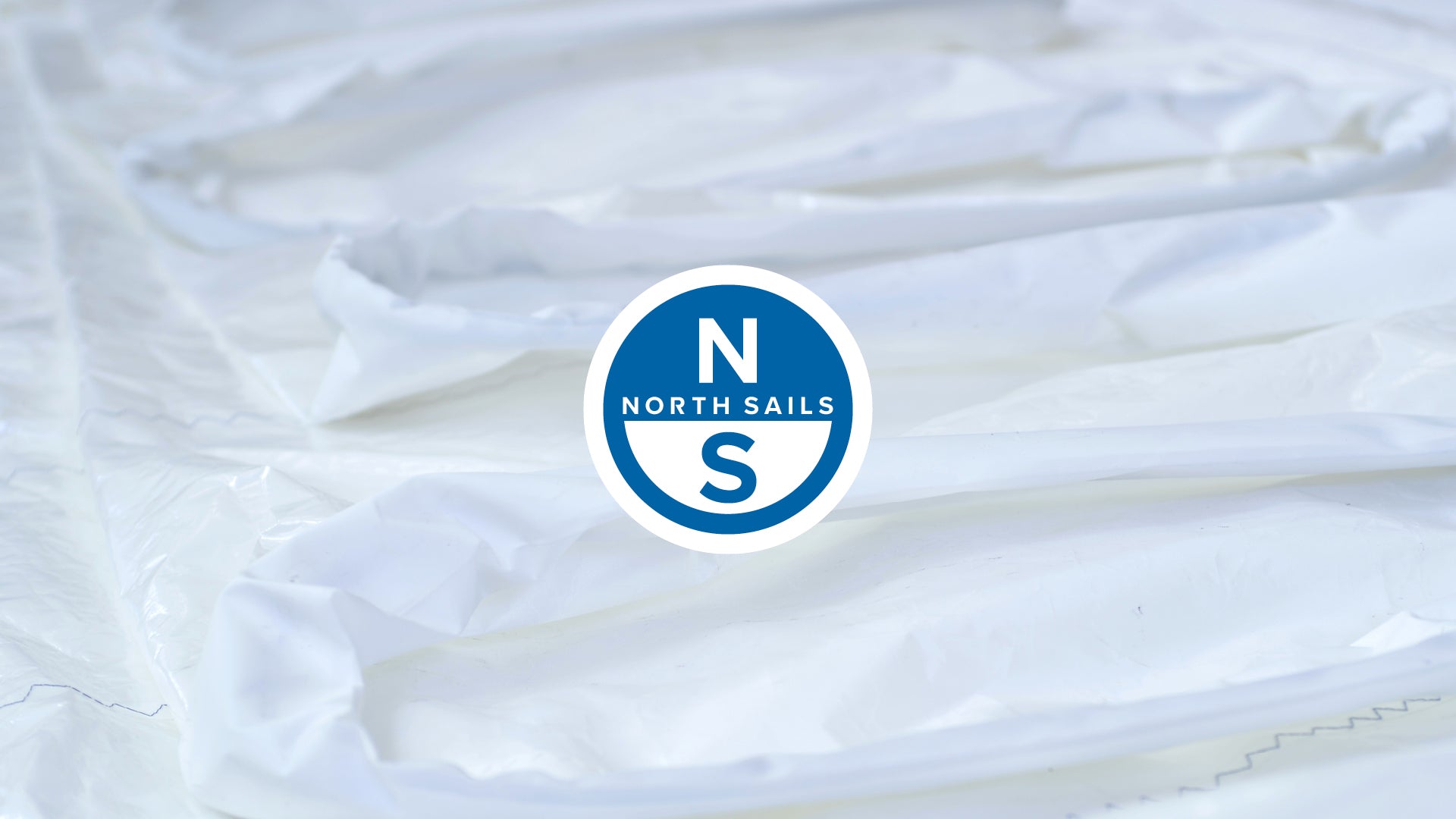
PHANTOM TUNING GUIDE
Phantom sailing can be made as simple or as technical as you want to make it, this is one of the main reasons for its success as a class.
Onshore Setup
Due to the adjustments available in a modern Phantom the onshore setup is really only a base on which to develop your own tuning notes.
SPREADER LENGTH
This is measured from the outer tip to the side wall of the mast = 420mm.
If you are under 85kg you can shorten the spreaders to 412mm, likewise if you are heavier than 99kg then you can lengthen them to 425mm. This adds more support to the middle of the mast, essentially stiffening the mast section.
SPREADER ANGLE
This is measured with a batten or straight edge across the aft side of the shrouds, the distance from this batten to the back of the mast is the spreader angle, this should be 145mm.
MAST FOOT POSITION
The mast foot is measured from the aft edge of transom bar to the aft edge of the mast = 3280mm.
RIG TENSION
Rig tension is actually one of the least important settings due to the fact that the Phantom is such a powerful boat that you are easing forestay to depower in relatively low wind speeds so the rig tension is actually only used for light conditions of under 6kts (dependent on helm weight).
One of the main reasons for measuring rig tension is to have a constant measurement for setting up the mast rake. Therefore I set the rig up with 300lbs of rig tension using a rig tension gauge on the shrouds.
The rake should then be as follows:
Helm Weight < 91kgs – Rake 21’7Helm Weight 92 – 100kgs – Rake 21’10Helm Weight > 100kgs – Rake 22′
Sailing Set-up
(Adjustable Lowers)I have added the lowers to sailing setup because they are key factors to setting up the sail shape once afloat. In the light airs (sub hiking) they should be slack, this allows the lower mast to bend with normal mainsheet and kicker tension, in turn this takes out a little of the excess shape from the luff of the sail. This is required because the wind doesn’t have enough energy to flow around deep sail shapes so it’s best to limit it’s effort and flatten the lower part of the sail.
As the wind increases and kicker tension is added the lowers are then tightened, this is so it acts as a brace against TOO much lower mast bend due to the kicker. Less lowers tension is needed on flat water where a flatter luff entry helps, than in rough sea conditions where a fuller luff helps to make the boat more forgiving and easier to steer fast.
FORESTAY
The forestay is the first control to ease once the breeze increases into a ‘hiking’ breeze, this helps to bend the rig and flatten the sail, although you may lose a little pointing ability, however the speed you gain from raking the rig will outweigh this, don’t be afraid to see the leeward shroud swinging wildly in the wind! This is very much an individual preference so find settings you like and use a calibration strip on the deck or the forestay adjusters to make easy reference marks ( IMPORTANT: remember when you are max rake in windy conditions to pull on the forestay downwind and prior to tacks so you can get under the boom!)
OUTHAUL
The outhaul should be used in conjunction with the lowers, so in very light airs flatten the foot so there is just 50-60mm gap between the sail and the boom at max. depth. Gradually ease this as the wind increases to a maximum of 150mm gap when looking for max. power, and then pull on the outhaul until you have a crease running along the foot when you are looking for max. depower mode.
KICKER
The key control for most singlehanders it is doubly important in the Phantom due to it’s large roach mainsail, don’t be afraid to keep pulling it on as long as the top tell tail is flying 50% of the time. Sub hiking conditions you should mainly be using mainsheet to control the leech tension with the kicker adjusted to hold this tension whenever you ease the mainsheet, then as the breeze increases the kicker should be tensioned to keep a firm leech and aid pointing. Continue to pull on more and more as the wind builds as its much quicker to sail with the mainsheet eased (boom out beyond the quarter) and a lot of kicker than the reverse of boom near the centreline with an open leech.
CENTREBOARD
In sub hiking conditions under 5 knots you can have the board right down, but as you rake the mast you will need to raise the centreboard to maintain the balance, as soon as you feel you have too much weather helm raise the board some more, you will be surprised at how little board you need to maintain height once you are flat out hiking especially when needing to steer a lot in choppy conditions.
DOWNWIND
When reaching pull on the forestay so the leeward shroud is under some tension, this helps to power up the rig, ease the outhaul too , raise the board two-thirds, and as soon as you are close to planing move your weight back and go for it! The same applies on the run where sailing by the lee can be very quick as long as you ease enough kicker to twist the head of the sail, beware this is very twitchy in anything above a moderate breeze! The Phantom rewards hard work downwind so keeping the boat flat and constantly trimming and steering for any waves will pay dividends.
Good Sailing!
READ MORE
READ MORE
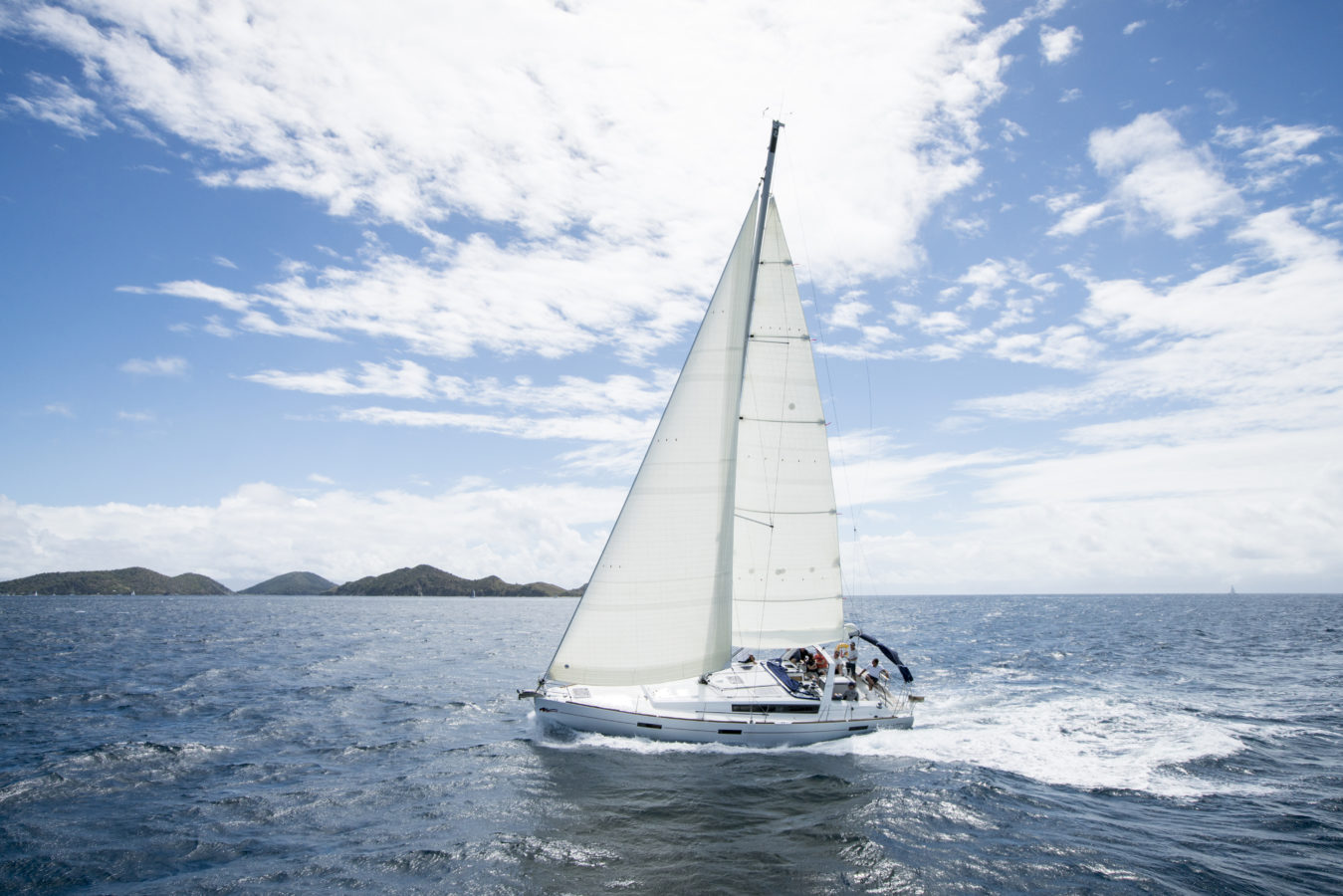
CRUISING SAIL QUALITY
North Sails stands behind our products. When you buy a North Cruising Sail, you can expect quality.
READ MORE
READ MORE
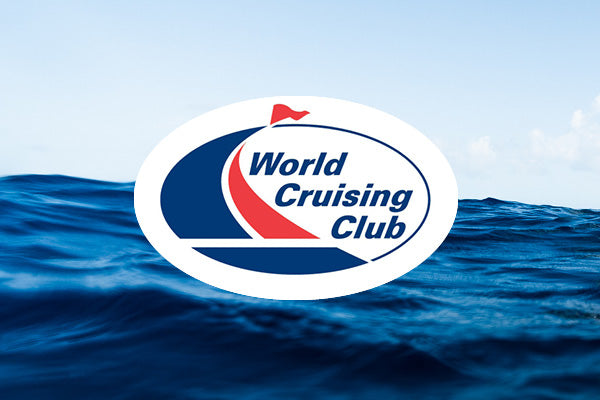
NORTH SAILS PARTNERS WITH WORLD CRUISING CLUB
NORTH SAILS PARTNERS WITH WORLD CRUISING CLUB
Supporting Bluewater Around the World Adventures with Expert Support and Global Service
North Sails announces an exciting new partnership with leading sailing rally organizers World Cruising Club. The aim of the partnership is to inspire sailors around the world to embark on a cruising adventure, using North Sails experts and resources to guide the way.
World Cruising Club are organizers of Atlantic Rally for Cruisers (ARC) and World ARC circumnavigation adventure, helping thousands of sailors annually cross oceans safely. North Sails is excited to provide the bluewater cruising community with access to its 110 sail and service lofts around the world and support to help advise them at every step of their journey.
With over six decades of experience, North Sails is the industry leader in sailmaking and service. Reliable equipment is paramount for cruising safely. North Sails can provide that comfort to cruising customers, who know their experts are never more than a satellite call, cell phone call, or email away.
"Welcoming North Sails as our preferred sailmaking partner for World Cruising Club rallies will benefit cruising sailors on their journeys across the Atlantic and around the world."
This partnership comes at an exciting time, as North Sails has fast-tracked its development for an expansion of key cruising products. These are strictly for sailors who want to look at and trim beautiful, modern, and incredibly durable cruising sails. In a typical year over 1.5 million ocean miles will be sailed by boats in World Cruising Club’s rallies, so having the right sails is vital for successful ocean voyages.
“North Sails is extremely proud of their cruising products, and we make more cruising sails than anyone in the world.” Said North Sails President, Ken Read, “We have always been a part of the cruising community and we are committed to serving our cruising customers in the same capacity we support racers. I, personally, am looking forward to local racing, yacht club cruises, and day sailing this summer.”
World Cruising Club Managing Director, Andrew Bishop says “Welcoming North Sails as our preferred sailmaking partner for World Cruising Club rallies will benefit cruising sailors on their journeys across the Atlantic and around the world. Our partnership means the experienced North Sails team will be on hand to provide reliable advice about the selection, care and maintenance of sails for long-distance cruising at our forums and seminars supporting our participants, as well as delivering a long-lasting, quality product to help our participants achieve their sailing dreams with our rallies.”
Cruising boats are a unique sanctuary in which to escape from day-to-day pressures on land. The pure fun of time spent away from shore with family and friends is of greater benefit than ever before. A partnership with World Cruising Club is just one of the ways that North Sails is supporting its customers in new and innovative ways. Keep an eye on your inboxes as North Sails has an exciting product announcement on the horizon. Join the waitlist today.
📸 Amory Ross / North Sails
READ MORE
READ MORE

NORTH SAILS IS OPEN FOR BUSINESS
NORTH SAILS IS OPEN FOR BUSINESS
But the fact is, we never closed
It’s still a complicated time in many places around the world, and a huge thank you to our entire North Sails team, clients, and friends who have pulled together in a way that is quite frankly remarkable.
Our summer calendar may not be filled with the normal regatta schedule, and local guidelines are certainly making us look at all aspects of our lives, but sailing remains a unique way to escape from day-to-day pressures on land. Many new and creative events are popping up around the world: single-handed, double-handed, social distance crewing. Our calendars are filling up with a unique style of racing, alongside day-sailing and cruising of course. Simply, “getting out there” is our new normal.
So what’s been going on at North Sails?
North Sails have 110 sales and service sites, and seven manufacturing facilities globally. We did have limited production for a time but are now running at full capacity at our manufacturing sites, and have been since mid-May. Some of our delivery times were pushed out a bit because of government restrictions at specific locations. Still, our manufacturing team has kept safety at the forefront while getting back on schedule. The great news is, we have already caught up to the point of taking new orders for delivery as early as July.
As always, your local North Sails sales and service team are on hand to help and to answer questions as we help get you back on the water. Pre-season service, measurement, new sails, tuning, sail checks, we are simply a phone call away. Our Certified Service facilities are open globally, with many facilities offering curbside pickup and drop off. Use our loft finder below to access contact details and get in touch with your closest North Sails.
We spend every minute of every day, making beautiful sails that improve your sailing experience. Take advantage of the North Sails expertise, and find out how much more fun you can have on your boat.
FIND YOUR LOFT TALK TO AN EXPERT REQUEST A QUOTE
READ MORE
READ MORE
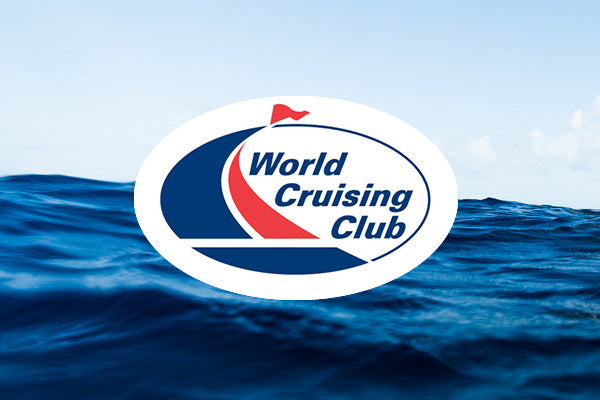
NORTH SAILS PARTNERS WITH WORLD CRUISING CLUB
NORTH SAILS PARTNERS WITH WORLD CRUISING CLUB
Supporting Bluewater Around the World Adventures with Expert Support and Global Service
North Sails announces an exciting new partnership with leading sailing rally organizers World Cruising Club. The aim of the partnership is to inspire sailors around the world to embark on a cruising adventure, using North Sails experts and resources to guide the way.
World Cruising Club are organizers of Atlantic Rally for Cruisers (ARC) and World ARC circumnavigation adventure, helping thousands of sailors annually cross oceans safely. North Sails is excited to provide the bluewater cruising community with access to its 110 sail and service lofts around the world and support to help advise them at every step of their journey.
With over six decades of experience, North Sails is the industry leader in sailmaking and service. Reliable equipment is paramount for cruising safely. North Sails can provide that comfort to cruising customers, who know their experts are never more than a satellite call, cell phone call, or email away.
“Welcoming North Sails as our preferred sailmaking partner for World Cruising Club rallies will benefit cruising sailors on their journeys across the Atlantic and around the world.”
This partnership comes at an exciting time, as North Sails has fast-tracked its development for an expansion of key cruising products. These are strictly for sailors who want to look at and trim beautiful, modern, and incredibly durable cruising sails. In a typical year over 1.5 million ocean miles will be sailed by boats in World Cruising Club’s rallies, so having the right sails is vital for successful ocean voyages.
“North Sails is extremely proud of their cruising products, and we make more cruising sails than anyone in the world.” Said North Sails President, Ken Read, “We have always been a part of the cruising community and we are committed to serving our cruising customers in the same capacity we support racers. I, personally, am looking forward to local racing, yacht club cruises, and day sailing this summer.”
World Cruising Club Managing Director, Andrew Bishop says “Welcoming North Sails as our preferred sailmaking partner for World Cruising Club rallies will benefit cruising sailors on their journeys across the Atlantic and around the world. Our partnership means the experienced North Sails team will be on hand to provide reliable advice about the selection, care and maintenance of sails for long-distance cruising at our forums and seminars supporting our participants, as well as delivering a long-lasting, quality product to help our participants achieve their sailing dreams with our rallies.”
Cruising boats are a unique sanctuary in which to escape from day-to-day pressures on land. The pure fun of time spent away from shore with family and friends is of greater benefit than ever before. A partnership with World Cruising Club is just one of the ways that North Sails is supporting its customers in new and innovative ways. Keep an eye on your inboxes as North Sails has an exciting product announcement on the horizon. Join the waitlist today.
📸 Amory Ross / North Sails
READ MORE
READ MORE
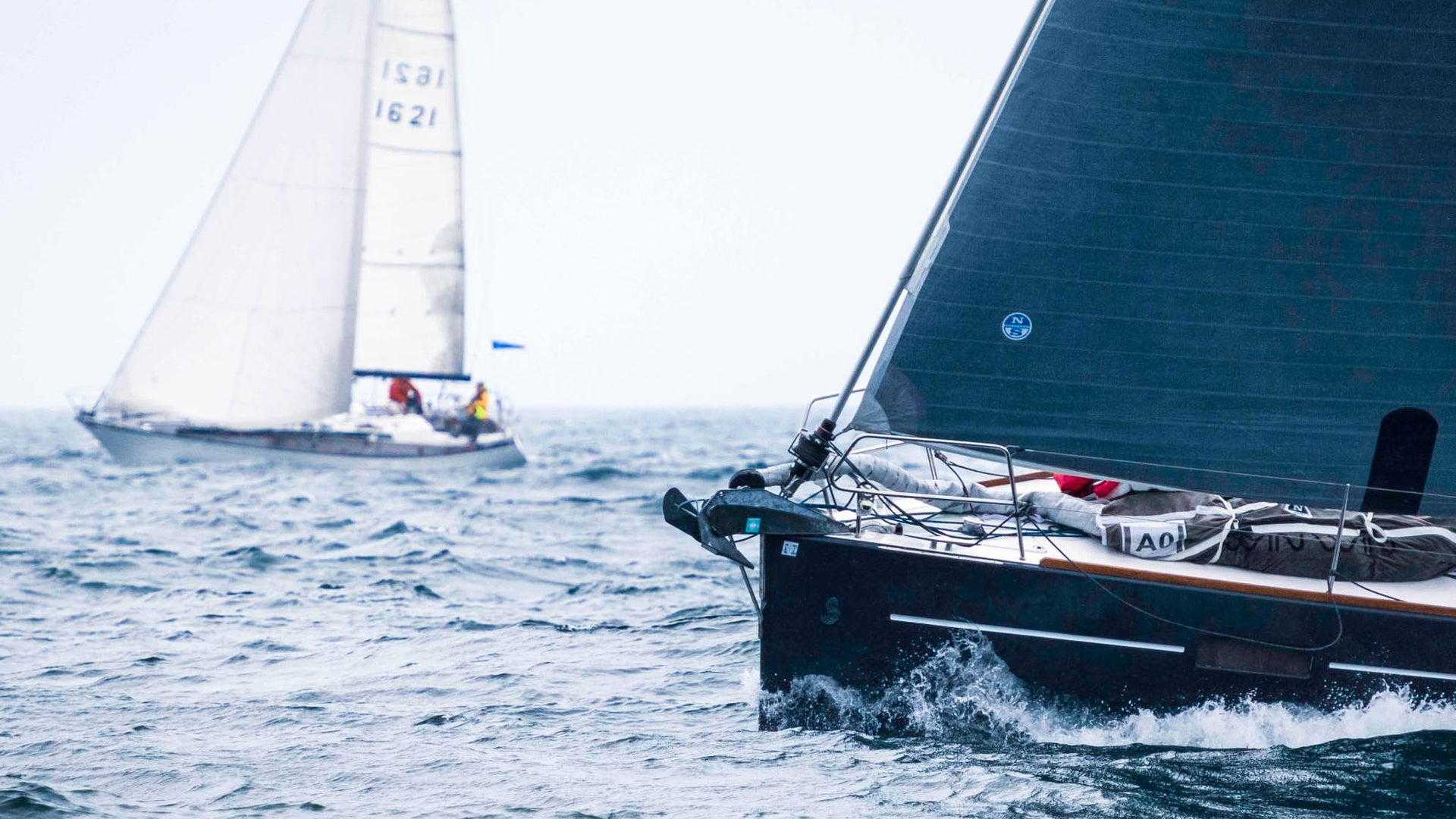
SAILS, SERVICE & LOCAL SUPPORT
NORTH SAILS IS OPEN FOR BUSINESS
But the fact is, we never closed
It’s still a complicated time in many places around the world, and a huge thank you to our entire North Sails team, clients, and friends who have pulled together in a way that is quite frankly remarkable.
Our summer calendar may not be filled with the normal regatta schedule, and local guidelines are certainly making us look at all aspects of our lives, but sailing remains a unique way to escape from day-to-day pressures on land. Many new and creative events are popping up around the world: single-handed, double-handed, social distance crewing. Our calendars are filling up with a unique style of racing, alongside day-sailing and cruising of course. Simply, “getting out there” is our new normal.
So what’s been going on at North Sails?
North Sails have 110 sales and service sites, and seven manufacturing facilities globally. We did have limited production for a time but are now running at full capacity at our manufacturing sites, and have been since mid-May. Some of our delivery times were pushed out a bit because of government restrictions at specific locations. Still, our manufacturing team has kept safety at the forefront while getting back on schedule. The great news is, we have already caught up to the point of taking new orders for delivery as early as July.
As always, your local North Sails sales and service team are on hand to help and to answer questions as we help get you back on the water. Pre-season service, measurement, new sails, tuning, sail checks, we are simply a phone call away. Our Certified Service facilities are open globally, with many facilities offering curbside pickup and drop off. Use our loft finder below to access contact details and get in touch with your closest North Sails.
We spend every minute of every day, making beautiful sails that improve your sailing experience. Take advantage of the North Sails expertise, and find out how much more fun you can have on your boat.
FIND YOUR LOFT TALK TO AN EXPERT REQUEST A QUOTE
READ MORE
READ MORE
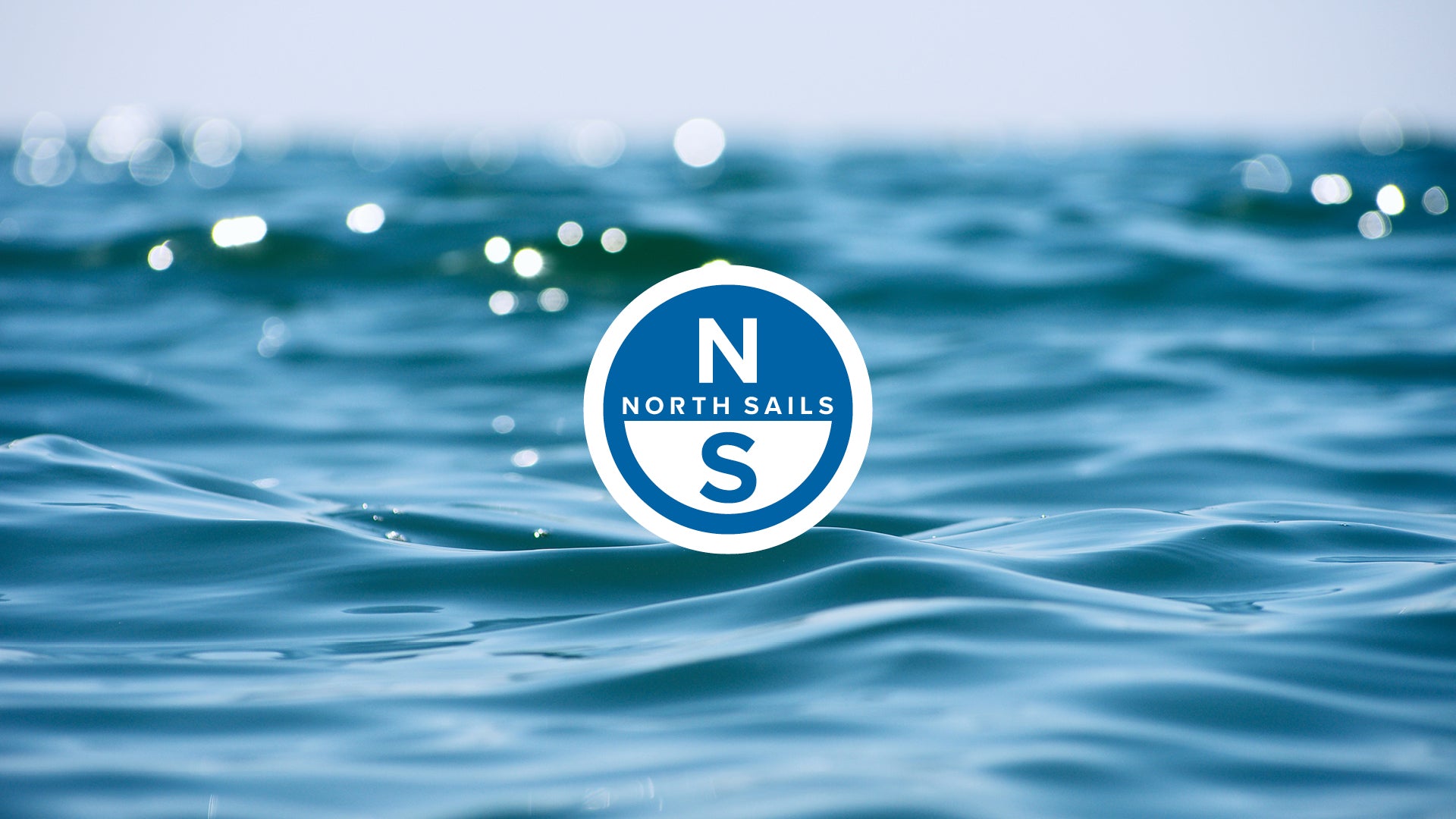
ELLIOTT 5.9 TUNING GUIDE
North Sails expert Derek Scott answers your Elliott 5.9 speed and boat handling questions. Your new North sails are designed with an “all around” philosophy in mind. As we learn more about the Elliott 5.9, or any other One Design Class, new information regarding setup, tuning and trimming techniques will be updated on the class page. Sign up online for our North Sails e-mail updates and receive all Elliott 5.9 news and updates directly by e-mail.
PRE-RACE PREPARATION
TRAILER & BOAT
Make sure when transporting the boat that the keel bulb always sits perfectly in the keel platform of the trailer. If the boat is sitting where she belongs on the trailer, the bulb should rest perfectly in the keel bed and the keel fin should sit free in the keel case. Packing pre-cut foam between the keel edges/sides and the keel box will help prevent any movement of the keel when trailing. Tying the fin forward and back is a good idea to restrict movement and it is also important to ensure that the boat stays forward against the bow guide when trailering.
HULL, KEEL & RUDDER
For travelling to regattas to ensure good general care of your boat, the investment of a trailer skirt is well worth the protection it affords.Make sure your hull, keel, bulb and rudder are clean and free of major dings and scratchers. Your rudder should be kept in a padded bag for protection.
MAST SETUP & TUNING
Before stepping the mast, check all ropes and halyards for general wear and tear and replace if any halyards are damaged. Check the wire stays for any fried strands or any nasty kinks. Pull the main, jib and spinnaker halyards down and tie off to pole ring. It is always good to have a windex at the top of the mast and now is a good time to attach it before the mast gets lifted.
INITIAL RIG SETUP
Most of the time, it is just the forestay which needs to be wound on as most boats will not need to adjust the side stays and lowers to drop the mast.
To measure mast rake, tie the end of the tape measure onto the main halyard. Pull it right to the top of the mast. Measure to the middle where the deck meets the transom – a good starting mast rake is 9.580m. From here you can see how the boat feels and performs and adjust the mast rake accordingly.
EXAMPLE:
If the rudder feels heavy and the boat is trying to round up into the wind (excessive weather helm), you may need to move the mast forward. On the other hand, if the rudder feels very light or the boat is trying to bear off (excessive lee helm), you might need to rake the mast back. In the Elliott 5.9, it is important to have a small amount of weather helm as this helps with your height and pointing in the light winds – just be careful it is not too much in the windy conditions.
BASE MAST TUNE SETUP
To set the base rig tune, use a PT-1 Loos Tension Gauge to check tensions on the side stays and lowers.
Firstly, adjust the side stays to 40 on the tension gauge and then set the lower shrouds to 25 (be sure to go back and double check the uppers and then the intermediates in the process because they will both change when you tension or de-tension one of them).
TUNING CHART (New Loos Gauge Pro Model PT-2):
Step
Windspeed (kts)
Uppers (PT-2)
Forestay (PT-2
Forestay turns from Base
Lowers (PT-2)
Lowers – turns from base
-1
0-5
38
38
-6
25
+6
0
5-10
40
40
0
25
0
1
10-15
38
38
3
22
-3
2
15-20
36
36
6
20
-6
3
20+
34
34
9
20
-9
SAIL TRIM
MAINSAIL AND TRAVELLER
In light airs keep the traveler about 200-300mm above the centre line and make sure the mainsheet is eased enough so the telltale on the top batten is flying nearly all the time. This will ensure your boom will stay on the centre line and give the boat good height. Once your crew is sitting on the side, the traveler should be in the middle and you will be able to sheet the mainsheet a bit harder whilst keeping an eye on the top telltale – it should now be flying 50% of the time.
In the windy conditions when the crew is hiking hard, the aim is to keep the boat as flat as possible – remember, flat is fast! Use the traveler when the boat heels over and in the big gusts you might have to ease the mainsheet. If the mainsail starts to back, put the traveler higher, and ease the mainsheet. Twist is your friend – when in doubt, ease it out to get the boat going through the water. Keeping the mainsail trim soft and very twisted to keep the boat sailing flat is often fast.
It is important to experiment with different heel angles and mainsheet tension in different conditions to see what works best for your boat and crew.
OUTHAUL
In light to medium winds, the Elliott 5.9 likes to have some power in the lower section of the mainsail, so the outhaul should be eased 20-30mm in from the black band. In heavy airs, aim to flatten the sail by pulling the outhaul out to the black band, especially in flat water. In rougher seas, it can be fast to keep the outhaul a bit looser to make the main fuller in the lower section.
CUNNINGHAM
The cunningham on the Elliott 5.9 acts as a depowering tool and is thus not used until approximately 12 knots. In this wind, it is used until wrinkles in luff are just removed. Above 15 knots, the cunningham can come on 75%.
VANG
The vang is used upwind as soon as the boat is overpowered. At the early stages of being overpowered, simply snug the vang to help induce mast bend and flatten the mainsail. As the boat becomes increasingly overpowered, pull the vang harder to flatten the mainsail.
When sailing downwind, adjust the vang so the top batten telltale is always flowing; twist is generally good.
When sailing upwind in light airs (0-8 knots), keep the vang loose. In 8-15 knots, pull on to remove all slack (just snug). Above 15 knots, pull on firmly.
REMEMBER to let half of the vang off when you get to the top mark in windy conditions or the boat will struggle to bear away.
JIB TRIM
The jib on the Elliott 5.9 is a high aspect sail (tall and skinny), making it very sensitive to small adjustments in jib sheet tension. Tightening or easing the jib sheet by just 15mm can have a big effect on boat speed and pointing.
Generally, in light to medium breeze, set the jib lead so that when you are luffing slowly into the wind the luff breaks evenly. As the wind builds, move the jib lead up or jib car aft to flatten the foot and twist the head of the jib to depower.
In the windy conditions, if the mainsail is backwinding and flapping, this could be because:
1. The jib sheet is too tight or the jib lead is too low, meaning the jib leech is too closed and thus back winding the main.
2. The main traveler is too low, closing the slot between the main and the jib. We have placed a telltale on the upper leech (near the spreaders) of the jib to help you judge how tight or loose the sheet should be. The general rule of thumb is to trim the sheet hard enough so that the upper leech telltale is just on the edge of stalling, but never stalled. Just as with the mainsail, it will be easy to stall the telltale in light air and very hard to stall in heavy air even with the sheet trimmed.
SPINNAKER TRIM
Always sail your North spinnaker with a 10cm – 20cm curl in the luff making careful concentration necessary! Use short, smooth, in and out motions on the sheet to keep the spinnaker trimmed correctly, trying to not jerk the sheet if the spinnaker begins to collapse.
Set the pole so it is nearly perpendicular to the wind. A telltale on the topping lift a foot up from the pole works great as a reference. Keep the clews even at all times through adjustments to your topping lift (pole). If the top of the spinnaker breaks high first, lower the pole. If the bottom luff breaks first raise the pole slightly. In light, puffy conditions, the pole height will be adjusted nearly as much as the sheet and guy.
IN CONCLUSION
We hope all of the tips we mentioned are helpful to your Elliott 5.9 sailing program. Please get in touch with the North Sails Elliott 5.9 Class Expert, Derek Scott, for further details and help.
KEY POINTS
Always sail the boat as flat as possible, except in very light air where a slight louward heel is advantageous
Do not be afraid to change settings if you are slow
Set up a tuning chart and use it
Have open and positive communication on board
Sail fast and have fun!
READ MORE
READ MORE

LET'S TALK ABOUT SPEED WEBINAR
LET'S TALK ABOUT SPEED WEBINAR
Trimm Tips
Daniel Schroff, Inhaber der Firma North Sails Schweiz GmbH, spricht am 27. Mai um 19:30 Uhr CEST über den Segeltrimm, und zwar von den Grundlagen bis zu den Feinheiten. Es geht dabei nicht nur ums Regattasegeln, sondern ihr bekommt einen Trimm-Refresher. Moderiert wird das Webinar durch Claudia Böhm, die eure Fragen aus dem Chat an Daniel weiterleitet.
Wir freuen uns auf viele Teilnehmer und eure Fragen. Natürlich steht euch das North Sails Schweiz Team jederzeit für Fragen, Anregungen oder Bestellungen mit Rat und Tat zur Seite.
Anmelden
READ MORE
READ MORE
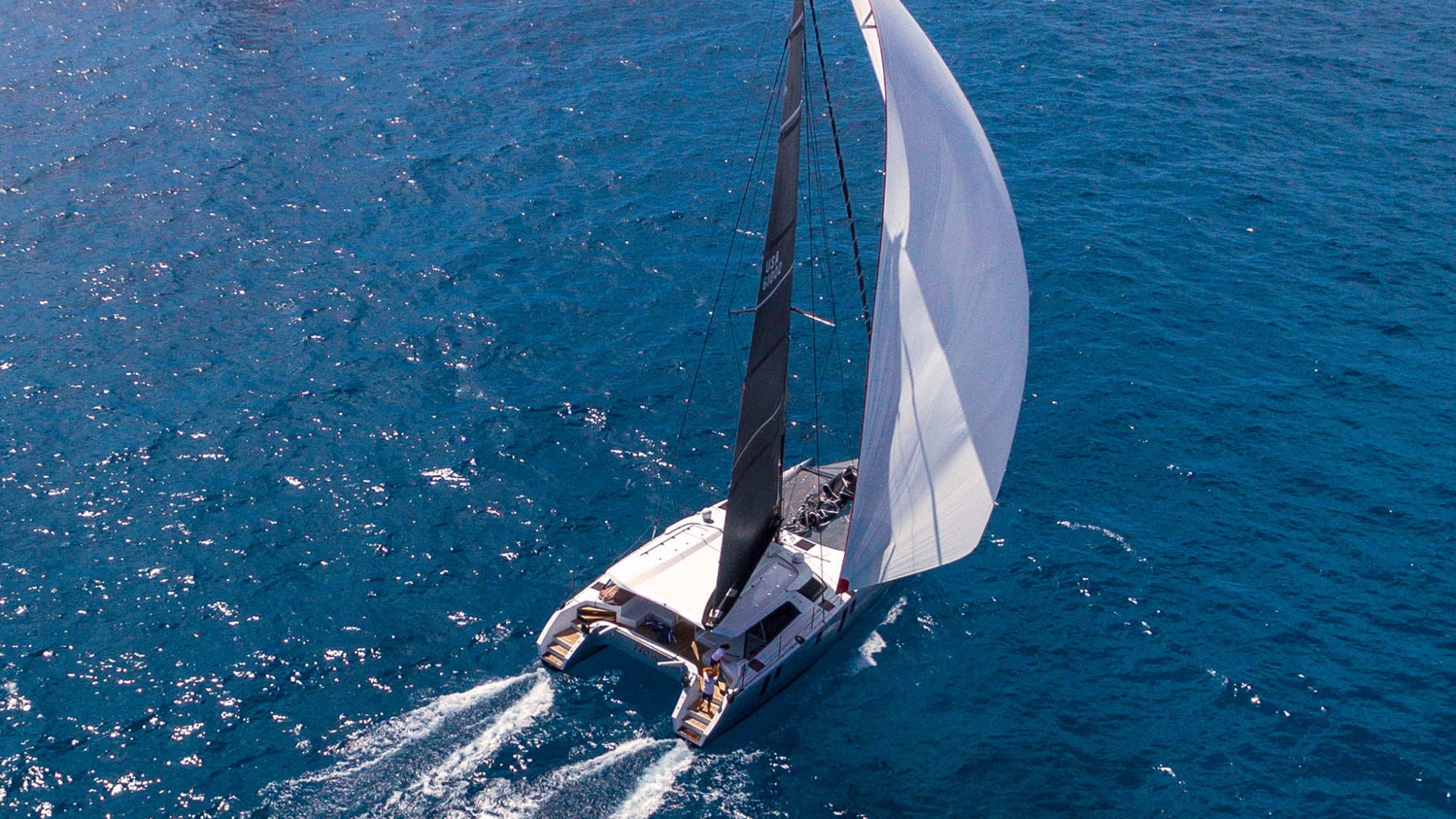
MULTIHULL DOWNWIND SAIL DESIGNS, HANDLING OPTIONS AND TECHNIQUES
CRUISING YOUR MULTIHULL
More On Downwind Sail Designs, Handling Options and Techniques
Multihull cruising has become a lifestyle by even the most competitive racers. These boats are great platforms for the outdoor living we enjoy in our moderate climate as well as being easy to cruise short-handed by couples. North Sails cruising experts share how techniques vary on multihull cruisers, and provides his tips on how you can make the most of your next sail.
The design for these boats has evolved to maximize cabin space with taller, more powerful rigs and self-tacking Jibs. These sails and systems have significant sail handling benefits with tacking becoming a straightforward process; however, by not overlapping the mast like a traditional genoa, these sail plans often lack area leading to sluggish performance in lighter conditions. At North Sails, our designers have been working hard to offer solutions for all styles of multihulls that improve performance but still allow ease of handling.
Understanding Your Usage Chart
Plots change depending on the performance of the boat. Faster boats may not see the broader angles that the G2 offers. A stable flying G Zero can be designed with enough overlap to gauge into the G One zone.
Usage chart for a Lagoon 52
How do you explain the difference?
Determine the mid-girth of the sail. Using your usage plot, you’ll see the ranges of each sail, determined by apparent wind angles and wind speed.
The Code 55 Screecher
For a boat that does not have an overlapping Genoa, the Code 55 screecher is the first sail to consider.
This sail is set from the bowsprit and is constructed in laminate materials to mimic a traditional Genoa in light winds and can sail within 15 degrees of the Self-tacking jib TW angles for a considerable gain in light air performance.
The Code 55 is engineered to cope with the considerable loads generated when being used close to the wind even in light conditions with the added benefit that they can then be used at wider angles as the wind increases, increasing the range of use considerably. Recommend options are a high-quality torque cable with a bottom-up furling system. A clew velcro to stop accidental unfurling gives an extra level of security and safety. If your preference is to store the sail hoisted, a lightweight UV can be added.
📸 Amory Ross
The G-Zero
The G Zero is the most popular cruising multihull downwind sail offering great versatility over a wider range of wind angles.
The G zero is a best-of-both-worlds sail for ease of handling and successful downwind miles. G Zeros feature a deeper shape and wider girth compared to a screecher. they are generally designed to sheet outside the main shrouds and excel at the beam close to reaching. G Zeros are compatible with both Top-Down internal and bottom-up furling systems or can be used with a snuffer. These sails can have lightweight UV strips, but because of their lightweight, we recommend lowering the sail when not in use and have no UV for the optimum performance. Cruisers sometimes use these sails without the Mainsail hoisted, and utilizing the width of the multihull and tweaking the sheet forward and outboard can achieve surprisingly low sailing angles.
📸 Amory Ross
The G2 Asymmetrical Runner
For Cruisers wanting the ultimate in downwind efficiency but less focused on ease of use, the A2 Asymmetrical Spinnaker is the answer!
These sails are designed full in-depth and girth to achieve the best-running speed and VMG to cover the most miles. Due to being specifically optimized to deeper sailing angles, we would suggest a seamless inventory should have an additional reaching option to fill the gap between the headsails and this sail. For short-handed ease of use, we recommend either a spinnaker Snuffer or a Top-Down Furling system.
The use of a tweaker or handy billy system to alter the sheeting can significantly increase the range of sailing angles and wind ranges. If the upper luff is folding first as you ease the sail and run deeper, you should deflect the sheet forward and outboard to stabilize the sail, so the luff breaks evenly, particularly important when using under autopilot for minimal trim adjustments. It is common for cruisers to use these sails with no Mainsail hoisted but always remember to use the Main topping lift and mainsheet combination as an additional backstay for added security and support to the mast.
The Tweaker or Handy Billy for Cruisers
These are reasonably lightweight purchase systems, typically ranging from 2:1- 6:1. They have a range of uses aboard any boat, but for downwind sails with a fixed sheeting position, they give the ability to change the twist and set of the sail easily while still sheeting the main load through the standard sheeting block and winch location.
The system works best with a snatch block that allows the lowest possible friction for the deflecting sheet; however this can be as simple as a friction ring, snap shackle, or carabiner.
In the simplest of forms and even without a purchase system, once you get to know your deep sailing mode requirements, this tweaking can be achieved by a fixed webbing or rope length forward of the stay and can be set up before the sail is even hoisted. A purchase system that can be adjusted under load, however, will give the best performance and stability as well as doing double duty to act as a boom preventer against an accidental gybe and also keep the Mainsail stable if you don’t have a vang.
📸 Amory Ross
Sailing angles and techniques for best handling outcomes
Whether it be a spinnaker Snuffer or either a top-down or bottom-up furling system, there are things you can do to make the process of sail setting or retrieval as successful as possible.
The first thing to establish is the best angle to have the boat heading in relation to the true wind. This will be a sliding scale through the wind range with a closer angle required in lighter winds and a deeper angle in heavier winds.
If you are too close to the wind with any of the above options, the sail will deploy too rapidly and not at a controlled pace, causing higher sheet load and flogging of the sail, and making sheeting -in much more drawn out and labor-intensive.
📸 Amory Ross
The same goes for the furling away or snuffing of a sail; the heading must be far enough away from the wind to relieve the pressure in the sail. With a Snuffer, there is plenty of sheet that is perfect to have pre-set on the winch or in a tailor or cleat for the deployment of the sail. Once you have decided upon the best angle of sail, you should experiment with the sheet setting, and you will come to a conclusion that in some wind ranges to see the sail fill with air and set close to the required sheet setting with only a small trim on required. If you are unfurling a sail by being deep enough, you will be able to release the furling line and tail in the vast majority of the sheet without significant load. From this point, you can then change the course and trim the sail as required without flogging. At the same time, sailing an angle that is too deep could make the sail unstable and risk either accidental gybe or wrapping of the sail fabric around the forestay.
Furling line paths that are simple and run cleanly are a must for the best outcomes
Consider furling or snuffing for gybing, especially in higher winds, and decide to take sails down before the bad weather hits, not when you are already in the grips of a storm!
My suggestions for A2 setting and retrieval angles are as follows if you log these from your own experiences on your boat and always go back to them, your downwind sailing will not only be more enjoyable, but you will prolong the life of your sails and rigging.
0-5 knots- Heading at 145 degrees of true wind
5-12 knots- Heading at 155 degrees of true wind
12-18 knots- Heading at 165 degrees of true wind
Above 18 knots of wind most Multihulls will not require an A2 to achieve great downwind VMG.
Other suggested valuable information to log and keep on hand to refer to are;
When to add the reefs in the Mainsail
When and how much tweaker to use in various wind ranges and angles of sail
When to partly furl headsails and so on
Through consultation with your North Sails Multihull Expert, we can provide you with a range of downwind sail options to match your needs.
📸 Amory Ross
READ MORE
READ MORE
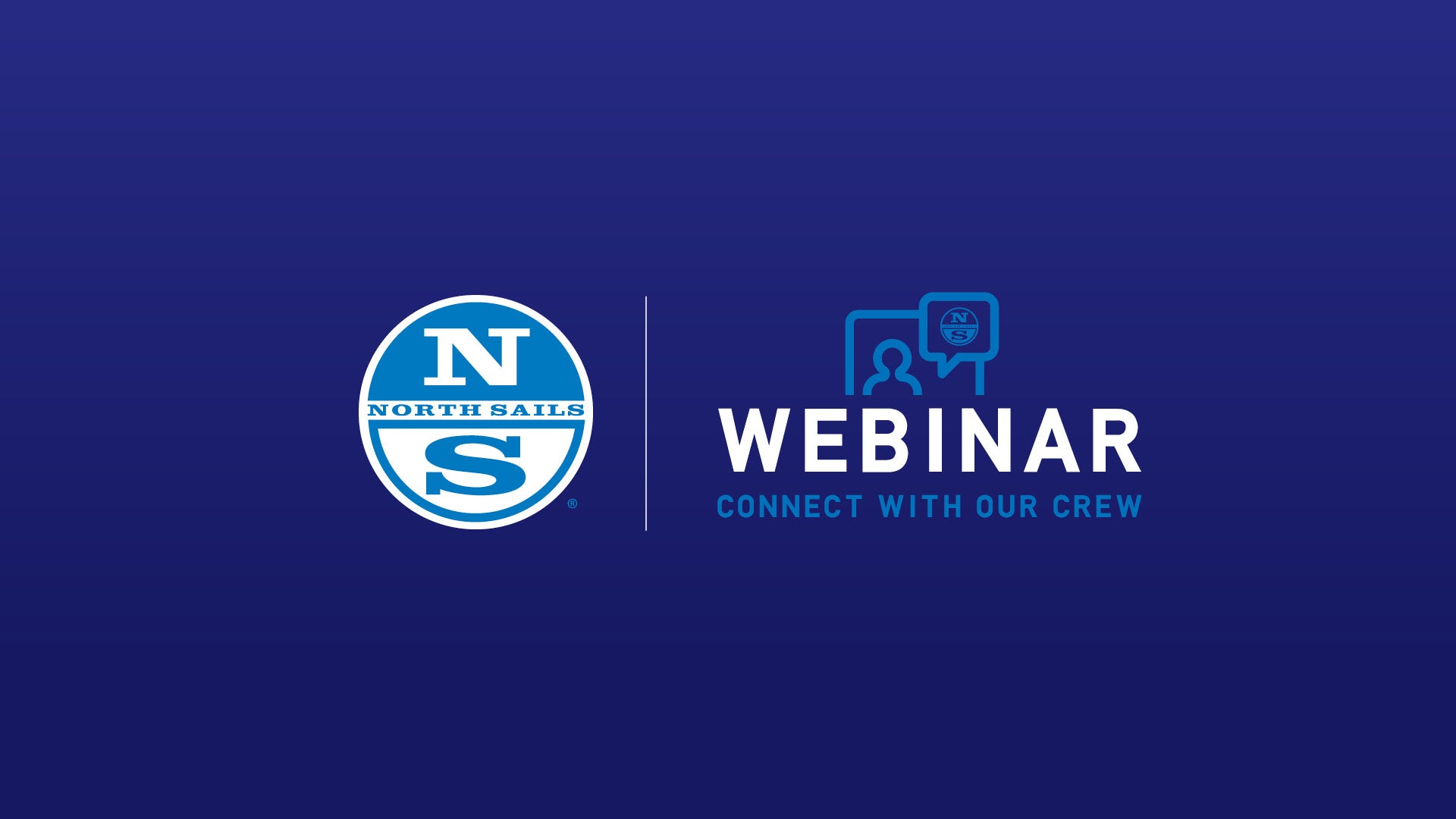
LET'S TALK J/111 | OPTIMIZE YOUR HANDICAP
LET’S TALK J/111
Optimize Your J/111 Handicap
North Sails J/111 experts Seadon Wijsen, Jeremy Smart, Allan Terhune, and Jack Orr combine their knowledge to bring you a webinar on how to optimize your J/111 racing experience. With multiple podium finishes under their belts, they have acquired a powerful collection of tips and tricks to maximize your boat speed and increase your performance in this competitive one design fleet.
Topics covered include:
1:39 Kite Hoist
6:14 Downwind – Hoist and Set
12:43 Heavy Air Bottom Mark Rounding
15:30 Rig Tuning
20:17 Handicap Sailing with the J-111
23:15 Sail Inventory
28:19 Outboard Leads
34:13 HELIX 0A expected wind targets
35:09 Code sails choices
48:40 What Is HELIX Load Sharing Technology?
52:15 Bobstays & Code Zeros
55:36 Tweakers & Code Zeros
57:41 Spinnaker Staysail
1:02:54 Jibtops
Learn more about North Sails fast J/111 designs.
READ MORE
READ MORE

TEAM SPOTLIGHT: MIRO BALCAR
TEAM SPOTLIGHT: MIRO BALCAR
A Discussion With Everyone's Favourite Frenchman
Hugh Beaton from North Sails in Toronto chats with Quebec area representative Miro Balcar on his sailing career and what motivated him to join the North Sails team.
What was it that attracted you to become a sales rep for North Sails?
Love the sport, want to learn, appreciated the company's quest to build the best sail. What motivated me to become a North Sails rep. was that after many years of performance sailing on Lake Champlain, there were only a few sailors purchasing from North Sails a product developed using advanced technology well suited for any type of sailboat .
It has been a very good 10 years - did you have any idea that it would be so successful? Over 400 sails since we started our partnership on Lake Champlain is quite an accomplishment.
Quebec - Lake Champlain territory allowed me to work on many interesting projects in cooperation with Beneteau dealer Gosselin Marina, mainly with support of Guy, Christina and Martin Gosselin.
The market seems particularly interested in our Performance Cruising products and wanting to get the most out of their boats. What is the ideal inventory for a 45 ft cruiser that wants modern sails to give the boat a boost in performance?
To highlight some of these was supplying 3Dl sails for 5 Beneteau First 36.7 and First 40 and lately the new generation of Beneteau Oceanis from 40 to 58 feet. This new line of boats have modern sail plans benefiting greatly from three choices of the North Sails product line: NPL Tour, 3Di Nordac or 3Di Endurance and introducing Vertical Batten option to the Mainsail and 105% Jib helped profoundly to the sailing quality of these boats.
I have worked with you on some very interesting projects including several of the new Beneteau's that require a Code Zero. How important do you think this sail is for the latest generation of cruisers?
My customers are also interested in purchase of Code 0, which they discover makes these boats sail well in lighter wind conditions and because of the furling system we facilitate to sell with the Code 0 , it is very easy to use by the crew of husband and wife.
Lake Champlain is certainly a beautiful cruising ground - for you, what is the perfect day on the water?
My perfect day on the water is sailing my X yacht 46 in light wind conditions in around 5 kn TWS, in flat water, without any preconceived destination where there is quiet anchorage waiting to enjoy nice single malt whisky with good friends , before making plans for tasty meal.
READ MORE
READ MORE

PHRF SPRING REFRESHER
PHRF RACING SPRING REFRESHER
Conseils de mise au point pour les courses de nuit de nos experts
📸 Cate Brown
Les experts en voile Tom Castiglione et Jack Orr basés à Milford, dans le Connecticut, ont organisé un webinaire PHRF Spring Refresher qui aidera tout coureur de semaine / guerrier de fin de semaine à améliorer son jeu pour la prochaine série. Voici quelques points à retenir du webinaire qui s'appliquent à tout coureur de club.
Comment obtenir un réglage optimal du gréement.
Vous devriez utiliser le même processus à chaque fois que vous réglez de votre gréement pour des conditions données. Voici comment vous assurer de bien faire les choses, à chaque fois.
Notez tous vos paramètres: votre réglage de base, petit temps, moyen, brise
Familiarisez-vous avec votre guide de réglage et soyez à l'aise pour ajouter / reprendre des tours à quai et sur l'eau lorsque les conditions changent
Pendant que vous êtes au ponton, rendez le mât droit en ajustant les diagonales et les haubans. Gardez à l'esprit que vous essayez simplement d'obtenir votre réglage de base.
L'utilisation d’un tensiomètre de type « Loos » vous aidera à rester sur la bonne voie avec des ajustements incrémentiels. Fixez votre tensiomètre à environ 2 mètres du pont (au niveau des yeux)
Dupliquez vos paramètres au fur et à mesure et mesurez toujours au même endroit à chaque fois
Si vous avez passé une belle journée sur l'eau, prenez-en note. Il est bon de revenir au réglage de base à la fin de chaque journée, mais assurez-vous de savoir où vous vous trouviez dans ces conditions dans lesquelles vous avez bien navigué afin de pouvoir répliquer à nouveau ces paramètres le jour suivant.
Les outils de réglage varient pour des bateaux de tailles différentes. L'utilisation de ruban électrique pour marquer vos barres de flèches et un marqueur pour que vous puissiez prendre des notes sur le pont aideront vos régleurs à trouver le bon réglage sans se poser de questions.
Comment le réglage du gréement influence-t-il la forme des voiles?
Gréement mou - Voiles plus creuses
Gréement tendu - Voiles plus plates
Essayez d'équilibrer les deux voiles
Un pataras réglable facilement vous aidera à affiner vos voiles sur l'eau.
En savoir plus sur la façon d’équilibrer votre plan de voilure.
Changer de braquet
Il existe quatre modes de navigation. Ces modes sont importants à comprendre pour que vous puissiez « allumer » lorsque vous en avez l'occasion, ou maintenir votre cap lorsque vous en avez absolument besoin.
Mode bas:: conçu pour générer de la vitesse. Chute ouverte de 4-5cm par rapport au réglage de base sur les barres de flèches. La drisse est relâchée, le pataras est mou, le chariot de GV est sur l’axe-bateau ou légèrement en dessous.
Mode normal: ne pas se battre pour préserver son cap, naviguer sur sa meilleure VMG, naviguer sur la cible. Chute ouverte 1-2 cm par rapport aux barres de flèches.
Mode haut:: vous avez besoin de hauteur (cap), limite lay-line, un bateau sous le vent que vous essayez d'éviter. 0 cm du réglage max sur les barres de flèches = chute tendue. La drisse est tendue, pataras (continuez à pomper le pataras), le chariot de GV est sur l’axe-bateau ou légèrement au-dessus, la latte haute alignée sur l’axe ou légèrement en dessous de la bome.
Mode de-power: pataras tendu, drisse tendue, hale-bas tendu pour garder la bome basse. Si vous voyez des plis provenant du mât se diriger vers le point d'écoute de GV, vous avez trop cintré votre mât et trop de pataras.
Petit conseil: utilisez vos barres de flèches comme point de référence. Marquer vos barres de flèches au préalable vous aide à atteindre chaque mode, rapidement.
📸 Paul Wyeth
Déplacement des poids
Attribuer à un membre d'équipage la gestion de ceci pour chaque manœuvre
Gardez votre équipage proche au rappel
Dans le petit temps, envoyez votre équipage en bas et en avant. Si vous restez sur le pont, restez bas!
Assurez-vous que votre équipage reste au rappel pendant les passages de marque. Il est essentiel de garder tout le safran dans l’eau! Trop de gite réduit l’efficacité de votre quille, ce qui vous fait dériver. Cela peut également vous forcer à lofer dans une risée.
Choquez bien les voiles à la marque au vent, pour vous aider à abattre. Si vous utilisez bien votre poids et vos voiles, vous ne devriez pas avoir besoin de beaucoup de barre pour diriger le bateau.
Attendez que le bateau soit stabilisé avant de commencer à ranger le pont, sauf si vous vous préparez à une manœuvre rapide.
Au portant, l'équipage doit avancer dans le petit temps. Si le vent est plus fort, faites reculer l'équipage ; assurez-vous de ne pas avoir l’étrave trop profonde ou au contraire trop cabrée. Le placement des poids sur le pont peut aider votre bateau à mieux garder le bateau à plat et à être prêt lorsqu'une risée frappe.
Si vous êtes à l'aise, vous vous trompez!
📸 Cate Brown / BIRW 2019
Communication
Il devrait y avoir un flux constant de communication entre les régleurs et la barre. Un dialogue constant maintient les voiles réglées ensemble et en même temps. Si vous êtes à la recherche de plus de puissance, le régleur de GV et celui de voile d’avant doivent être informés afin qu'ils puissent régler / choquer / border en conséquence. Si l'un est choqué et que l'autre est complètement bordé, ce n'est pas rapide. En savoir plus sur la communication avec l'équipage et la chaîne de commandement appropriée à bord. Learn more about crew communication and proper chain of command onboard.
Que faire au ponton:
Nettoyez votre bateau. Si vous n'avez pas besoin de ces diverses choses pour courir, vous n'en avez pas besoin sur le bateau!
Vérifiez votre coque. Les algues et l'usure de la coque sont une perte de vitesse. Même peu fait la différence!
Assurez-vous que vos instruments fonctionnent correctement. Vérifiez vos instruments pour vous assurer qu'ils sont correctement calibrés et assurez-vous que tout le monde à bord sait comment les utiliser. La dernière chose que vous voulez, c'est que quelqu'un appuie sur le bouton «off» lorsque vous essayez de marquer 5:00 minutes ou bien cibler la mauvaise extrémité de la ligne.
Réglez votre gréement. Sans un mat correctement réglé, vous ne pourrez pas contrôler le comportement de celui-ci sur toute la gamme des conditions de vent. Heureusement, le réglage des gréements est un processus pas à pas simple pour les gréements en tête de mât ou fractionnés. Apprenez-en plus sur la façon de régler efficacement votre gréement. Learn more on how to effectively tune your rig.
📸 Richard Mark Dobson, Adina
Reacher & trinquette
Une trinquette de genois peut être installée à l'intérieur d'un foc
Un Reacher peut également être conçu pour s'installer sur le beaupré, ce qui ajoute des performances
Modifications du beaupré pour simplifier votre navigation (pour le côtier et l'offshore)
Idéal pour les angles lorsque vous ne naviguez pas souvent plein vent arrière.
Si vous naviguez en banane à 15 nœuds, vous aimerez peut-être mieux l'option symétrique.
En général, passer à l’asymétrique peut augmenter les performances du bateau, augmenter la vitesse, mais tout dépend du type de parcours que vous naviguez et cela indiquera ce qui vous convient le mieux.
Il est essentiel de s'entraîner avant l'heure de la régate. Lorsque vous arrivez dans votre zone de course, que pouvez-vous ajouter à votre check-list d'avant course?
Passez une journée à debugger les diverses manœuvres
Chronométrer la ligne de départ
Spinnaker envois et affalages
Virements et empannages
Utiliser votre poids d'équipage pour aller vite
Les bateaux qui s’entrainent gagnent les courses!
Missed our PHRF Spring Refresher webinar? Catch up and learn more from our experts on how you can enhance your performance on your next weeknight race / weekend regatta.
Watch PHRF Webinar
Have questions about optimizing your boat for weeknight racing? Contact PHRF experts Jack Orr or Tom Castiglione.
Email Jack Email Tom
Want to know how to choose the best sails for your next club race?
Learn More
READ MORE
READ MORE
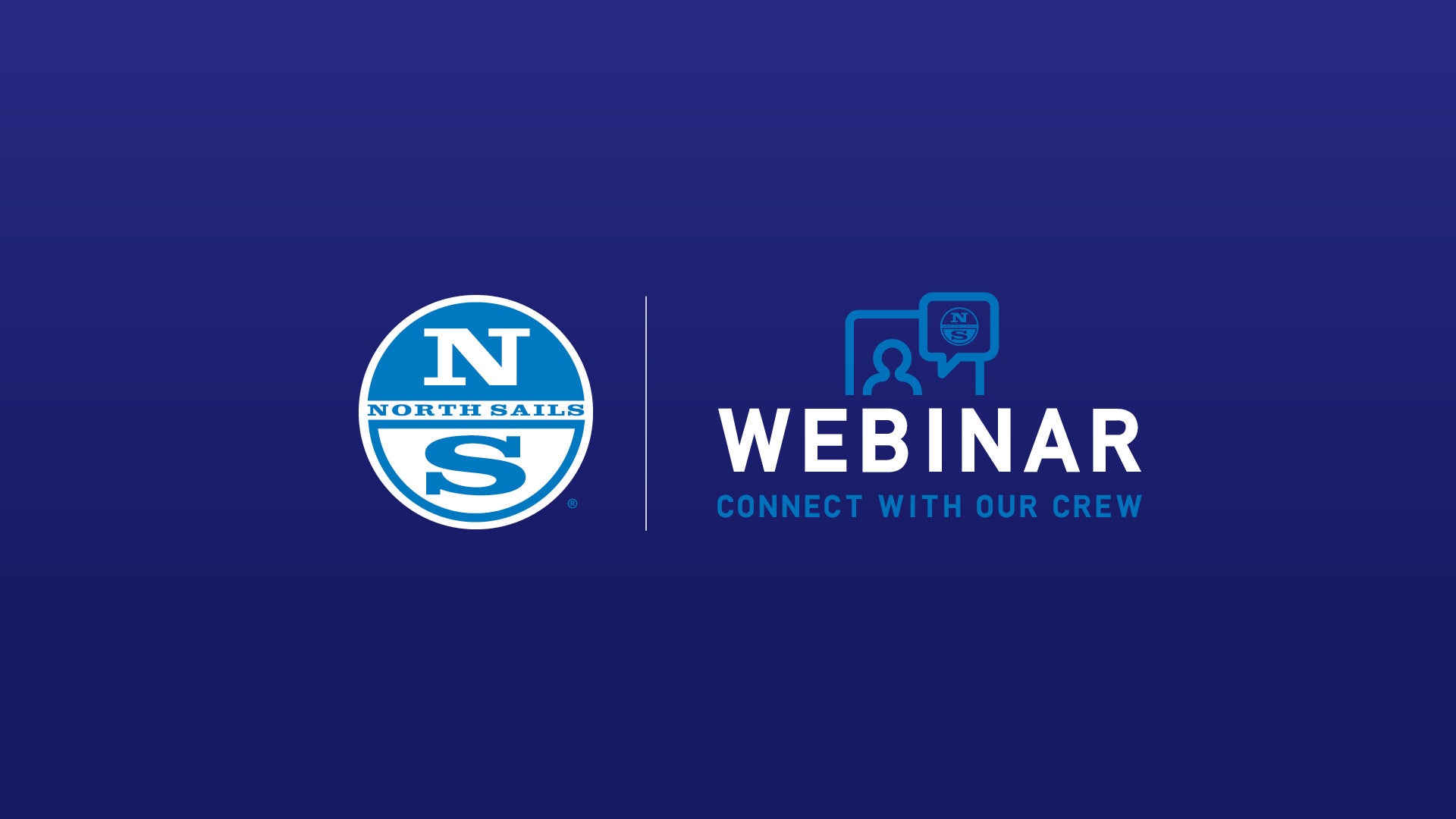
LET'S TALK J/70 | DOWNWIND BOAT HANDLING
LET’S TALK J/70
Downwind Boat Handling
With visual support from images and video, North experts Allan Terhune, Eric Doyle and Alex Curtiss analyze downwind techniques in different wind strengths, including displacement modes and planing in heavier air. Pick up new techniques to improve your J/70 racing experience!
Topics covered include:
1:26 – Setting the J/70 spinnaker
12:50 Soak VMG Jibing
21:00 Jibe Kite to a Wing
32:31 Jibing boom to wing on wing
41:40 Lazy Planing Jibe
47:25 Planing Jibe
56:23 Blow Through Jibe
1:01:28 Take Down
Learn more about North Sails fast J/70 designs.
READ MORE
READ MORE
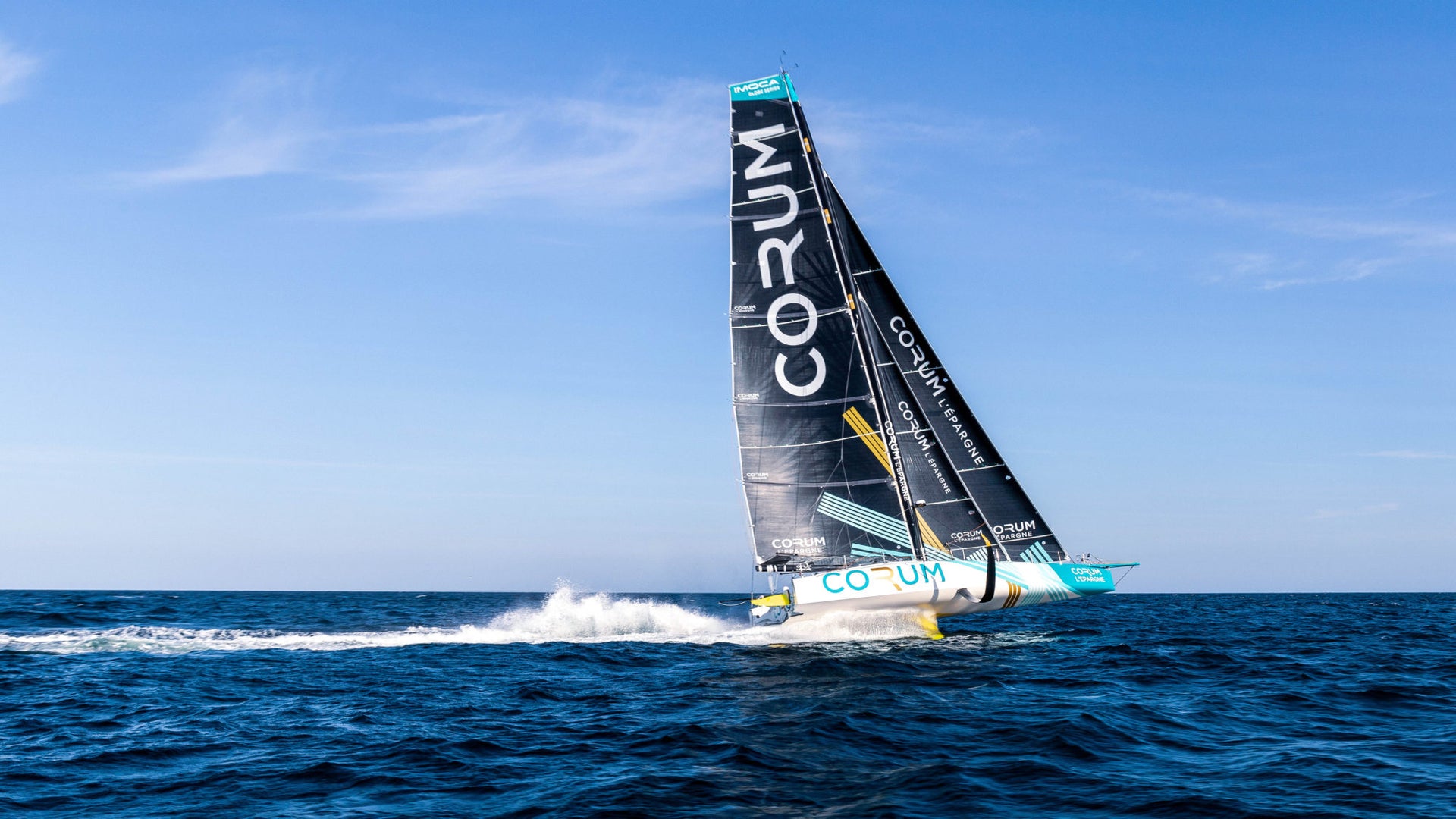
IMOCA CORUM CELEBRATES HER LAUNCH
IMOCA CORUM L’ÉPARGNE CELEBRATES HER LAUNCH
First Impressions From North Sails France
📸 Matthieu Hacquebart / CORUM L’Épargne
After a year of construction and the launch in Port-la-Forêt (Britany, France) last week, CORUM L’Épargne, French skipper Nicolas Troussel’s brand new IMOCA, made her first tacks on last Saturday equipped with North Sails to reach her home port of Lorient la Base (Britany, France). The latest foiler designed by Juan Kouyoumdjian and built by Michel Desjoyeaux’s Mer Agitée will soon be fitted with its foils. Nicolas Troussel is looking forward to starting the reliability phase, getting up to speed and familiar with his new boat. Here are the first impressions since the launch.
A Colorful Grand Prix Monohull
“The launch of CORUM L’Épargne was both a great moment and a relief, as we were keen to move on to a new stage in our campaign, to finally be able to sail and test the boat’s performance once the foils are fitted,” expressed Nicolas Troussel, the two-time winner of the Solitaire du Figaro (2006 and 2008), and one of the 37 candidates to take part in the 9th edition of the Vendée Globe. “The boat is in line with what was expected in terms of cockpit ergonomics, deck shape and maneuvers.”
“We’re proud of this boat,” adds Greg Evrard, Director of CORUM L’Épargne project. She is singular, her colors are beautiful and harmonious. There’s not much that hasn’t been thought out in her design. Nicolas was involved in all phases of the project, from hull construction to sail design, to create a boat that resembles him. From the outset, we considered strong biases to respect Nicolas’ choices.
“There’s nothing that has not been thought of for this boat.”
This launch represents a beautiful chapter in our project, which is coming to an end after one year of construction,” continues Greg Evrard. We’re going to write a lot of other pages now. The next essential step is to spend as much time on the water as possible, with priority being given to the boat’s reliability and the validation of the technical choices, including the final inventory of sails by the end of June.”
Also, in June Nicolas will have to complete his qualifying course for the Vendée Globe, a 2,000-mile course off the coast of Brittany, which has to be validated by the race organizers. This will be followed by a first race on the water at the start in Les Sables d’Olonne on 4th July, which should bring together all the racers entered in the Vendée Globe.
Fully Suited with North Sails
CORUM L’Épargne is the latest new generation IMOCA boat to be launched, the eighth since the previous Vendée Globe and the seventh to be equipped with a complete 3Di wardrobe from North Sails. With five and a half months to go before the start of the Vendée Globe, nothing should be left to chance for Nicolas and his team to make the most of this precious time. That is why, right from the start, the team has incorporated a strong time constraint into the project with the aim of strengthening its ability to adapt and its agility. “As far as the sails are concerned, it’s a real upstream preparation work which was done in the initial phases with strong choices made,” explains Evrard. “We anticipated the sailing part, taking into account this time constraint. This first set of sails will enable us to tackle the following stages with serenity.”
📸 Matthieu Hacquebart / CORUM L’Épargne
The shape of the sails, a crucial parameter for the balance of the boat
Nicolas Troussel has been actively involved with Nicolas Lunven, sailing and boat performance project manager for CORUM L’Épargne in the design of the sails. The first exchanges with Quentin Ponroy and Gautier Sergent of North Sails started a year ago. “Sail design is a subject that interests me and is an integral part of the performance as well as the feeling of the boat when sailing,” says Nicolas Troussel. Even though the boat was still under construction, we used our experience and the tools put in place by the designers. We tried to project our ideas and imagine ourselves on the boat to come up with an inventory of sails that meet all the sailing conditions. It also had to be in line with my sailing style and the Vendée Globe program. All the choices were made with that in mind.”
With the addition of foils, which accelerate the boat, the shape of the sails has become an even more important parameter than before for the boat’s balance,” explains Nicolas Troussel. For the moment, the first impressions are in line with the specifications. The triangulation as well as the shape of the sails are satisfactory. We’ll have to confirm our initial choices with numerous sessions on the water to perfect the sail trim and consequently the boat’s balance. And this selection phase remains tricky even if the set of sails is limited to eight (including the storm jib) and it is all the trickier for downwind sails, which require more complex thinking,” continues Nicolas. Indeed, there are many compromises to be made. Sometimes they are small details, but 10, 20 or 30 meters squared difference between the sails can change the game. It’s on the water that we will definitely validate our selection. We will still have the possibility to adjust, but without considering major modifications.
In the approach to sail design for CORUM L’Épargne, the goal was not to create radical sails that involve a long development on the water,” confirms Quentin Ponroy, designer at North Sails. It was necessary to set a framework to design an efficient first set of sails based on our expertise and know-how.
Serenity, Reliability and Performance
For the moment, Nicolas is feeling rather serene and is looking forward to racing on the water. “I’m not apprehensive, the stress will rise soon enough, and that’s far from being the case today. I’m surrounded by a very competent and quality team, which is reassuring for the preparation for the Vendée Globe. I can’t wait to try out the boat with its foils and get a feel for its behavior, as last year, I sailed on a daggerboard boat, Jean Le Cam’s IMOCA. The sensations are inevitably different.
“During my training sessions with Jean Le Cam, we talked a lot about sail trimming. He had just acquired a set of sails, also designed by North Sails, which enabled me to explore different configurations, reefing, how to handle the sails single-handed and the particularities of sailing in a Vendée Globe. We also focused our attention on the small details that can quickly get out of hand if you’re not careful. It was an enriching learning experience.”
The next few days will be dedicated to structural, systems and gauge testing. Then Nicolas will begin the performance and technical phase alongside experts, Nicolas Lunven for sailing and boat performance, and Sebastien Josse and Thomas Rouxel for technical and sports training.
“Time on the water is the key to this preparation for the Vendée Globe,” concluded Greg Evrard. To date, the start of the Vendée Globe is still scheduled for 8th November and two thirds of the fleet taking part in this solo round the world race without assistance are equipped with North Sails.
📸 Matthieu Hacquebart / CORUM L’Épargne
READ MORE
READ MORE

SELECTING THE RIGHT DOWNWIND SAILS FOR YOUR MULTIHULL
Cruising multihulls in particular benefit from specialized sails that are versatile and easy to use. Understanding downwind sail types and selecting the right sail will help you achieve top performance from your boat and enjoy your time on the water.
READ MORE
READ MORE

NORTH SAILS IRELAND: SAIL DESIGN WEBINAR TONIGHT
NORTH SAILS IRELAND: SAIL DESIGN WEBINAR TONIGHT
Live With North Expert and Head of Design Jeremy Elliot
North Sails Ireland will be running the next of their local Irish webinar series on Wednesday the 13th May at 8.30 pm. During this live, interactive webinar, the experts will discuss the North Sails design process, "From Concept to Reality", and explain how we go through the various stages of design from start to finish. Presenters Nigel Young, Maurice 'Prof' O'Connell and Shane Hughes will be joined by friend and collegiate, Jeremy Elliott. Originally from Kinsale and now residing and working in the UK, Jeremy is Head of Design for North Sails and has been involved in many Irish projects and sailing teams over the years. The team at North Sails Ireland have all had the pleasure of working and sailing with Jeremy over the years and are delighted to have him as the guest for the presentation on Wednesday evening. Please sign up in advance using the registration link.
The webinar is free and open to all Irish sailors. We look forward to seeing you on Wednesday the 13th May at 8.30pm and in the meantime, check out a short preview clip below of what to expect.
READ MORE
READ MORE

THE NEXT GREAT FRONTIER
THE NEXT GREAT FRONTIER
Interview with Noel Drennan on Etchells Racing
Noel Drennan with Billy Merrington, and Lewis Brake during the 2019 Etchells Australian Championship at RQYS © John Curnow
The overall concept for conducting the North Sails Etchells Webinar, was to educate the fleet on the entire sail and mast package that Iain Murray (Havoc) and Graeme Taylor (Magpie) have been using, and to show it’s not just about the in hauling of the jibs. We have reviewed the questions received during and after the webinar that you can watch again, and have prepared these answers specifically to match them. Article republished from Sail-World / Etchells Australia, courtesy of John Curnow.
Do I have to change my current mast and sails combination to the same as Iain Murray and GT?
NO is the answer. The standard mast set up, (Sparcraft/Smidmore/Selden) with spreaders straight out, and LM series Jibs, is still very competitive. At the Australian Championship, both Mark Roberts and Kirwan Robb demonstrated this superbly, and both also won individual races over that very strong fleet, placing 4th and 6th overall, respectively.
The important thing is to know your settings, regardless of the sails/mast combination, which is only solved by sailing and racing.
Note that at the nationals, where Graeme Taylor was first, Iain in second, and then John Bertrand in third place, probably would have had the same result if they were all using the standard LM series Jibs without inhauling.
Should I alter my Etchells to in-haul?
I do believe it’s worth fitting an in hauling system, and it does not have to be the complete system change matching Iain and GT, but there is value in at least having the ability to in haul to the cuddy cabin edge or just inside.
Do I have to move my shrouds for different conditions?
There is value in moving the shrouds on the chainplates for different conditions. If you have a standard spreader set up mast, for example a Smidmore mast, I would only move the shrouds in top and bottom of the wind ranges, and only by one hole. That is to say that the Cap shroud should be in the front hole under 8 knots, and then hole position three over 18 knots, and for rest of the time in the standard hole #2. If in doubt about the possible sailing conditions, I would leave the shrouds in the standard #2 and #4 slots.
It is important to remember that with the standard Smidmore mast, the spreader configuration is forward of straight out from the side of the mast, so quite different to Iain’s and GT’s masts.
Should I try the MAL jib without the full in-haul jib sheeting system?
This will work, but you’ll probably get even better results by in hauling to at least to the cuddy cabin, since you would be setting up with a slightly straighter forestay than a LM2L, or GM style jib, and the leech would be very open, or twisted leech, without any form of inhauling in place.
Please have a look at Billy Merrington’s videos of how he economically retrofitted his Etchells to have an inhauling system, using many parts from his original set up.
Part 1 Part 2
Can I compete with Iain and GT in my standard set up Etchells?
The easy answer is yes, but can you then answer the following: Is your hull finish the same standard as Iain’s? Are you starting as well as GT and Iain? Are your sails in as good condition? Am I going the right way consistently, and hiking hard, with solid crew work?
The Etchells class in Australia is the top end of one design racing, and there is a reason guys like JB and Iain Murray have raced the boat for 30 years. The impressive thing is they are both as keen to improve today as they were when starting in the Etchells class.
Let’s look at Iain and his crew:
Iain has been at the forefront of Australian sailing forever, from the 18s to America’s Cup, and the Star at the Olympics, etc.
Richie Allanson has an incredible, long time and broad base of experience in racing and sailmaking, and living Etchells everyday.
Then you have Col Beashel, a six time Olympian, three time Etchells World Champion and winner of a small regatta in Newport in 1983.
Graeme Taylor’s Magpie team have many regatta wins over the last years, and the scary thing is that GT is the only one on Magpie that has not won an Etchells Worlds, with both James and Tom previous Etchells World Champions!
That is all pretty impressive, and yes, hard to compete with, but that’s why we race Etchells. The best thing about Etchells you can go to any fleet club race in Australia, and you will have to sail well, start well, and go the right way if you want to win. It is not easy.
The zoom format has opened up a new world for sailor education, and is definitely going to be something used in the future. The Melbourne Etchells fleet and Adrian Finglas have been using zoom for coaching sessions during our COVID-19 downtime, which is just awesome, and a great way to educate the fleet. Zoom debriefs, for example a few days after the regatta has finished, will be an incredible tool for developing your Etchells sailing.
READ MORE
READ MORE
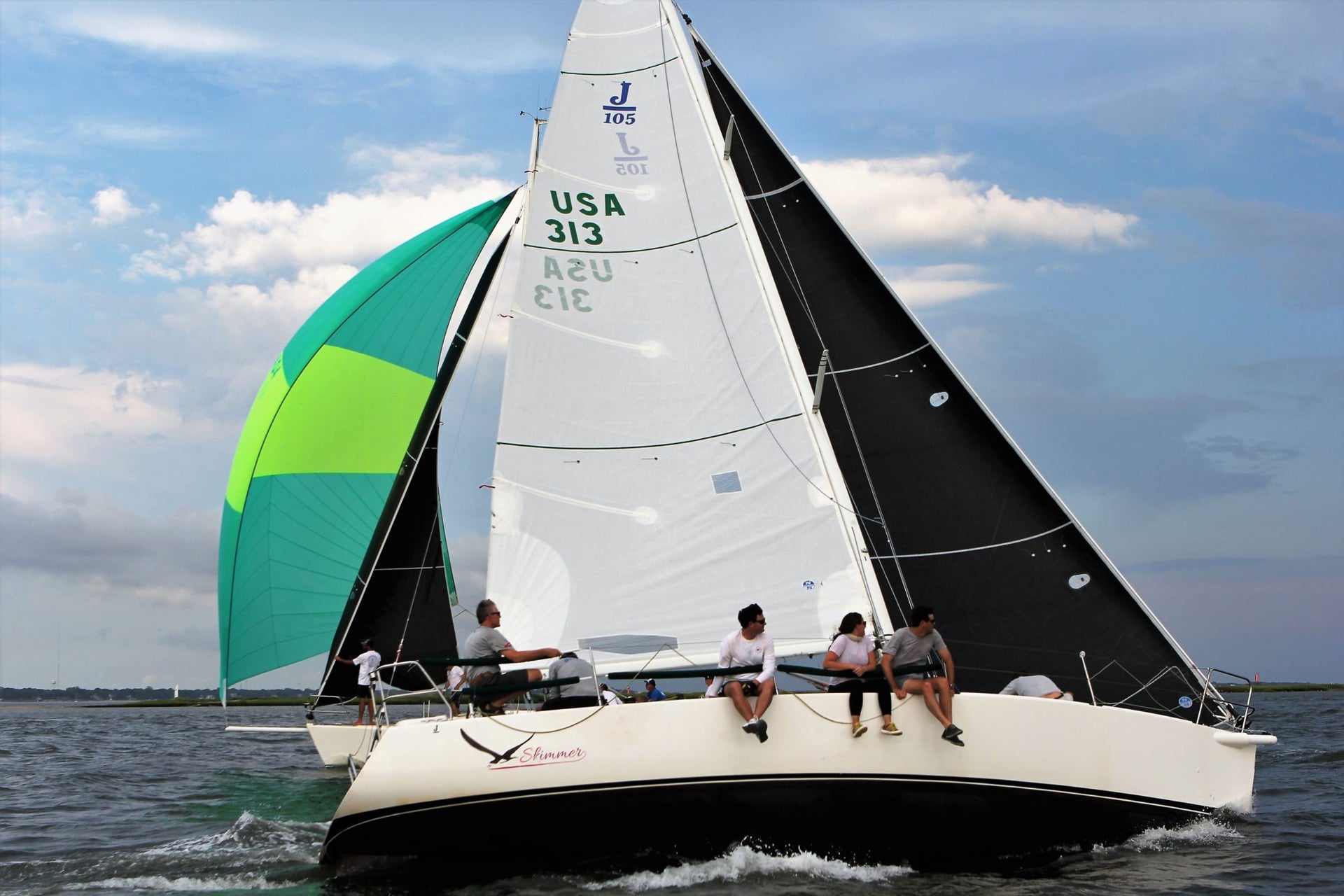
RACING RESTART
RACING RESTART
It's Time To Get Back On The Water!
Ervin Grove from North Sails in Charleston shares how they are helping local sailors get back out on the water safely and within government guidelines.
For many of us “racers” our sailing style could be defined as analytical, obsessive, competitive and most importantly, passionate. Whether its an International event, an Offshore event or the Charleston Wednesday Night Summer Series– as soon as we leave the dock for a race, we have reached our happy place.
In South Carolina we have been fortunate to see less boating restrictions compared to other parts in the world. While public access was closed for several weeks, we never saw the boating scene shut down. Since we were lucky enough to have access to our waterways although under certain restriction, we've taken up a new love for cruising.
John partnered with an old College of Charleston Sailing teammate, Joe Pitcavage last year on a J/105. Since then, his boat partner has used the boat regularly for harbor races. John has also used the boat extensively, but for family cruising. The J/105, like many racer-cruisers, can be set up to do both well. However, a month into this crisis our discussions turned to the unknown fate of sailboat racing. John commented;
"Things have changed and the events aren’t coming back– until we bring them back. Our local sailing community is in the process of a full restart, as many of our friends already have boats. There are some clients that have boats that haven't been as active on the water as they are more into the racing aspect of the sport. Our goal is to get all sailors out on the water, and we've got a good reason to!"
The drafting began and with the help of North Sails cruising expert, Bob Meagher out of Ft Lauderdale. We have now published our Notice of Cruise (NOC). The “Cabin Fever Cruise” is a 7-mile race around government marks in Charleston Harbor. Along the cruise you pass landmarks such as Battery Park, Ft Sumter, the USS Yorktown and the Ravenel Bridge. The start, much like the New England favorite, “Figawi”, is a pursuit style start with starting times published in the NOC. This distance cruise usually takes between an hour and a half to two hour total. This new style of sailing event has brought much interest to the sailors of Charleston and we have seen competitors join in in all types of boats, ranging from a Catalina 22 to a Gunboat 55. The last three Saturdays we had 15 to 20 boats out cruising and we expect to see that number to continue to grow.
You can find our Notice of Cruise below and we hope you will adapt along with it to fit into your local communities guidelines when the time is right. We will see you back on the water soon! And for all the local Charleston Cruisers, we'll see you out there at noon on Saturday!
Cabin Fever Cruises Sailing Instructions
READ MORE
READ MORE
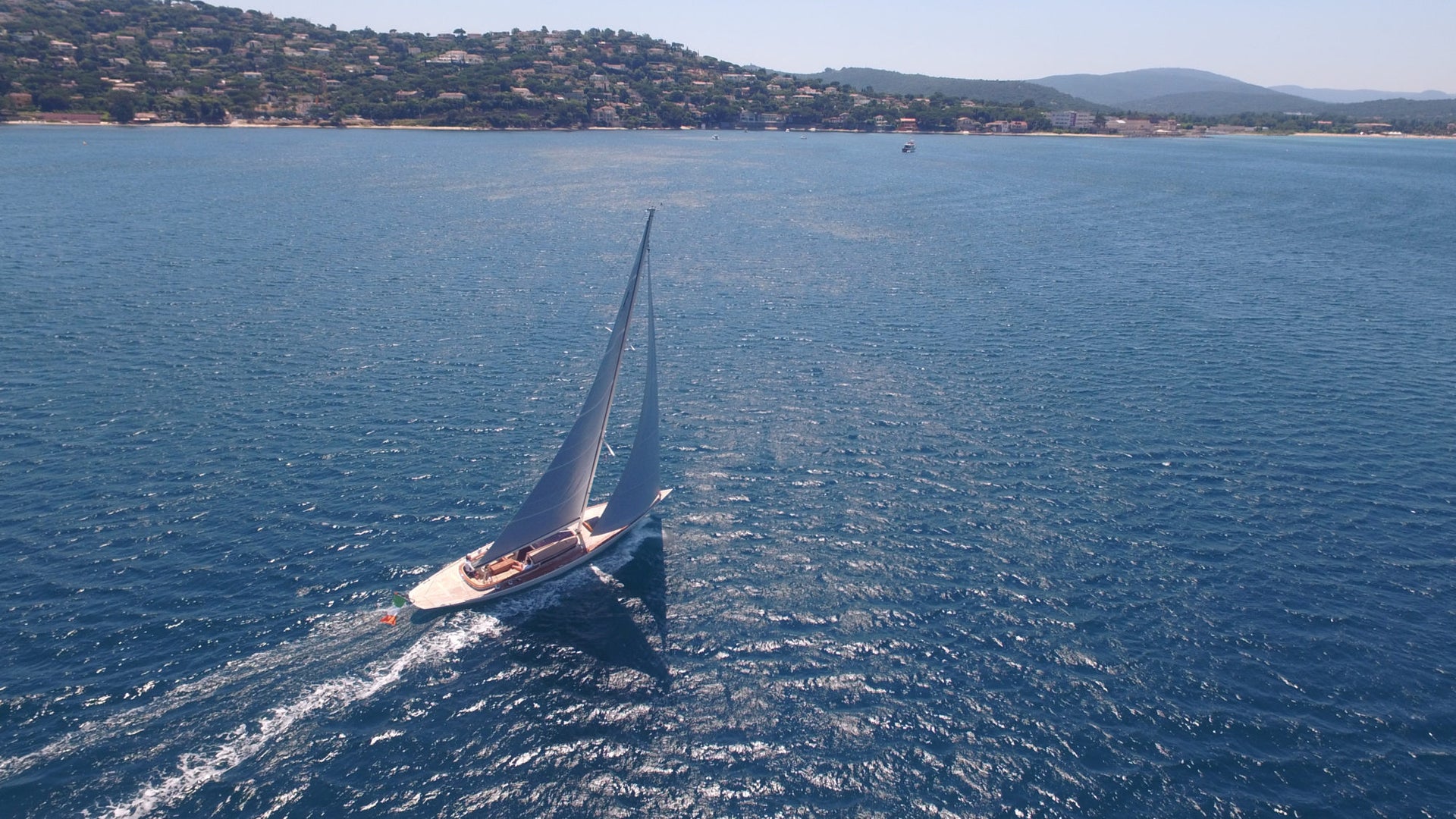
THE SCIENCE BEHIND YOUR SAIL TRIM
THE SCIENCE BEHIND YOUR SAIL TRIM
Induced Drag and Mainsail Leeches
📸 Jeff Brown
By Tom Whidden
One of the goals for our book, The Art and Science of Sails, is to connect the theoretical with the practical. An understanding of the physics of aerodynamics will help us better trim and set our sails. To illustrate this, I’ve chosen a seemingly obscure topic – induced drag and how to minimize it – by splicing together a few excerpts from my new book.
As a tactician, I need to ensure the boat is fast. Otherwise, we’re not going to win, regardless of how well I do my job. And, since the main was always front and center for me, I was constantly studying it, ensuring my mainsail trimmer was doing his/her job. I hope the following will help you better understand the connection between the science and sail trim—and there’s plenty more detail in the book.
********
By far the largest and most destructive drag for sailing performance is induced drag. The root cause of induced drag is the changing of the direction of the air flow by the foil. With airplane wings that change is downward; with a sail it’s to weather. The change in flow direction is the beginning of the process of lift.
So, induced drag is a direct result of the creation of lift. In more technical terms, induced drag is the varying coefficient of lift (Cl) across the span. In other words, the differences in lift across or over the total area of a sail or wing cause induced drag.
📸 Bronny Daniels / Joysailing.com
How does induced drag relate to real life on a sailboat? Assuming the boat is well trimmed and properly set up, about 80 percent of the total sail area will experience relatively constant Cl. However, in the aftermost 20 percent of the sail, the velocity of the flow rapidly decreases; and with it, the lift. The rapidly changing Cl results in significant induced drag, some on the leech and some at the head and foot. This induced drag forms the vast majority of the total drag.
There are two variations of induced drag:
off the trailing edge (leech)
off the tips (head and foot)
📸 Eagle 53 in St Tropez
Induced Drag off the Leech
These are vortices, spinning counterclockwise-off that trailing edge. A deeper head section, compared to the bottom, minimizes the flow of air trying to find the shortest path from the high-pressure windward side to the low-pressure leeward side.
Leech twist is very significant for the optimization of upwind speed. It’s been said that the only reason to have a front of a main is to be able to attach the leech area to the mast! The leech of the main not only ensures that the air bent around the front of the main is allowed to exit with the least interference (induced drag), but also to help steer the boat.
So, how should the trimmer adjust the leech to best attain the above two goals while sailing upwind? With a well-designed and relatively new main, the answer is to sheet the main until the top telltale (preferably hanging off the back of the top batten) just begins to stall. If it’s constantly stalled (hidden to leeward), it’s a sign drag is too high. The lift-to-drag (L/D) ratio is lowered. If the telltale is flying straight back or there is an excess of backwind, it’s a sign that the sail could be sheeted tighter to allow the boat to sail closer to the wind. In this case, the L/D ratio is reduced for the opposite reason.
This screen shot, from a RANS-code CFD analysis, illustrates the tip vortices emanating primarily from the top leech of the main on a fractional-rigged boat. The orientation is looking back at the top of a rig and sails from just to leeward and forward of the onset flow.
Induced Drag off the Head and Foot
The second variation in induced drag is tip vortex. On a plane, these flow off the ends of the wings; on a sail, they flow off the head and foot. There is a pressure difference, or delta, from the lee side of the sail to the windward side. Nature abhors pressure deltas. It’s why we have wind. And, it’s why the flow on the high-pressure side of a sail wants to escape over the top or end to help equalize this pressure.
Almost all modern race boats employ a fractional rig. At the hounds, the main’s chord on the fractional rig is still quite long and therefore helps shed the headsail’s tip vortices. On a masthead rig, the tip vortices of the headsail are matched with the tip vortices of the mainsail. Not good!
*****
We cover this topic (and many others) in much more detail in The Art & Science of Sails Revised Edition, written by myself and Michael Levitt. If you enjoyed this short overview you’ll enjoy the book even more.
READ MORE
READ MORE
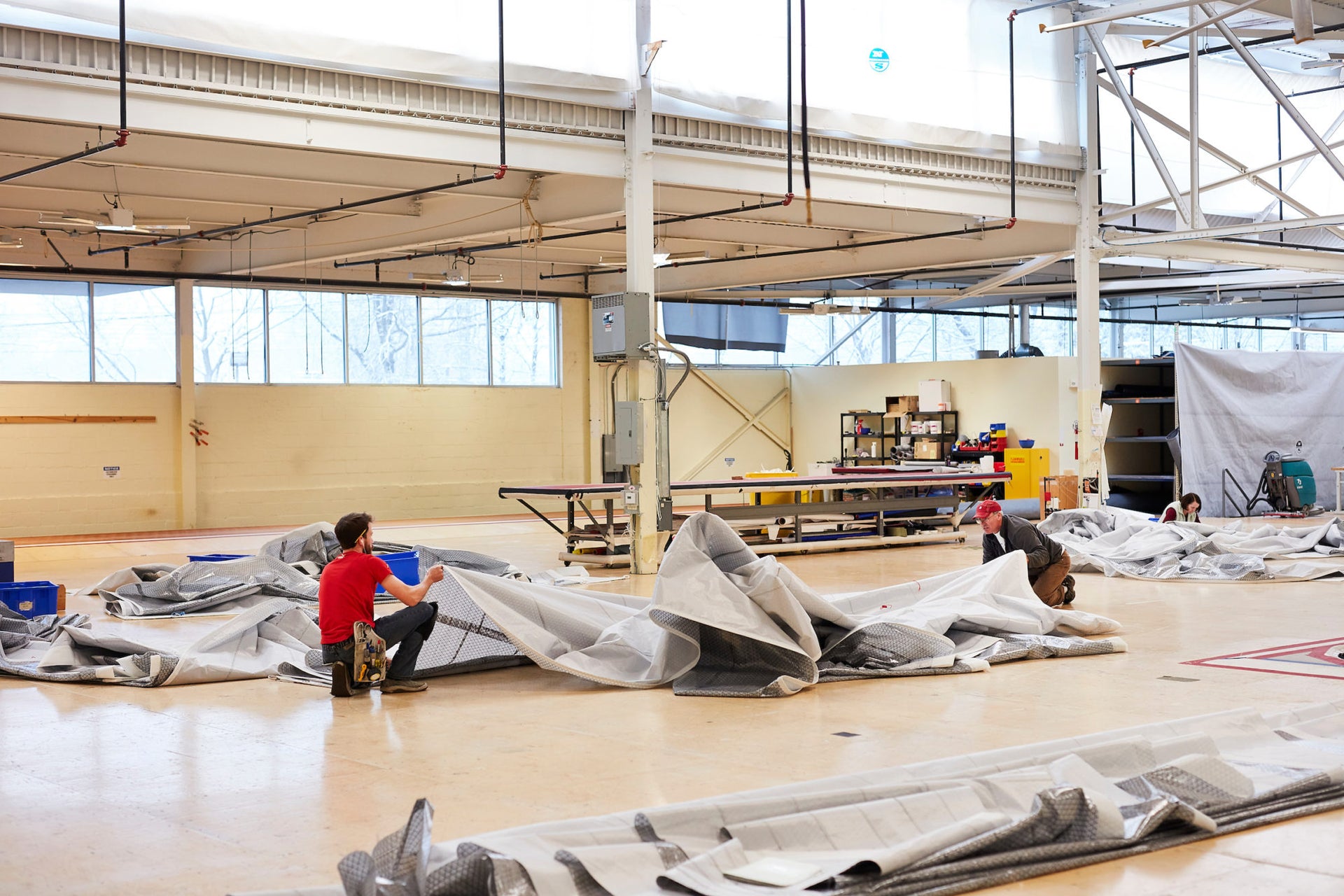
HURRICANE SEASON PREP
HURRICANE SEASON PREP
North Sails Experts Share Their Tips
Once again, the experts have predicted an active hurricane season this year, but in 2020, preparations will be made within the context of COVID-19. As a result, boat owners must consider changes to their annual plans to address threats to their boat and their health, as the season begins June 1.
Run or Hide?
The decision to run from a storm or hunker down is easier for some. Boats on trailers can be protected in a number of ways. A rented warehouse can cost far less than damage from blowing debris. If a boat's left outside, consider filling the cockpit or bilge with water to help weigh it down, place blocks beneath the trailer frame on either side of the wheels, and then deflate the tires completely. Twist or drill auger-type tie-down anchors into the ground, tie the boat to the trailer, tie the boat to those anchors, and remove everything you can. For larger keelboats, finding shelter often requires more planning. According to BoatUS, "the choice of locations is the single most important decision a boat owner has to make before a storm. It dwarfs all others." Boats on the hard are less likely to suffer serious damage on shore, even if toppled. If you'll stay afloat, investigate a marina's piling height and depth, floating vs. fixed docks, and the comprehensiveness of its operator's storm plan. Additionally, owners need to know their marina's policy and state law very well to ensure they understand their rights and responsibilities in a storm with regard to the facility. Many insurance policies require cruisers to exit latitudes perceived to be more hurricane-prone. In a year when the Bahamas and many Caribbean countries have discouraged visitors with quarantines and lockdowns, marinas in the Carolinas, Chesapeake and further north may have less availability. Of more concern, in April, states like Rhode Island took a hard line toward anyone arriving on the water from out of state, either prohibiting transient boaters or imposing a two-week quarantine before coming ashore. If your insurance requires to you leave one part of the world, make sure you have well-thought out plans for arriving at your destination in case such policies resume.
Supplies
In the past, hurricane preparation involved hours inside West Marine or other chandleries buying rope, bumpers, and other supplies. Any specific hurricane threat will likely overcome this year's social-distancing concerns, but advanced preparation can mitigate both risks. Dust off last year's list of all the materials you will need to prepare your boat. Combine resources with others to buy spools of mooring rope or chain at deep discounts. After familiarizing yourself with your vendor's return policy on hurricane-related items, buy online, for home delivery or curbside pickup.
Sails
Without question, plan to remove your sails from your boat long prior to the storm. If you're familiar with the process you'll know how long it takes, but if it's been a while, anticipate two people will need at least an hour total for the main and genoa on a 40-footer, double that on a larger mainsail with full battens. If your sails haven't been serviced in a while, most North Sails facilities will be open leading up to the storm and able to store them for review and regular repair after the threat has passed, but call ahead to ensure staff isn't securing their own homes when you want to drop by. If curbside drop-off remains the preferred practice, you may be asked to provide all your contact information and work required ahead of time. If you wait too long and have to leave the sails in place, wrap them tightly, using a spinnaker or spare genoa halyard to "barber-pole" the furled genoa, and spare line to lash the mainsail tightly to the boom. Remember, even tightly-wrapped sails like this greatly increase the boat's windage and load and chafe on mooring lines so consider this a last resort.
Personal Safety
The loss of life from 2019's Hurricane Dorian in the Bahamas will never be fully known. A stationary Category 5 storm wreaked unprecedented devastation on even well-fortified structures, and should remind us all that personal safety comes ahead of protecting our boat or other replaceable items. Liveaboard cruisers in the path of a storm may have to rely on local hurricane shelters for this last-resort protection, and in the era of face-masks and hand sanitizer, should have plenty of each to increase their safety when enclosed with dozens of area residents during a storm.
Next Year
Hopefully 2020's preparations will be time well-wasted, and storms will stay out to sea. If so, learn from the experience. Just like after a regatta or long passage, as you let down your guard in the Fall, ask yourself what you did well, and what could have been improved, and make notes for next year. Hopefully the 2021 hurricane season will just be another typical "above average" season without the parallel viral threat complicating our plans.
READ MORE
READ MORE
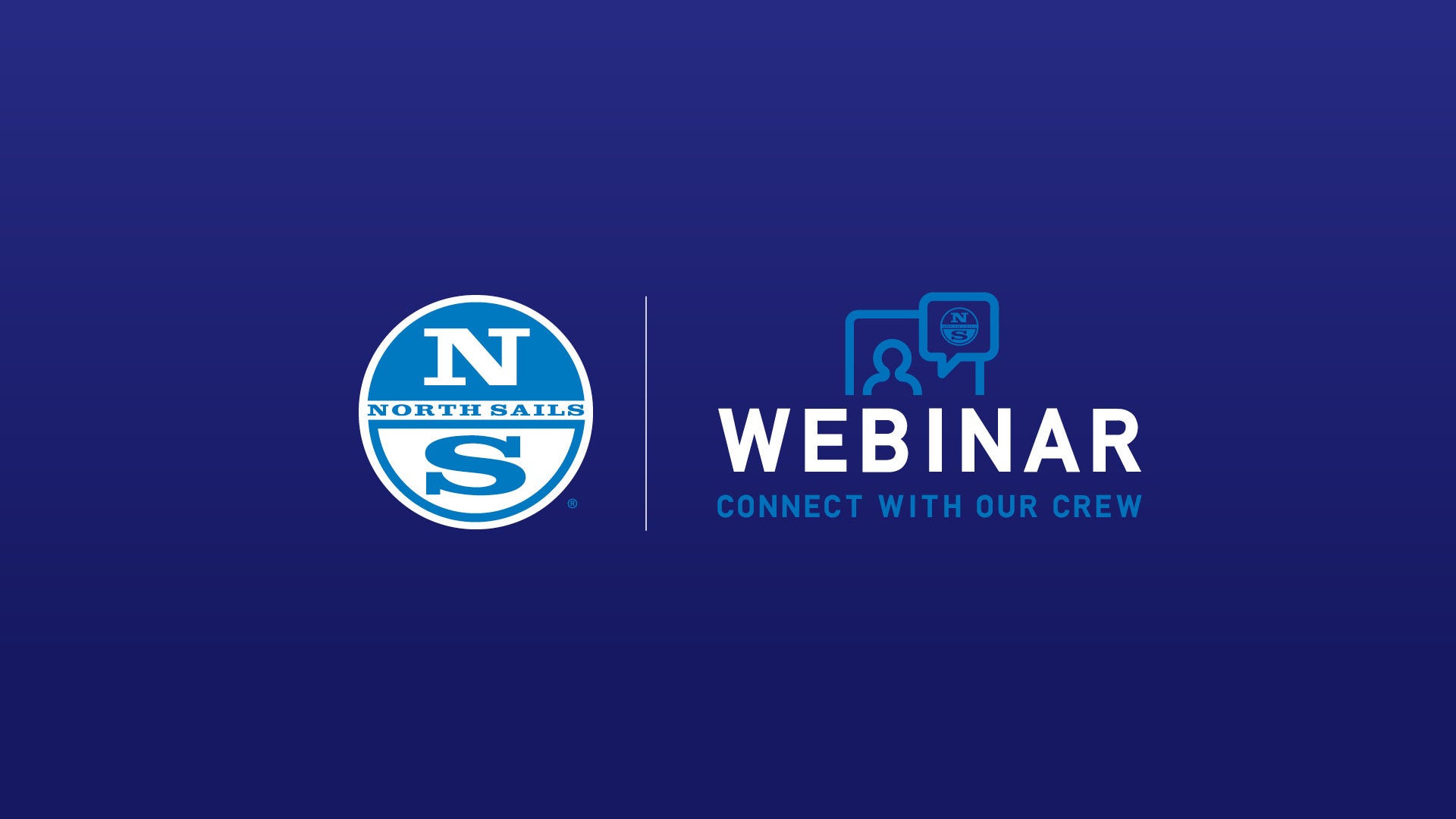
LET'S TALK MELGES 24 | DOWNWIND TECHNIQUE
LET’S TALK MELGES 24
Upwind Trim with Special Guest Federico Michetti
North Sails Melges 24 experts, Olympians and World Champion sailors Maurice ‘Prof’ O’Connell and Giulio Desiderato joined by five-time World Champion, Federico Michetti in an interactive webinar focused on maximizing your downwind speed.
5:45 Light Wind (3-6 knots)
9:55 Jibe Technique: Late Main Jibe
14:36 Light to Medium Wind (7-9 knots)
18:56 Medium Wind ( 9-14 knots)
27:55 Jibing Techniques – Normal or “Mexican”?
41:26 – Strong Wind (15-20 knots)
48:21 Super Strong Wind (25+ knots)
Learn about the North Sails fast Melges 24 sails.
READ MORE
READ MORE
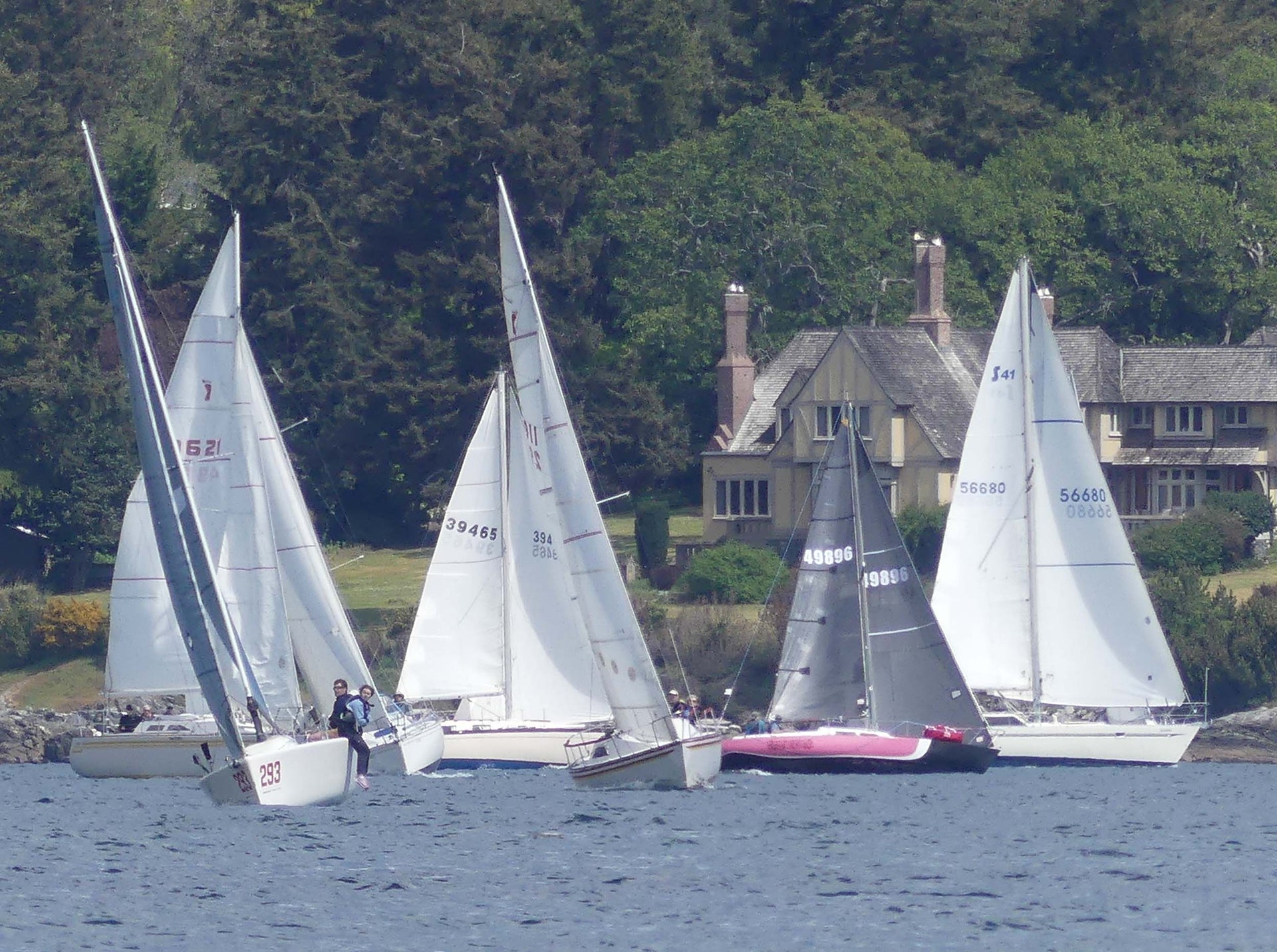
ROYAL VICTORIA YC SUPPORTING SAILING
ROYAL VICTORIA YC SUPPORTING SAILING
Maintaining Social Distancing While Keeping Local Sailing Alive
Drew Mitchell, North Sails expert from our Vancouver loft, check-ins with Andrew Madding from Royal Victoria Yacht Club. Madding shares how they are getting members on the water and racing during these unprecedented times.
Words on the docks is that the Royal Victoria YC are running sailboat races. What are the new rules in terms of crew members with social distancing regulations in effect.
All boats must be sailed with only crew and skippers living in the same household, there shall be no socializing before or after the race(s) and no burdened vessel shall come within one boat length of an advantaged boat. In terms of on shore etiquette, participants are encouraged to allow plenty of time to launch or prepare your boat, wipe all public surfaces (gates, crane controls, knobs, etc.) before use and wear gloves, stay six feet or more away from anyone else.
We encourage anyone showing flu-like symptoms to stay home and remind everyone that respecting social distancing on and off the water will help ensure that sailing and racing remain available during this difficult time. Social distancing deniers are not welcome.
What do you think the average crew number is ?
Single Handed or Family members...so hard to say average. as one can be crew or a Family with kids might be 7 in all.
Looks like you guys have quite the attendance when/what time is the racing and how many boats are you getting out?
The race shall start at 12:00 GPS time, usually on Sundays. The SI’s sent out ahead of time include all the specific start time + date information. The first race had about 20 boats and now it is growing as word spread.
How are the races started and finished, any different than normal?
The start/finish line shall be between the Northern most barber pole on the breakwater and the white mooring buoy in the center of the bay. There are no flags or signals however boats can communicate on channel 9 if needed.
All boats shall return on reverse course once the fastest boat has reached the furthest outgoing mark. All boats shall reverse course if no vessel has reached the furthest mark within one hour. There may be more than one race and spinnakers are optional.
Has the Corona Virus saved sailing? Royal Victoria Yacht Club has had 35 boats out racing the last three Sundays for the Single Handed/Household family members racing, this is way up from the 10-15 boats we have been getting out for club racing over the past few years. Maybe sailing has gotten to competitive even at the club level for most, no results, everyone turns around when the fastest boat reaches the halfway mark of the race.
- Fraser McMillan
Why do you think you guys are getting such a good turn out?
The first race had about 20 boats...once the word got out..from me putting the images that I took on the Clubs Facebook Racing Page and from word of mouth, I started getting emails as to how do we find out about the next race.
Is the yacht club open and or services available?
Friday, Saturday and Sunday they have a take out menu that you can access on line and they will bring your order out to your car once a time is set when your order will be ready. via email/phone calls.
From the pictures I saw and the attendance record why do you think racing is so important to a sailing community at a time like this?
I don’t like having to stay at home all the time. In my case my boat is at a marina half a block from my house, so I’m isolated on it most days. This time of year there were races happening every weekend, and it was suggested that although no one was out sailing it would be nice to remember what we did in pictures. So it began, sailors would send in to the Club’s Facebook page pictures of them out sailing. As I have been one of the Photographer’s for the club for many years I have thousands of pictures of Yacht Races, not just from this Club but from the lower part of the Vancouver Island going back to the 1990. I started going back many years of racing and pulling out images I thought people would enjoy....it wasn’t long before Don Sargent a Club member came up with the idea of a single handed race...He sent out invitations via email to various skippers and the first race Happened April 5, 2020. And the rest is history.
READ MORE
READ MORE
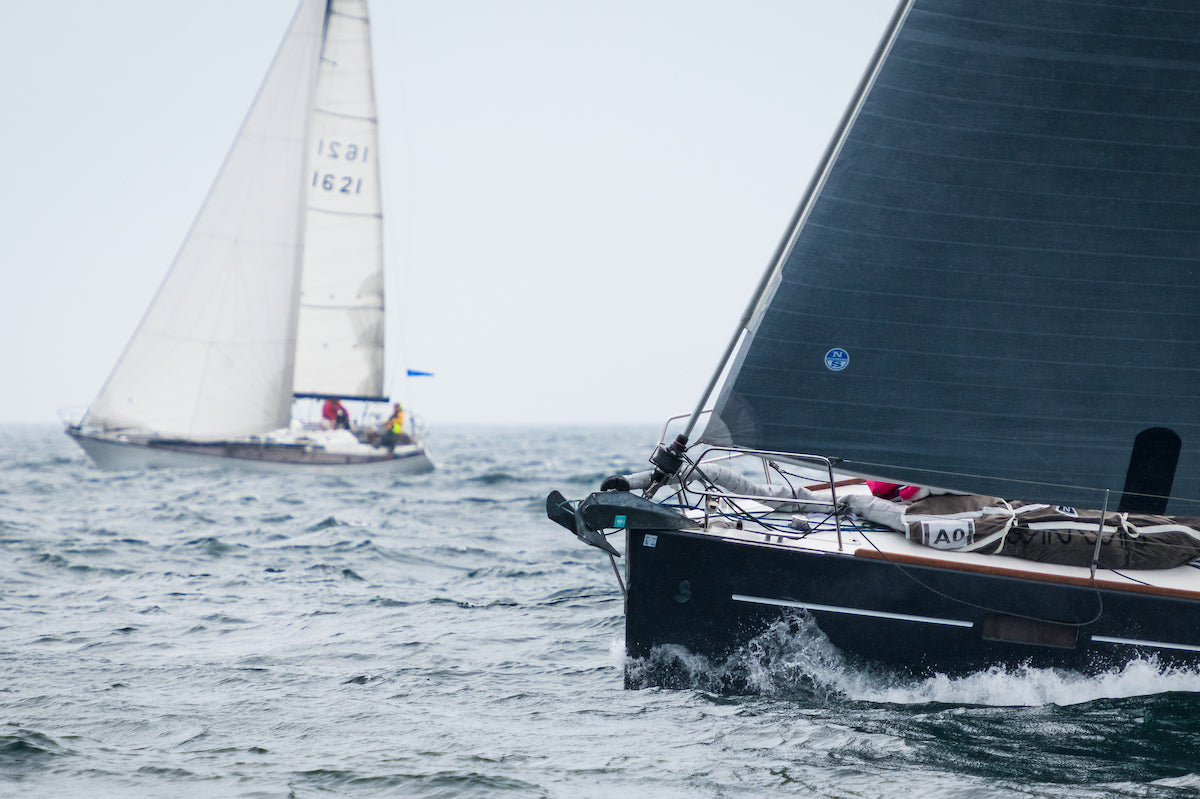
PHRF RACING SPRING REFRESHER
PHRF RACING SPRING REFRESHER
Weeknight Racing Tune-Up Tips From Our Experts
📸 Cate Brown
Sail experts Tom Castiglione and Jack Orr based in Milford, Connecticut hosted a PHRF Spring Refresher webinar that will help any weeknight racer/ weekend warrior up-their game for the next series. Here are some take aways from the webinar that apply to any club racer.
How To Achieve Optimum Rig Tune.
You should try to have the same process each time when getting your rig set up for given conditions. Here’s how you can make sure you do it right, every time.
Record all of your settings: Your base, light air, medium air, heavy air settings
Be familiar with your tuning guide, and be comfortable adding turns/ taking turns off at the dock and on the water as conditions change
While at the dock, make the mast straight by adjusting the diagonals, cap shrouds. Keep in mind you are simply trying to get your baseline.
Using a Loos gauge will help you stay on track with incremental adjustments. Attach your Loos Gauge about 2 meters from the deck. Eye-level is always a good place to start
Duplicate your settings as you go, and always measure from the same place every time
If you have a great day on the water, make a note of it. It’s good to go back to base at the end of each day, but make sure you know where you were in those conditions you did well in so you can replicate settings again the next day
Tuning devices vary for different sized boats. Using electrical tape to mark your spreaders, and a marker so you can make notes on the deck will help your trimmers get to the right trim setting without question.
How does rig set up affect sail shape?
Softer rig- fuller sail
Tighter rig- flatter sail
Try to balance both sails
Adding an adjustable backstay to make your sails pull tighter will help you fine-tune on the water.
Read more on how to achieve balance in your sailplan.
Changing gears
There are Four modes of sailing. Modes are important to understand so you can power up when you have the opportunity, or maintain your lane when you absolutely have to.
Foot mode: designed to generate speed. 4-5” off. Halyard is soft, backstay is soft, trailer and sheet is CL or slightly below CL
Normal mode: not fighting for a lane, sailing your best VMG, sailing on target. 1-2” off
Point mode: you need height, shy of layline, boat to leeward you are trying to avoid. 0” off the spreaders= tight. Halyard is hard, backstay (keep pumping hydraulic backstay), the traveler is CL or slightly above, sheet top batten on CL or slightly below the boom.
De-power mode: backstay on, halyard on, vang on hard to keep boom level. If you see wrinkles coming from the mast going to the clew, you’ve inverted your mast, and you have too much backstay.
Quick Tip: Use your spreaders as a reference point. Marking your spreaders before you leave the dock helps you achieve each mode, quick.
📸 Paul Wyeth
Weight placement
Assign a crew member to help manage this for each maneuver
Keep your crew close together on the rail
In light air, send your crew down below and forward. If you remain on deck, get low!
Make sure your crew is on the rail during mark roundings. It’s essential to keep your rudder in the water! Too much heel reduces your keel depth, which causes you to go sideways. It can also force you to round up in a puff.
Ease the sails at the mark, to help you steer the boat down. If you use weight and your sails, you shouldn’t require much helm to steer the boat.
Wait until the boat is settled before you begin to clean up unless you are preparing for a quick maneuver.
The crew needs to move forward in lighter air and on the downwind. If breezy, you run the crew back downwind, but make sure you are not too bow or stern heavy. Equal body weight placement on-deck can help your boat get through the wave state better, and help you keep the boat flat and not over flatten when you are coming down a wave, or when a puff hits.
If you are comfortable, you are doing it wrong!
📸 Cate Brown / BIRW 2019
Communication
There should be a constant flow of communication happening between the trimmers and the helm. Constant dialogue keeps the sails trimmed together, and at the same time. If you are looking for more power, the main and jib trimmer needs to know so they can ease/ trim on accordingly. If one is eased and the other is fully trimmed, that is not fast. Learn more about crew communication and proper chain of command onboard.
What to do at the dock:
Clean out your boat. If you don’t need it to race, you don’t need it on the boat!
Check your hull. Any knicks, growth, wear and tear on the hull is speed lost. Even a little makes a difference!
Make sure your instruments are running properly. Check your instruments to make sure they are correctly calibrated and make sure everyone on board knows how to use them. The last thing you want is for someone to hit the ‘off’ button when you are trying to mark 5:00 minutes or ping the wrong end of the line.
Tune your rig. Without a properly tuned rig, you won’t be able to control your mast’s behavior over the full range of conditions. Fortunately, rig tuning is a straightforward step by step process for both masthead and fractional rigs. Learn more on how to effectively tune your rig.
📸 Richard Mark Dobson, Adina
Jib Top & Genoa Staysails
A Genoa Staysail can be set inside a Jib
A Jib Top can also be designed to set on the bowsprit which adds performance
Bowsprit modifications to simplify your sailing (for inshore and offshore)
Great for angles when you are not DDW often.
If you are sailing a W/L in 15 knots, you may like the symmetric option better.
In general, shifting to asym can increase the performance of the boat, adding speed, but it all depends on what type of courses you are sailing that will dictate which choice is best for you.
It’s essential to practice before it’s time to race. When you get to your racing area, what can you add to your pre-race checklist?
Spend a day getting the bugs out
Time the starting line
Spinnaker sets and douses
Tacking and jibing
Using your crew weight to go fast
Boats that practice win the races!
Missed our PHRF Spring Refresher webinar? Catch up and learn more from our experts on how you can enhance your performance on your next weeknight race / weekend regatta.
Watch PHRF Webinar
Have questions about optimizing your boat for weeknight racing? Contact PHRF experts Jack Orr or Tom Castiglione.
Email Jack Email Tom
Want to know how to choose the best sails for your next club race?
Learn More
READ MORE
READ MORE
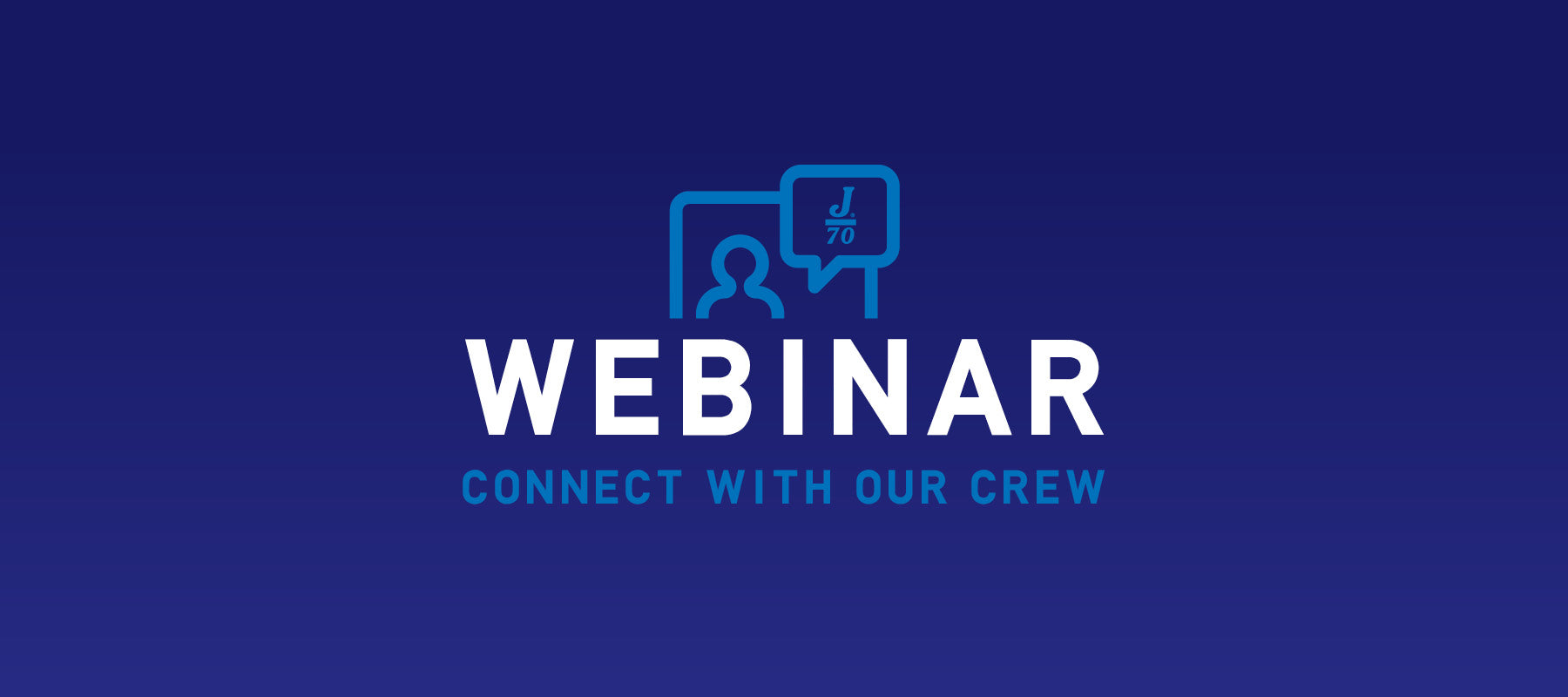
CALENDARIO DE SEMINARIOS WEB
CALENDARIO DE SEMINARIOS WEB
Durante esta temporada de confinamiento, North Sails ofrece una serie de seminarios web sobre diferentes temáticas, de acceso totalmente libre. A lo largo del mes de abril se ha hablado de navegación en empopada, de vela oceánica, de reglamentación en paso por boya en regata, de navegación en multicascos, de enrollado, de navegación en Dragón y en Etchells,..
Nuestros expertos están diseñando los contenidos de nuevos e interesantes webinars que iremos anunciando puntualmente. El programa completo de seminarios web está disponible en el perfil de North Sails en Facebook. Ante cualquier duda, puedes consultarnos directamente en info@es.northsails.com. Durante esta temporada de confinamiento, North Sails ofrece una serie de seminarios web sobre diferentes temáticas, de acceso totalmente libre. A lo largo del mes de abril se ha hablado de navegación en empopada, de vela oceánica, de reglamentación en paso por boya en regata, de navegación en multicascos, de enrollado, de navegación en Dragón y en Etchells,..
READ MORE
READ MORE
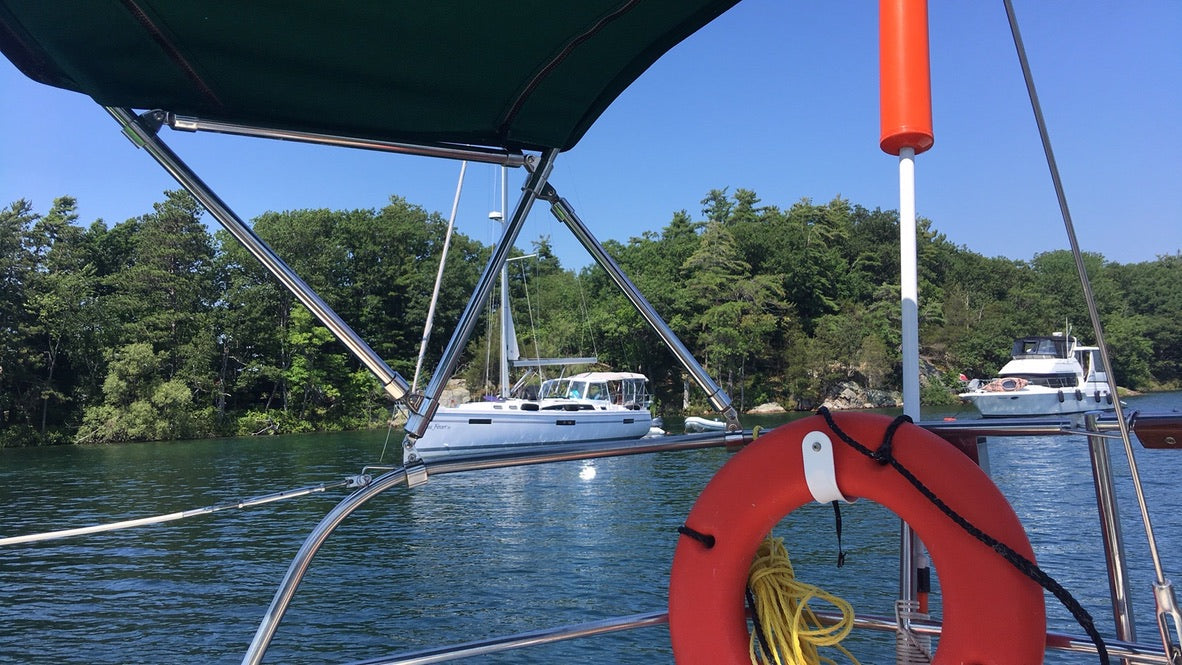
CRUISING TO THE 1000 ISLANDS
CRUISING TO THE 1000 ISLANDS
George Jackson Shares His Favourite Must-See Attractions
While self-isolating, dreaming of sailing again, open up your favourite navigation app, Navionics, perhaps. Or Google Earth. Scroll over to eastern Lake Ontario...Take note of the north shore of eastern Lake Ontario. Within a long day's sail, the varied and vast cruising grounds of eastern Lake Ontario and St. Lawrence river await. Beginning in Brighton and ending passed Brockville, there are so many coves, harbours, open reaches, and terrific freshwater sailing to be had. So many different itineraries could be plotted. A great feature of cruising these waters is flexibility due to changes in weather. Protected waters can be found easily, no matter the wind direction.
Last summer, asked by a former Royal Canadian YC commodore to join a portion of his summer cruise to the 1000 Islands, my backyard, I could not refuse his invitation.
He sailed his Niagara 35 down from Toronto to Belleville. I took the train from Kingston. A VIA train is a great way to shuttle back and forth along this cruising route. Also joining us was another friend of the Commodore, a former BC Ferries captain who had long wanted to sail among the 1000 Islands.
My skipper's goal was to get to the granite-featured, historic 1000 Islands straight away. Had he wanted to explore "the county" as Torontonians call it, Prince Edward County is an impressive cruising ground -- Picton. Adolphus Reach. Waupoos Island. Prince Edward Bay. Prinyer's Cove. A region distinguished by limestone cliffs, fresh, clear water, gravelly beaches and good anchorages. Instead, we pressed on.
Towards Kingston, Amherst Island provides excellent protection from the swells but ample water to sail back and forth between the mainland and the north shore of Amherst. Here too are some lovely anchorages -- Kerr Bay, Loyalist Cove, Preston Cove and Collins Bay – all before Kingston is even in sight. For the more adventuresome, pass through the Upper Gap and make Main Duck Island and School House Bay a destination before heading back to Kingston on what could be a downwind sleigh ride from The Ducks given the prevailing southwest winds.
I'll pass over Kingston for now. But let me say this, try to book ahead if you want to stay at any of the clubs or marinas in the area. Spots get booked up. This holds for the marinas in both the US and Canadian waters along the St. Lawrence.
Kingston is called the Limestone city, yet you quickly leave the grey rock behind and begin to sail through what is known as the Frontenac Arch or Axis. The Axis is an exposed strip of Precambrian granite rock that links the Canadian Shield from Algonquin Park through to the Adirondacks. It's this feature that makes a tour of the 1000 Islands so unique yet like Manitoulin Island or the East Coast. Once again, so many options. So little time.
A word of extra caution. No doubt, you have had a proper study of the charts as you have sailed or motored to this point. In these waters, safe, damage-free passage making requires vigilant navigating. Use the guides. Use your mobile Navionics app, use your eyes and binocluars but know where you are and where you are going. As they say, the water can get hard fast if one is not paying attention.
What attracts many mariners is the Thousand Islands National Park system, established in 1904, formerly known as the St. Lawrence Islands National Park. The park consists of 21 islands plus many smaller islets. Depending on the island, there may be a dock or a mooring ball or a quiet cove to anchor. Life on the hook is idyllic. But be sure to have screens, it's a little buggy at dawn and dusk. On either the north or south mainland shores are pretty towns and villages each with services but also fun things to do. For instance, Gananoque has its 1000 Island Playhouse, a summertime, waterside, theatre. Clayton, NY, has the Antique Boat Museum. Grab your guide book or search Google and plan away.
As you cruise into the islands, there are abundant sailing opportunities, but they may be limited depending on wind direction, strength and your next destination. Even with good winds, you may find yourself motoring more, so keep an eye on your fuel, oil levels and water discharge although the water is pristine, there is floating debris, like plastic bags lurking to clog water-intakes.
The 1000 Islands are really closer than you think. The sailing is good, with lots to see and do.
All this to say, go! Go as soon as you can. Who knows when, but plan and go.
Learn more about cruising sails to help with your adventure here.
READ MORE
READ MORE
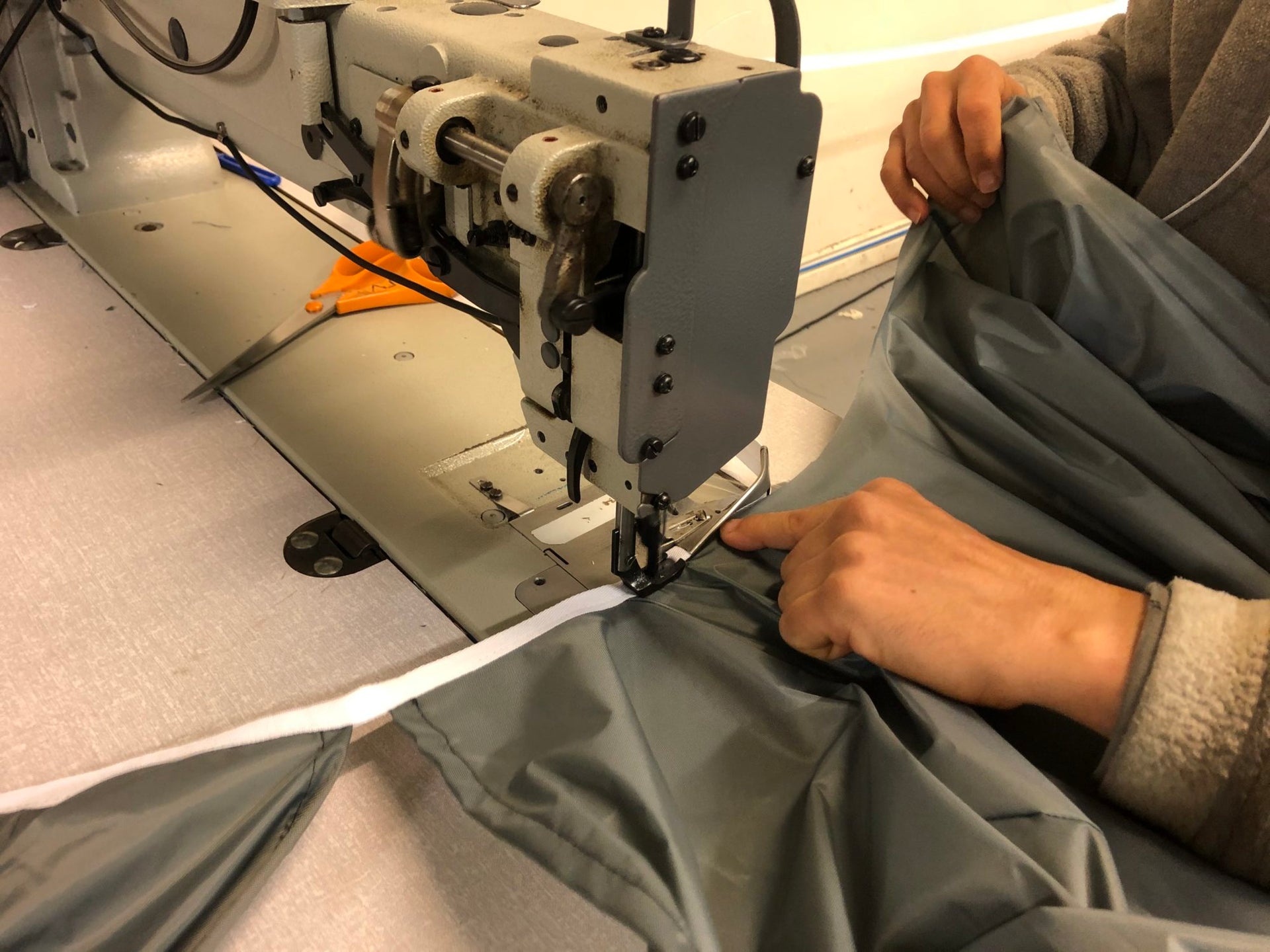
UNSUNG HERO'S: TRIBUTE TO YOUR SERVICE
UNSUNG HERO'S: A TRIBUTE TO YOUR SERVICE
North Sails Ireland Salute Richard Marshall and Team for Front Line Supplies
Here at North Sails Ireland we are delighted to work with Richard Marshall and his Marshall Marine Textiles Team for the service arm of our business. Richard is a very experienced sailor in his own right and a magician when it comes to repairing sails or working with any type of fabrics.
Our local team has been working with Richard since 2004, when North Sails Ireland was founded. It quickly became apparent to me that there is nothing that Richard and his team at Marshall Marine Textiles cannot do with fabrics.
It was no surprise to me to find him supplying PPE to the front line long before anyone else had even thought about it! Not one to blow his own trumpet, Richard was very slow getting the message out to the World about what he was up to as he was unbelievably busy
Now in a very short time Richard and the team have produced thousands of items with many more on order from the HSE. It's hard to keep up with him in number terms but I normally talk to him a couple of times a week just to check in. This week he passed a major milestone having sewn over 10,000 pieces of PPE equipment in record time!
Here at North Sails Ireland we would like to salute Richard and his team for the amazing work and we are extremely proud to be working together for the last 17 years. We have had some very interesting times together over the years but I have to say that this current period is one that none of us will ever forget.
Keep up the great work, you guys are truly amazing!
READ MORE
READ MORE
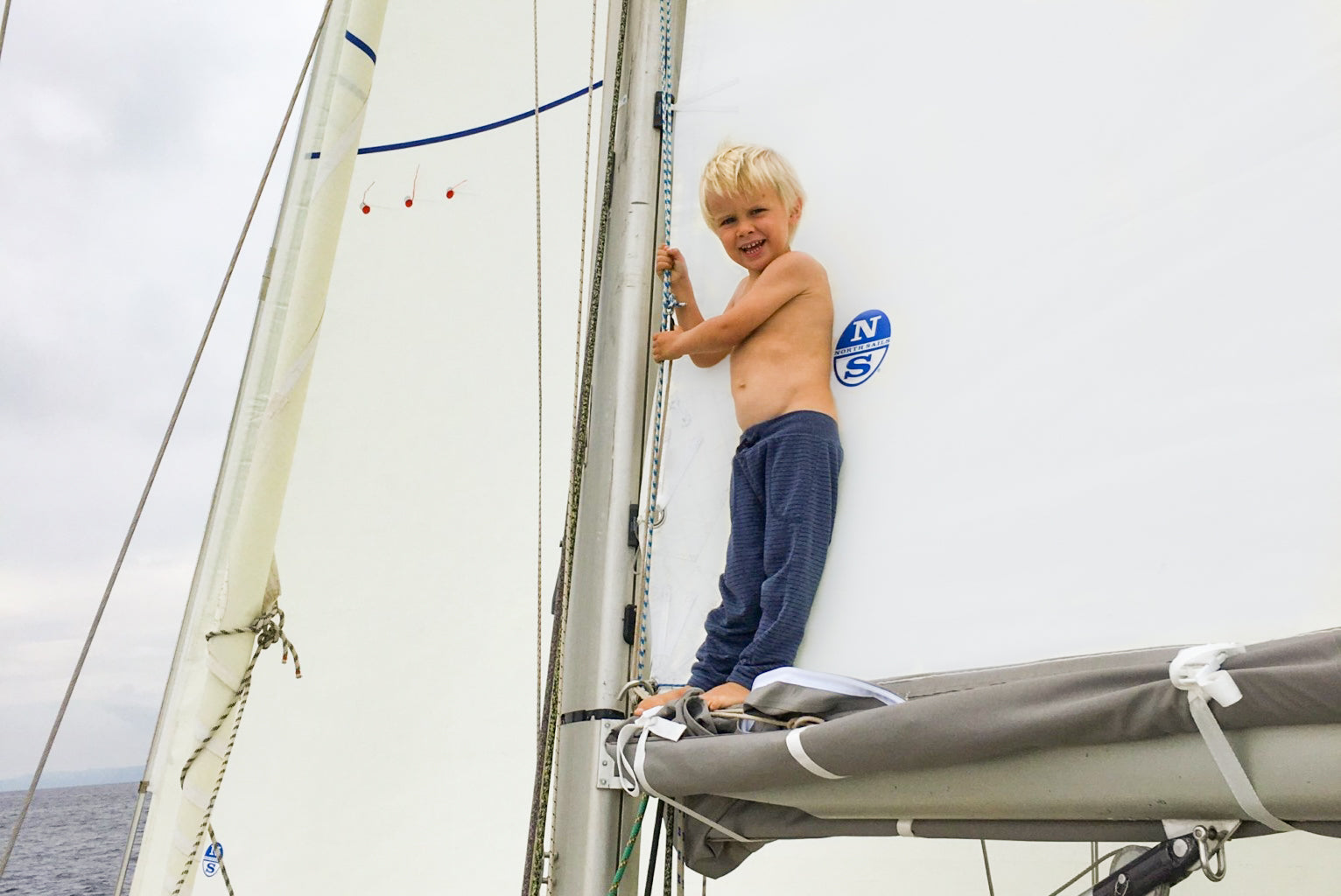
BLUEWATER CRUISING ON WAKAKI: PART II
BLUEWATER CRUISING ON WAKAKI: PART II
Kilian Goes Cruising
North Sails Expert Warwick Kerr (Wazza) owns a Spirit 36 called Wakaki, hull #45, built in 1991. She had one owner before Wazza. “This boat was a good compromise between my modern racer mentality, and my wife’s more traditional long keel, heavy cruiser mindset.” Hear about their trip, their boat, and their sails in part I of Bluewater Cruising on Wakaki.
Kilian and his parents cast off in October of 2019 from Mallorca with nothing but a vast open ocean in their sights. Sailing south to the Caribbean is where they’d find their stride, bouncing from port to port, having fun, swimming, and learning new things. The family cruising life has taken hold of each family member, and Kat, Wazza, and three-year-old Kilian couldn’t be happier to share this experience together. So far the family has been all over the Caribbean, currently residing in Sint Maarten with hopes of heading down to Grenada in a few weeks to meet new friends and fellow cruisers.
“The day we arrived to the Caribbean from our Atlantic crossing, we told him we would go check out a beach so he could run and ride his bike. Kilian shook his head and replied; ‘No mama, I want to keep sailing.”
📸 Ryan Borne
Kilian has had some unique opportunities living his new cruising lifestyle. He is learning how to snorkel and has vastly improved his swimming skills. He’s been getting tips from his dad on how to catch fish, too. He is learning the basics of surfing, and wants nothing more than to get up close and personal with sea life. Snorkeling with mom and dad is a real treat, with the safety of his parents and his eyes down in the sand spotting fish, rays, and the colorful corals. “He gets very excited when he sees turtles and dolphins. We aren’t sure there is anything he doesn’t like out here,” says Wazza. Wazza and Katrin couldn’t be more proud. Kilian plays a part when it comes to setting their anchor by helping his mom and dad communicate from bow to stern. “When it comes to helping his mom and I with our 3Di NORDAC sails, he is in charge of furling our headsails at the end of the day.”
“It couldn’t be possible if Kilian didn’t like what we were doing. Kids are incredibly adaptable and live in the moment. No thoughts of consequences, the future, or a pandemic– just living life to the fullest each day.”
Kilian loves eating freshly caught fish. “He is intrigued by lobsters, (which he calls ‘lobbers’), but he doesn’t eat those…yet. He has taken up a new hobby in cracking coconuts drinking the milk and eating the meat. He also digs just about anything that comes off the BBQ,” says Wazza.
While cruising around, the family enjoys kitesurfing and has recently taken up surfing, “which is especially fun with the little one,” says Wazza. So far, the family couldn’t be happier living onboard and traveling around the Caribbean. “It’s incredible the experiences we can share with our son,” says Wazza. “We don’t even have to try. Every day is a new adventure for Kilian, and he loves it all.”
So far, Kilian’s primetime cruising highlights include exploring ashore in Gibralter, where he got to see monkeys. Onboard is most entertaining since the dolphins are always coming by the boat. He also likes to look for stingrays. Kilian is looking forward to sailing and being free to adventure. “Swimming and snorkeling are his main priorities at the moment”, says Wazza, “but he seemed keen to go kiting with me at some point.”
The family has shifted most of its land activities to water activities, which has made a whole new world for their son. “He’s most interested in what’s happening underwater, and now that he knows how to wear his mask and snorkel, he can be part of it.”
“He’s learning a ton about the outside world, and he’s not as shy as he was at first with getting to know people and being open to meeting new people.”
Wazza and Kat are teaching Kilian new things every day. “He knows the weather and the wind, and knows when it’s going to rain.” When the family is looking for a new spot to anchor its Kilian’s job to communicate between his parents on maneuvers. When they pull up to a new mooring, he helps make sure both mom and dad know what is going on. Helping his family fix things onboard, and being part of the action is what he’s all about.
When it comes to eating, the family keeps it very healthy yet exciting. “We make our own muesli and granola,” says Wazza. “We’ve caught tuna, Mahi Mahi, and Wahoo. There are some places where you are permitted to spearfish so that we can catch lobster and grouper, too.” Porridge with fruit or our boat-made granola is his go-to for breakfast. “We have a fun tradition with Kilian, where we find a new spot and anchor for the night and make pancakes the next morning in our ‘new’ place.”
Kilian has taken to the lifestyle and being onboard Wakaki very well. It’s like the perfect world for him. He has his toys, his cabin, his swing, and ropes and lines to climb. “He just loves the boat. He’s very comfortable when he’s onboard. His cabin has turned into his calm space,” says Wazza, “giving him all the feels of a safety blanket where he can relax if he’s a little tired and gets cranky, or if we are out and about and he’s ready to go back ‘home’.”
Kilian has met a lot of people along the way, but his favorite person tends to be the one who he is spending time with at that moment. He really enjoyed catching up with some old friends from Mallorca who were visiting Antigua a few weeks back. He’s recently made friends with the daughter of the dock owners, where Wakaki is stationed at this time. “He’s learning a ton about the outside world, and he’s not as shy as he was at first with getting to know people and being open to meeting new people.”
With certain islands strengthening their lockdown procedures, we’ve been limited to certain places and we are now in Sint Maarten for the time being. We plan to head south to Grenada after this, where they have a friendly cruising community. After we get there we plan to stick around there for a bit, exploring the island, and other islands if possible during hurricane season.”
“Kat and I were talking about this the other night. While all of this seems amazing, easy, so perfect, it couldn’t be possible if Kilian didn’t like what we were doing. Kids are incredibly adaptable and live in the moment. No thoughts of consequences, the future, or a pandemic– just living life to the fullest each day. Luckily Kilian doesn’t get seasick. He’s a pretty chilled little dude. This type of life isn’t for everyone, but fortunately, we all enjoy it.”
READ MORE
READ MORE
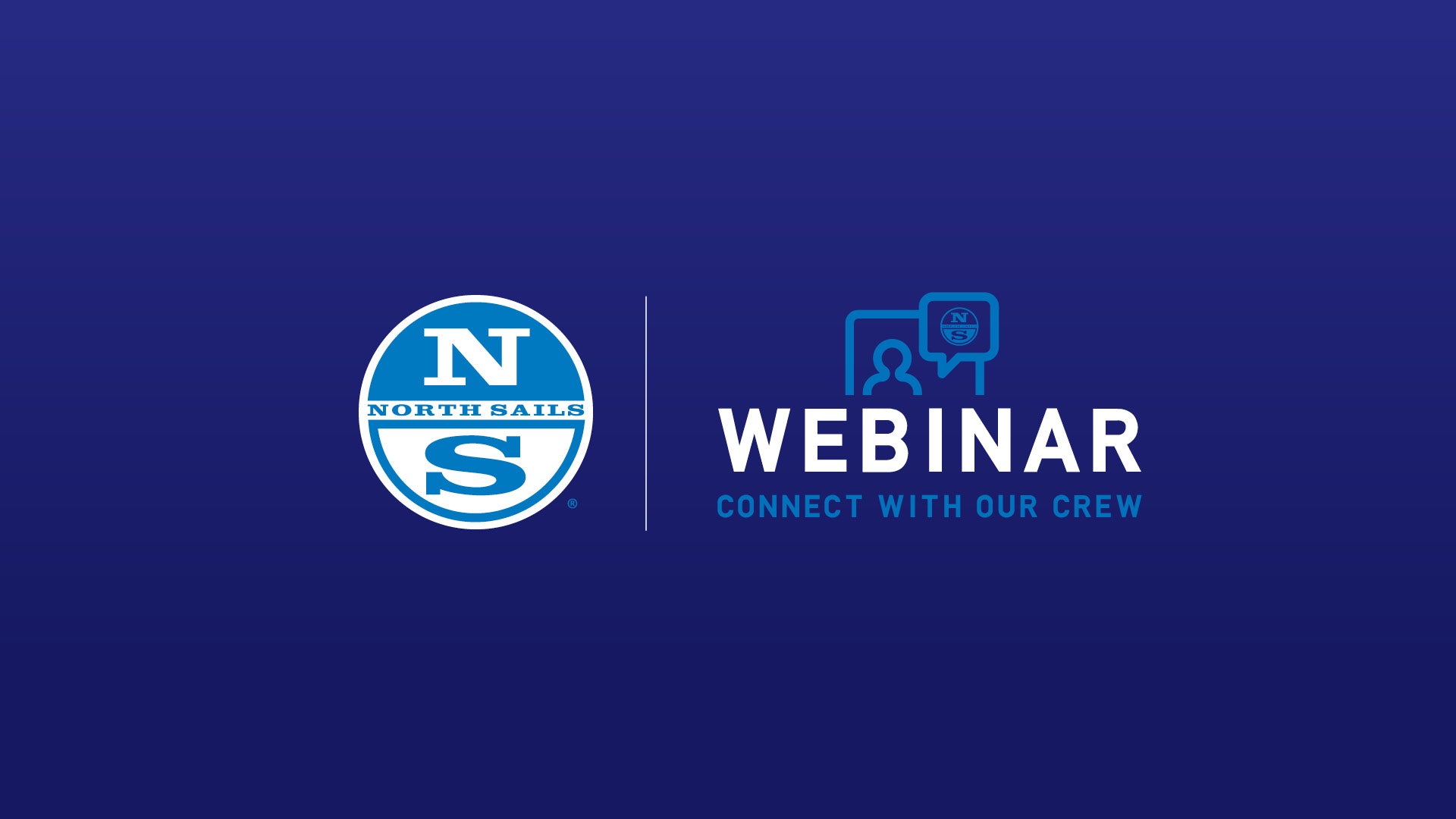
LET'S TALK J/111 | UPWIND & DOWNWIND PERFORMANCE
LET’S TALK J/111
Upwind-Downwind Performance Tips
J/111 webinar featuring North Sails Class experts Seadon Wijsen, Jack Orr, Jeremy Smart and Allan Terhune.
Topics covered include:
2:35 Upwind Trim
39:12 Downwind Light Air & Superlight
44:30 Downwind Soak Mode 10-17 knots
51:34 Downwind Wing on Wing 13-15 knots
56:51 Downwind Moderate Plane/Lazy Plane 16-20 Knots
1:09:30 Downwind Heavy Air – 20+ knots
1:11:53 Downwind – 25+ knots
1:16:00 Broach and Recovery
Learn more about North Sails fast J/111 designs.
READ MORE
READ MORE
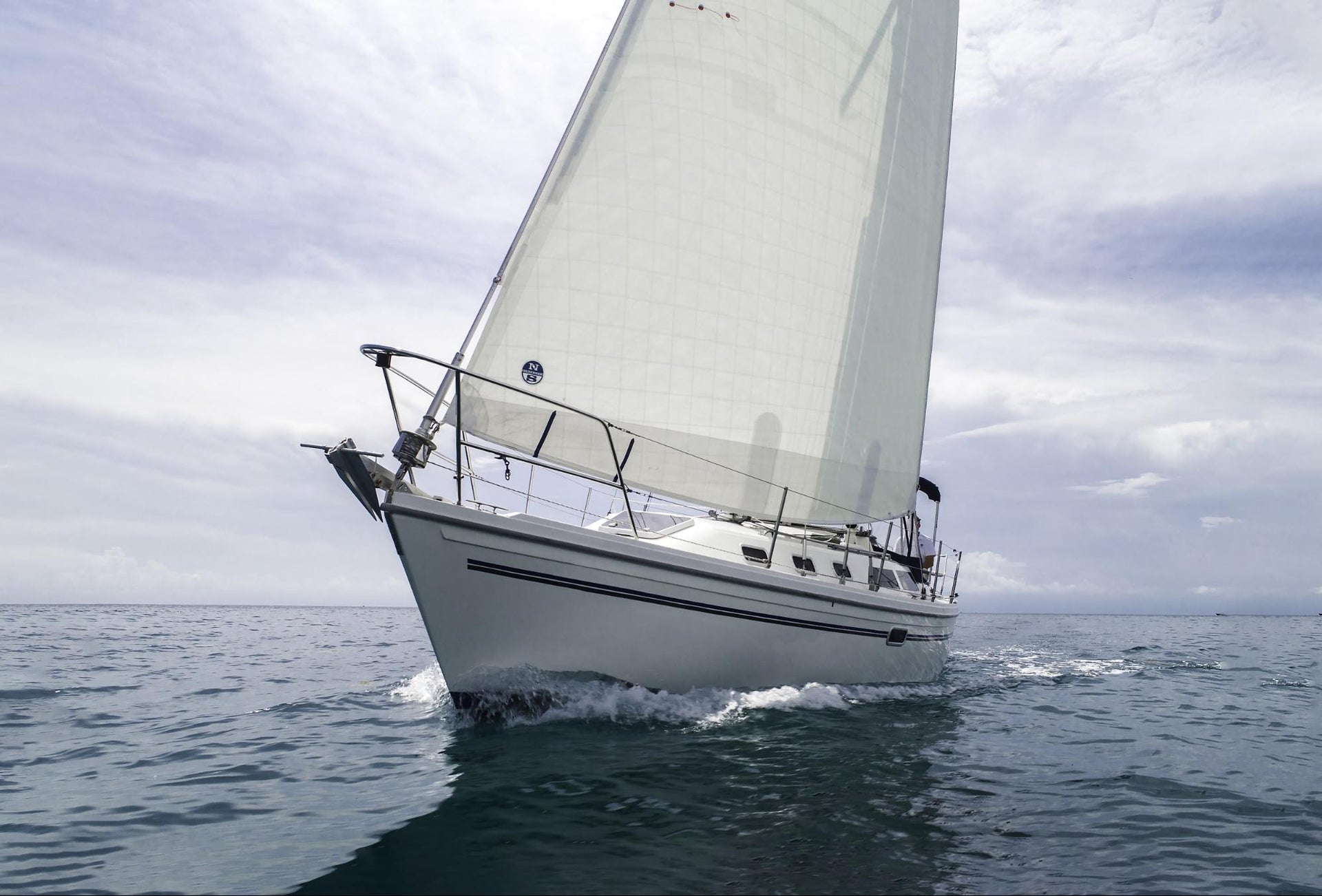
SAIL TO CATALINA: PART TWO
SAIL TO CATALINA: PART TWO
The Best Sails To Use When Sailing To And From The Island
Part two of North Sails experts Alex Curtiss and Bill Herrschaft advice for which sail is the best to use when heading to Catalina Island from Marina del Rey.
Catalina Island is a fixture in Southern California. North Sails Bill Hershaft had an incredible article on efficient, fun sailing from Marina Del Rey. Now we build on that by talking about sailing from Long Beach and San Pedro over to the island. With summer right around the corner people will be eager to get over to the island faster.
My good friend Erik Shampain used to have a fun way to know if you need new cruising sails. He says, “If your partner likes drinking wine, and sailing, the quickest way to ruin that is to have baggy sails. That's because baggy sails make the boat tip over and the wine will spill. New sails are flatter and will keep the wine in the glass.” This is especially the case when sailing from Long Beach. If you are traveling to Whites Cove from San Pedro, you are probably sailing with a TWA at 90 degrees and your AWA is probably closer to 45 degrees. With this in mind a nice 135% genoa is the correct head sail to have.
In racing we always say the quickest way to get faster is a new genoa. This is the same case when cruising. New technology which has been developed the last few years even allows sailors to take away sail area with what is called a “foam roller reefing pad” which is along the luff. That way if it is above 17 knots and you are feeling overpowered? No problem just roll the sail up a little and you are instantly more stable.
When it comes to materials, North Sails offers several levels of high quality material based on budget. For those who maybe aspire to head to Mexico or beyond one day, the 3Di material is a low stretch, high durability option. For those who are intending on just heading over to the island a few times a year, the cross cut may be the sail for you. Head to North Sails cruising page for more information.
I also want to talk about the way home from Moonstone cove to Newport Beach. Some of the most fun I have had sailing in my life is that sail. Usually, in a traditional westerly, a running spinnaker is the way to go. Spinnakers can be a little intimidating but with the invention of the Snuffer, spinnakers are now very easy to use.
Usually when sailing back to Newport, you are usually sailing TWA 125-145 depending on the day. For that angle of sail we would recommend a G2 runner.
In part one of the Catalina series, Bill talked about how these lightweight nylons make any sail home perfect. If you don't have a tack point, feel free to contact your local North Sails rep to discuss possible options. There is a surplus of low cost ways to create tack points. But making sure you set it up properly will prevent headache down the road.
READ MORE
READ MORE
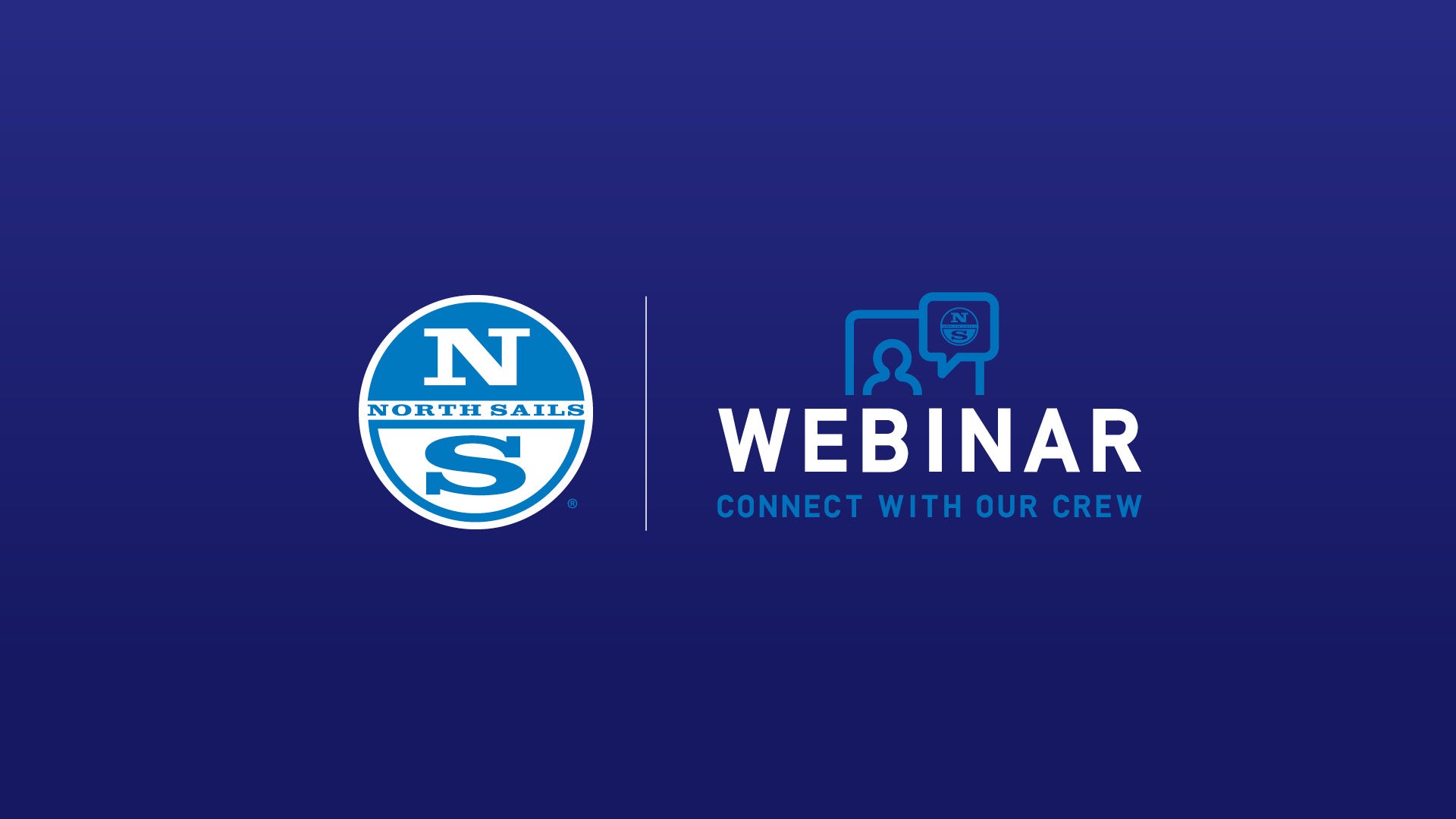
LET'S TALK J/70 | WHAT TO EXPECT AT THE 2021 WORLDS
LET’S TALK J/70
What to Expect at the 2021 Worlds in Marina Del Rey
North Sails Experts and Southern California locals Eric Doyle and Alex Curtiss talk about the conditions and what to expect in Marina Del Rey, home of the 2021 J/70 World Championship.
Topics covered include:
9:35 – Typical Southern California seabreeze
12:51 – What’s the California Eddy?
16:35 – Current
21:48 – Keys for Success – Setup & Tactics
29:45 – Recommended sail line up
43:22 – Lead up regattas
Learn more about North Sails fast J/70 designs.
READ MORE
READ MORE
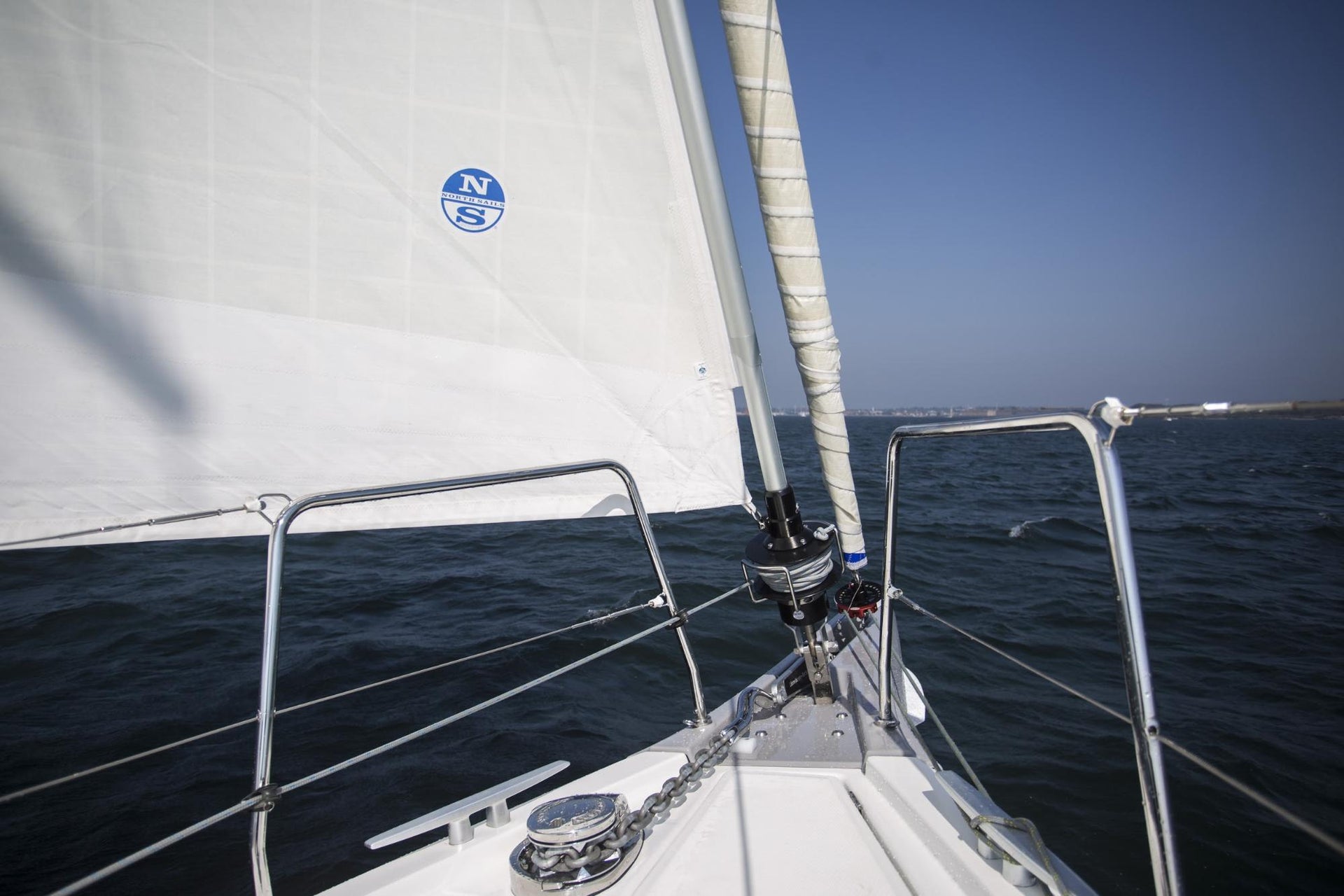
GENOIS SUR ENROULEUR ET TAUDS DE SOLEIL: CE QUE VOIS DEVEZ SAVOIR
GÉNOIS SUR ENROULEUR ET TAUDS DE SOLEIL : CE QUE VOUS DEVEZ SAVOIR
Comprendre le bon fonctionnement d’un enrouleur peut vous éviter de sérieux ennuis
📸 Billy Black
Que se passe-t-il si vous enroulez votre voile dans le mauvais sens ? C’est-à-dire avec la protection solaire à l’intérieur et non à l’extérieur de l’enrouleur ? Les UV détériorent sérieusement la partie de la voile exposée au soleil. Malheureusement, nous constatons très souvent les effets de cette erreur de manipulation dans nos ateliers de réparation du monde entier.
Cela se produit fréquemment lorsque la protection anti-UV est de la même couleur que le tissu de la voile. Par exemple, une protection blanche sur une voile blanche ou une protection grise sur une voile grise. Lorsque la voile est enroulée autour de l’étai dans le mauvais sens (avec la protection UV à l’intérieur du rouleau), il n’est pas toujours évident de faire la distinction entre les deux côtés.
Dans certains cas, cette situation peut se produire sur une voile neuve qui a été mal installée – la bande UV se retrouve à l’intérieur du rouleau selon la direction dans laquelle tourne le tambour (sens horaire ou antihoraire).
Cela peut également se produire en début de saison lorsque le bateau n’est pas gréé ou mis à poste. Si la drosse d’enroulement est remontée, elle doit être enroulée autour de l’enrouleur dans le bon sens pour être compatible avec la voile.
Chez North Sails, nous plaçons toujours en prévention un autocollant pour marquer visuellement le côté où la protection UV est appliquée et ainsi montrer le bon sens d’enroulement.
📸 Michael Egan/ Egan Images
Pour éviter cette erreur qui peut entraîner des frais de réparation sur la voile, voici quelques conseils pour vous assurer que votre voile est correctement installée avec la bande UV à l’extérieur : Vérifiez de quel côté de la voile la bande UV est positionnée – pour les matériaux UV colorés, c’est facile, mais cela se complique si les couleurs sont similaires. La couverture UV est du côté bâbord ou tribord de la voile. Si vous avez le moindre doute, contactez votre conseiller North Sails. Il répondra à toutes vos questions et vous aidera à déterminer le côté de la voile protégé. Il existe de nombreuses façons simples de savoir de quel côté votre protection UV est posée.
Vérifiez ensuite que la drosse d’enroulement a été correctement chargée dans le tambour, pour que la voile s’enroule dans le bon sens.
La règle est que la drosse doit entrer/sortir du tambour du côté opposé à la protection UV : c’est-à-dire que si la bande UV se trouve à bâbord de la voile, la ligne d’enroulement doit sortir du côté tribord du tambour.
Normalement, c’est très facile de remonter votre drosse d’enrouleur en la déroulant complètement, puis en l’enroulant dans le sens opposé (avant de hisser votre génois).
Une fois que vous êtes certain du bon sens de l’enroulement, vous pouvez laisser votre voile hissée et enroulée pendant de longues périodes en toute confiance. Veuillez noter que le type de matériau anti-UV et votre position en latitude font une différence substantielle quant à la durée et le niveau de protection que vous pouvez attendre de vos protections UV.
📸 Michael Egan/ Egan Images
READ MORE
READ MORE
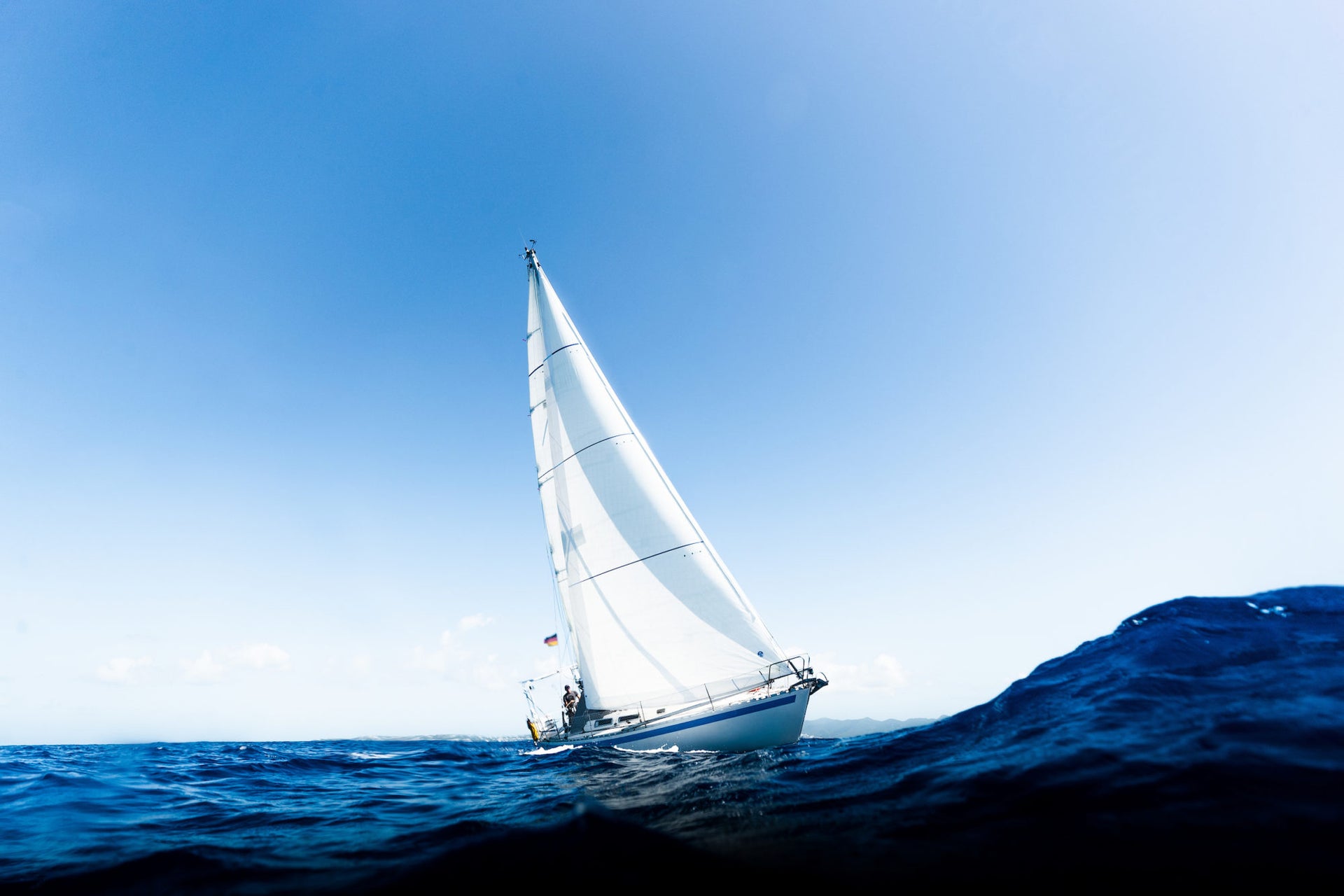
PERFORMANCE DES VOILES DE CROISIÈRE
PERFORMANCE DES VOILES DE CROISIÈRE
Au-delà de la vitesse
North Sails est fier de vos nombreux succès sur l’ensemble des plans d’eau, mais saviez-vous que plus de croiseurs comptent sur North que tout autre voilier? Chez North Sails, nous sommes passionnés par la performance. Mais pour les marins de croisière, cela signifie beaucoup plus que la vitesse pure.
Sur la base de ces antécédents, vous pourriez supposer que chez North Sails, nous nous concentrons uniquement sur la course. Mais en fait, beaucoup d'entre nous chez North somment des croiseurs. Nous avons grandi en croisière avec des amis et la famille, possédons des bateaux de croisière et profitons de nos aventures de voile. Oui, nous naviguons pendant notre temps libre, tout comme vous. La croisière est une grande partie de la navigation et la voile est notre passion. En tant qu'entreprise, notre histoire, nos traditions et notre technologie nous ont donné les compétences, l'expérience et les outils nécessaires pour construire les meilleures voiles au monde.
Lorsque nous parlons de performances de croisière, nous n'essayons pas de gagner la prochaine course. Au lieu de cela, nous cherchons à fournir un ensemble de voile qui aide un bateau et nos clients à réaliser leur plein potentiel, et une expérience sûre, facile et agréable pour tout le monde à bord.
La bonne voile
.
Faible allongement
La gite, l’angle de barre et la dérive nuisent aux performances et au confort de croisière. Un bateau qui gite trop est inconfortable, une dureté de barre excessive tue la vitesse et lorsque vous dérivez, il faut beaucoup plus de temps pour progresser contre le vent. Une voile doit conserver sa forme aérodynamique sur une grande variété de vitesses de vent et pour une durée de vie appropriée. Quand les voiles s'allongent dans le vent forcissant et qu'elles vieillissent, elles deviennent plus creuses et perdent leur forme optimale. L'augmentation de la traînée qui en résulte entraîne une dégradation des performances du bateau. Chez North Sails, nous utilisons des outils sophistiqués pour adapter la densité et le module de la fibre (résistance à l'étirement) au moment de redressement de votre bateau. Cela permet à nos experts de sélectionner le tissu de croisière qui gardera sa forme et fournira des performances optimales sur une large plage de vent et une période de temps plus longue.
Haute résistance
La durabilité est sans doute la plus haute priorité de tout marin de croisière. L'intégrité structurelle, la résistance à la rupture, aux UV, au raguage et à la résistance à la flexion sont toutes des qualités qui rendent la voile robuste et tenace. Les voiles de croisière North sont dessinées et construites en tenant compte de ces facteurs, et les matériaux de croisière North sont conçus pour résister à des conditions extrêmes. Les détails de finition tels que les coutures, les patchs divers et les renforts structurels sont construits selon les conditions rencontrées par les marins en croisière. Nous sommes confiants dans nos produits et notre qualité et nous supportons chaque voile que nous livrons.
Manoeuvres faciles
Sortir sur l'eau ne devrait pas être un problème. Nos voiles sont faites pour monter et descendre facilement et s'enrouler et sortir correctement. Chaque voile North est dessinée sur mesure et spécialement conçue pour s'adapter à tout système d’accastillage. Nous proposons également une large gamme de fonctionnalités pour faciliter la navigation. Les voiles à faible élasticité et haute résistance ne doivent pas être excessivement rigides ou lourdes. Nos techniques de conception et de fabrication garantissent des voiles légères relativement à leur solidité et leur durabilité.
Ajustement et fonctionnement corrects
Le dimensionnement 2D de toute voile est une caractéristique importante des performances et de la durabilité globales de la voile. Si les points d'attache ne sont pas correctement alignés, des points de contrainte sont créés qui peuvent abimer et déchirer une voile. Si la voile n'est pas conçue pour s'adapter au gréement, des frottements et une abrasion peuvent se produire. Les patchs de barre de flèches, de chandeliers et de radar doivent tous être positionnés et installés avec précision. Le dessin et la construction des voiles ne sont qu’une partie des performances globales des voiles. Chez North Sails, nous nous assurons que chaque voile que nous construisons s'adapte et fonctionne correctement.
Forme correcte
Une voile de croisière doit avoir la bonne forme aérodynamique, être facile à régler et doit bien fonctionner dans un large éventail de conditions. C'est là que notre pedigree de course porte ses fruits. Chez North Sails, nous savons ce qui fait une voile rapide. Nous savons également ce qui rend une voile facile à régler et polyvalente sur une gamme de vitesses et d'angles de vent. Une voile de croisière North a une forme conçue pour correspondre aux performances de votre bateau. Elles ont aussi une large plage de réglage et sont faciles à vriller, ce qui rend leur réglage et la conduite plus conviviaux.
Matériaux de qualité
La qualité globale de la voile est la somme des composants. La conception et la fabrication reposent sur des matériaux de qualité aux propriétés prévisibles et fiables. North Sails a été le pionnier dans l'approche scientifique de la fabrication des voiles. Nous testons chaque rouleau et inspectons chaque centimètre de tissu à voile que nous utilisons. Nous ne nous associons qu'avec les meilleurs fournisseurs de matériel et de tissus et si nous ne pouvons pas trouver des matériaux qui répondent à nos normes, nous le faisons nous-mêmes.
Conception et ingénierie
Utiliser les meilleurs matériaux et avoir la meilleure fabrication n'est pas utile si une voile n'est pas dessinée et conçue pour répondre aux exigences de la croisière. Une voile de croisière de qualité doit être conçue sur mesure et construite à cet effet. Les concepteurs de North Sails comprennent la nature dynamique des charges et les propriétés physiques des matériaux des voiles. Ils utilisent cette connaissance et l'appliquent à la structure de voile avec des outils de conception de pointe. North Sails est capable de modéliser tous les aspects d'une voile, de la géométrie du gréement et du pont en 3D aux formes des voiles volantes avec FEA et l'analyse du flux d’air. Chez North Sails, les meilleurs designers travaillent avec les meilleurs outils pour créer les meilleures voiles de croisière.
Service de qualité
Même les meilleures voiles du monde ont besoin de soins périodiques. Chez North Sails, notre réseau mondial d'installations de maintenance de voile certifiées vous couvre partout où vous allez. Nous accordons tellement d'importance au grand soin de la voile, que nous le proposons gratuitement pendant la première année d’acquisition. Que vous déchiriez une voile sur le quai ou que vous soyez pris dans une tempête, notre offre d’entretien de voile gratuite fait partie de notre promesse de garder votre voile performante.
Excellent rapport qualité-prix
En répondant à toutes ces normes élevées, une grande voile de croisière offrira un grand retour. L'achat d'une voile de croisière North Sails signifie plus de «performances de croisière» et plus de plaisir sur l'eau.
READ MORE
READ MORE
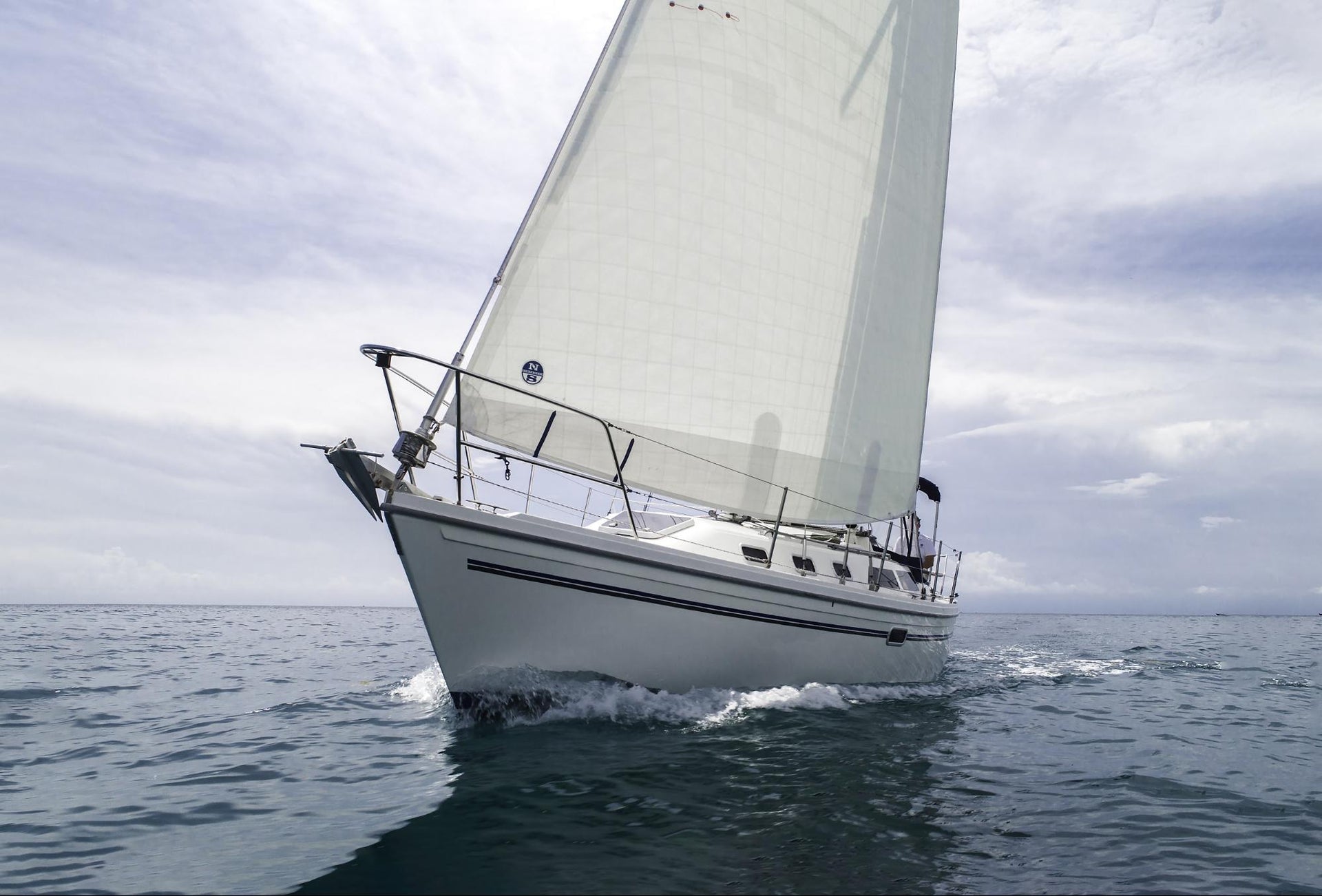
DURABILITÉ DES VOILES DE CROISIÈRE
DURABILITÉ DES VOILES DE CROISIÈRE
Les marins de croisière exigent l'endurance
Les croiseurs exigent la durabilité. Pourtant, la durabilité n'est pas un élément facilement quantifiable des performances. Prédire la durabilité est un défi difficile, car les voiles sont soumises à de nombreuses formes et conditions d'utilisation. Cela dit, la question la plus fréquente des croiseurs est: "Combien de temps dureront mes voiles?" Ici, nous allons essayer de fournir quelques conseils. Le facteur contribuant le plus à la durée de vie d'une voile est son matériau. Le tissu à voile de croisière doit être solide et à faible allongement. Il doit également être solide - résistant à l'abrasion, à la flexion, aux chocs et à une variété d'expositions environnementales à long terme, notamment les UV, la chaleur, l'humidité, le sel et la moisissure. À mesure que les voiles de croisière vieillissent, la forme de la voile et l'intégrité mécanique du matériau se dégradent. Les marins déterminent la durée de vie de leurs voiles lorsque les performances de forme ou la fiabilité structurelle sont compromises au-delà de leurs normes personnelles. Aucun navigateur ne devrait jamais accepter la possibilité d'une rupture de voile en cours de route.
Matériaux Construction Maintenance Use & Longevity Demandez un devis
Les matériaux
Les matériaux de croisière sont disponibles en trois styles distincts: le polyester tissé («dacron»), les laminés de croisière et les matériaux composites 3D. Chacun offre un équilibre différent de durabilité et de performance. Les tissus Dacron sont les plus résistants et les plus stables structurellement. Les laminés Croisière offrent un poids plus léger et une meilleure tenue de forme. Les composites 3D sont une nouvelle génération de matériaux de croisière avec une tenue de forme et une intégrité structurelle exceptionnelles au-delà de nombreux laminés. Dans chaque catégorie, différentes fibres et constructions sont combinées pour répondre à différentes exigences de prix et de performances. Pour un aperçu complet, voir le Guide North Sails sur les fibres et les tissus. La qualité du tissu est primordiale dans toute discussion sur la durabilité. Les tissus à voile bien conçus et bien fabriqués durent plus longtemps. Les matériaux de la plus haute qualité sont produits dans des installations de fabrication spécialisés et utilisent des fibres, des films, des résines, des revêtements et des systèmes adhésifs de qualité supérieure. Les voiles de qualité sont bien sûr issues de matériaux de la meilleure qualité. Voyez ci-dessous un tableau qui vous aidera à comparer les différents types de matériaux de voiles de croisière.
Construction
Des voiles bien faites durent plus longtemps. Les voiles de croisière doivent être dessinées sur mesure et spécialement conçues pour répondre à la géométrie exacte du gréement. Les points d'usure tels que barres de flèches, chandeliers et radar doivent être recouverts de patchs. Les coutures doivent être cousues correctement avec du fil résistant aux UV, une largeur de couture et un nombre de coutures appropriés à la taille du bateau et au style de matériau. La conception et la construction des patchs, des goussets de lattes, des nerfs de chute et de bordure et autres accastillages, tous affectent la longévité de la voile.
Utilisation et maintenance
La façon dont les voiles sont utilisées et comment elles sont entretenues sont les autres facteurs les plus importants dans la durée de vie des voiles. Laisser une voile hissée et faseiller dans un grain pendant 30 minutes peut représenter 50 heures de navigation «normale». Naviguer régulièrement avec une voile au-delà de la plage de vent pour laquelle elle a été conçue peut également la faire vieillir bien avant son heure. De même, laisser la chute vibrer sans utiliser le nerf de chute endommagera autant le matériau de la voile. Les petits problèmes laissés sans surveillance deviennent de gros problèmes plus tard. Un service régulier permet aux voiles de durer plus longtemps, tout comme avec le moteur de votre voiture. Une inspection régulière détectera les points de raguage non identifiés, les dommages causés par les UV, les coutures tirées ou cassées et les éventuels problèmes d’accastillage. Un rinçage régulier élimine le sel, qui contribue au frottement et dégrade également les laminés de croisière en retenant l'humidité. Mais LA plus grande menace environnementale est l'exposition aux UV. Les voiles laissées au soleil doivent être couvertes. Un vieux taud de soleil perd de sa protection UV avec le temps, donc un nouveau taud devrait idéalement accompagner la fourniture de nouvelles voiles.
La question de la longévité
Combien de temps faut-il s'attendre à ce que votre voile de croisière dure? Les flottes de charter prévoient 2 à 3 ans d'utilisation des voiles en polyester tissé basique, ce qui se traduit par environ 1 500 à 2 500 heures. Après 2000 heures, ces voiles sont généralement considérées comme usées. Une saison typique pour de nombreuses familles pourrait être de 5 heures par jour pendant 30 jours par an - pour un total de 150 heures. Cela signifie qu'un croiseur moyen peut s'attendre à environ 10 ans d'utilisation d'une voile de croisière en polyester de qualité supérieure. "Côté performances, sachez que le multicoque Ultim Sodebo a utilisé une grand-voile composite 3Di pour traverser l'océan Atlantique neuf fois avant d'établir un record de distance de 24 heures en solitaire de plus de 600 miles. Nous voyons régulièrement des bateaux océaniques de haute performance faire le tour du monde et continuer à faire campagne avec le même jeu de voiles en composite."
Demandez un devis Retour en haut de page
READ MORE
READ MORE
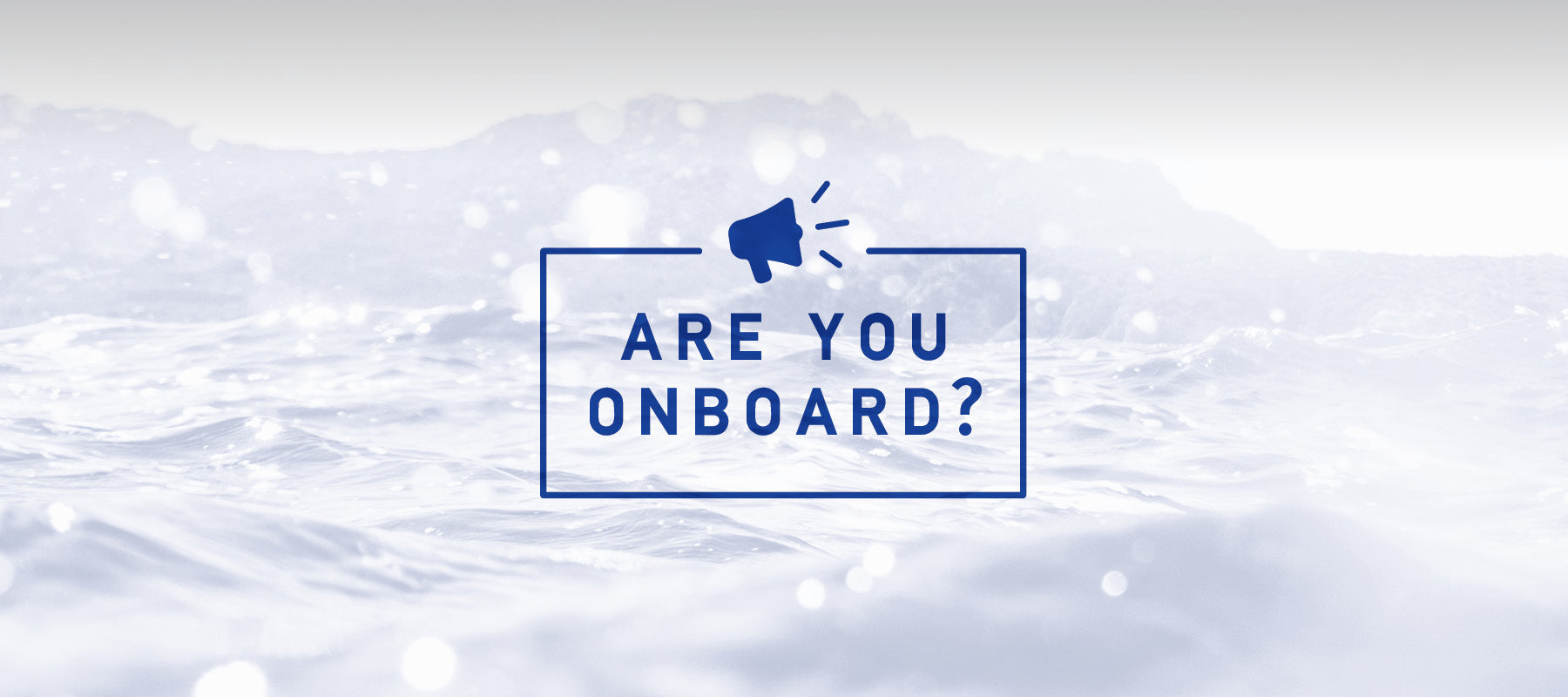
ARE YOU ONBOARD?
ARE YOU ONBOARD?
Follow the North Sails Social Media Channels for a Curated View of Our Favorite On-The-Water Moments
Fill your social feeds with all things sailing. Each day North Sails is curating our social media channels with content that showcases our passion for being on the water. We’re collecting images that inspire us and passing along expert tips to help you maximize your time on the water. Our team has fun dreaming up each post and we hope you enjoy and follow North Sails. Check out our profiles in the links below.
From sailing news to exciting events, the North Sails Facebook page is the only place to stay up-to-date on all facets of sailing. From one-design regattas to the latest in superyacht racing. Like our page to be a part of the latest news and connect with sailors who share your interest.
Follow us on Facebook
Energize your feed with stunning photos and videos from sailing events around the globe. Get exclusive tips from our experts and top sailors, and engage with North Sails in the comments section on hot topics in the sailing arena.
Follow us on Instagram
Follow @NorthSails on Twitter for everything sailing from breaking news and webinar commentary to client victories, interviews, and more! Join the conversation and interact with North Sails here!
Follow us on Twitter
Showcasing our technology and educating our clients. Learn about our game-changing sails and rewatch webinars at any time, any place, for free. Discover how North innovations are leading the sport and how the North experts are making a difference in sailing all over the world.
Follow us on YouTube
Follow us on LinkedIn, the professional networking platform where you can connect with us and our Sail Experts, hear the latest news on our sail technology, industry news, leadership, job opportunities, and our top recommendations on choosing the right sails for your type of sailing.
Follow us on LinkedIn
Get the North News that matters to you! Whether you are a racer, cruiser, or grand prix sailor, we’ve got something for you. We target our emails to help you find events in your area, products that fit into your style of sailing, and help you find your local North Sails loft. Sign up for North News today!
Sign Up For North News
READ MORE
READ MORE
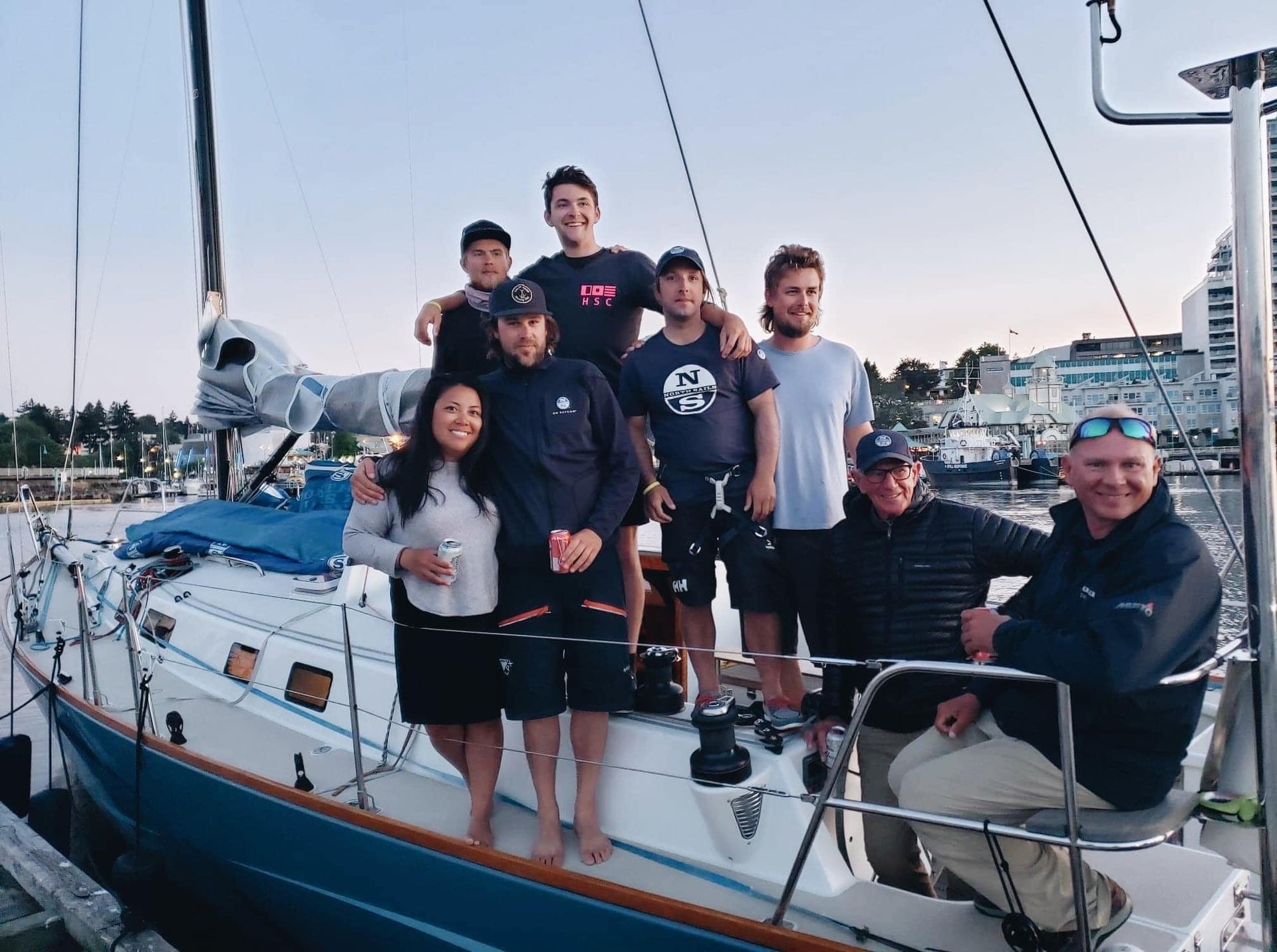
THE YOUNG AND TALENTED
THE YOUNG AND TALENTED
Local Sailor Aidan Koster Shares His Sailing Story
Aidan Koster, 26, grew up in Victoria, British Columbia and started sailing out of Caddy Bay with his parents at a young age. By age 8, he was hooked thanks to summer sailing camps. By age 10 he was racing Opti's. Fast forward to now, he is currently racing out of Royal Victoria Yacht Club and crewing on Sunnyvale, a local Melges 24, who finished 5th overall, 1st corinthian at the 2019 Melges 24 North Americans. He shares his sailing story with local North Sails expert Drew Mitchell.
How old were you when you really started fall in love with racing and what was it about the sport that intrigued you?
I got to go to my first away regatta in Comox in 2004. A couple friends and I loaded the Opti's into the back of my dads truck, and he drove us up there for the weekend. The regatta was sponsored by Red Bull (like an 11 year old needs more energy), and I remember having a blast with my friends. This regatta was when I realized if I really pursued sailing it was not only an opportunity to travel, but to also do it with my friends.
You were pretty successful in dinghies at a youth age, what do you think helped you find success on the course at such a young age?
Not long after I joined the race team Karen Douglas became the Opti coach. She was very patient, and taught me lots of tips and tricks. It was under her guidance that I qualified to go to the Opti Europeans In Varkiza, Greece. Joining the race team around the same time as me were two friends, Reid Cannon, and David Berry. We were all roughly the same age/size/skill level, which created a healthy competition improving our skills and making racing enjoyable. As I graduated into Laser Radial, and eventually Laser Stephen McBride was the head coach and once again was very influential in turning me into the racer I am today.
Growing up in Victoria there is a lot of racing and good racers, who did/do you look up as mentor and why
Robert "Bob" Britten has been a great mentor for me at RVicYC. From racing against him in Lasers, to more recently in Melges 24's he has always been a great mind to bounce ideas off of, and exchange banter with. I learned at a fairly young age that if you are racing in and around Caddy Bay it is always a good idea to keep in mind which side of the course Bob is on. I admire his ability to engage with the youth of the club and stay in a Laser for so many (100?) years.
The sport looses a lot of good dingy sailors after they “age” out of junior sailing, what made the transition from dinghies to keel boats seem so effortless for you?
I have to credit Mike Turner for this. While I was racing Lasers on the Race Team with his son, Matt, he invited me on to his Elliot 770 for the local beer can racing. This was my introduction into the keelboat/sport boat racing scene, and I was hooked from there. As the local Melges 24 fleet grew it turned into a One Design fleet which peeked my interest. Before long I was racing on Psyclone, Light Scout, and Goes to 11 before starting the Sunnyvale program with the Wet Coast Sailing Team. The other turning point for me was answering a Facebook message to crew on "Shadow" a 1D35 out of West Vancouver for a Swiftsure race. This got my foot in the door for big boat distance racing. Through racing with them I met Drew Mitchell who I got along with like a house on fire. He has been responsible for many of the introductions that have enabled me to race in the keelboat scene.
What do you think was the biggest adjustment moving from dinghies to keelboat racing?
The biggest adjustment for me was moving from a single handed boat where I had control of everything, to a multiple person crew where I was just a piece of the puzzle. The game moved from managing the entire boat/fleet/conditions, to just focusing on the tasks that I needed to perform as a part of that team. Learning to depend on my teammates to collectively try and achieve a good result has been one of the biggest takeaways from moving into keelboat racing. Moving into bigger boats with multiple people made the social aspect of sailing much more fun.
In 2015, you and four other sailors under the age of 30 joined forces and started campaigning a Melges 24. Why did you guys choose the Melges 24.
Correct, In 2015 "Wet Cost Sailing Team' was inaugurated. At the time Melges 24 was the strongest One Design keelboat fleet at Royal Victoria Yacht Club. It was announced that Victoria was going to host the 2018 World Championships so we decided to put a team together for it. Fraser McMillan, Keegan Moynihan, Kieran Horsburgh, and Harry Miller bought hull #151, and I joined them to make a bid for a good result at the 2018 Worlds. Since the 2018 worlds Alex "The Machine" Levkovskiy joined the team, and we purchased hull #415 with the goal of winning the 2020 Corinthian worlds. This event has now been cancelled, so we will have to wait and see what the future holds for us.
You guys had a pretty young team relative to the rest of the local and international Melges fleet. You seemed to have success right out of the gate, what would you contribute your early success too?
I would attribute the majority of our success to time spent on the water. As a lower budget team without pro sailors on board, we figured our best shot was to try to improve our boat handling to be one of the best in the world. In the three year lead up to the 2018 worlds the majority of my spare time outside of work was spent either on the water, or working on the boat. While watching the Match Race World Cup I heard an audio clip from Phil Robertson, "We can out hike these guys, they are OLD Men". Having the youngest average age in the local fleet this became a common tag line on our boat, being younger and more agile is an advantage in handling the Melges 24.
In 2018 the Melges 24 world championship was held in Victoria, BC, your teams home waters. Your team hoped to win the corinthian title but came short of the goal. What did you learn from the event and what would be your advice to teams struggling in a big event?
What I learned from that event is that no matter how hard you train, or how much you plan for something, it isn't always going to go your way. My advice is to enjoy the journey; looking back on that campaign, it didn't have the intended result, but I have many fond memories of the build up to that event. On a personal level I met my lovely girlfriend who is also a sailor, at this event. So not all bad right?
After the 2018 worlds you guys switched the crew up after loosing two crew members and adding one. Melges 24’s are usually sailed with 5 and right at the class weight limit. Your team was now racing with 4 and under the class weight limit. What adjustments did you and the team need to make ?
When "The Machine" joined the team in 2018, we were roughly 180 lbs. under the class weight limit. All 4 of us went from a "loose weight" lifestyle to a "gain weight" lifestyle. By the next summer's events we had collectively gained around 90 lbs. to to offset our weight deficit. As we learned our new roles sailing the boat with 4 we made several adjustments. Keegan had moved from the also bow position to trimming, as Alex took over the bow. In order to create more righting moment I, being the heavyweight, moved forward one position to place myself closer to the widest part of the boat, and middle of the hiking strap. We learned little tricks to sailing light with 4 such as tensioning the rig to de-power a little earlier than before. Some bonuses we found to sailing with 4 was amount of room in the cockpit for maneuvers, and the increase in downwind speed and angle.
Again this team of 4 seemed to be fast if not faster. You guys did well at North Americans in the Gorge and then again at US Nationals in Michigan walking away with the corinthian title in both. I noticed you guys switched from UK sails to North Sails, why the switch ?
The Gorge One-Design regatta was our first real test since the worlds to see if our adjustments had paid off. We were pleased to note that though our upwind speed wasn't anything special in the big breeze we were able to hang with the "Big Boys". On the downwind we used a P-2 spinnaker for most of the event, combined with our light crew weight made for some fast rides. This gave us a lot of confidence going into the North Americans in Michigan. North Americans was for the most part a light-medium air event (Other than 1 race on the last day) which made our light crew weight an advantage. Switching to North sails was very beneficial in allowing us to tune with our competitors. Racing with a North inventory gave us the ability to be competitive in a wide wind range with the top of the fleet.
What are the challenges and on the flip side the benefits of being a corinthian team in a heavily dominated pro class?
I welcome the challenge of competing against the pro sailors/boats in the class. In my opinion there is no better way of learning how to become a better sailor than being in and amongst the best. Being able to talk to the pro sailors before and after racing is a great way to dramatically improve the learning curve. Having both divisions race together makes for good racing, and when you do well, makes the victory that much sweeter.
You have also done quite of bit of distance racing around the PNW. What would you consider your favourite race and why ?
My favourite distance race in PNW is the Van Isle 360. I consider it "adult summer camp", It is hard to think of a better way to spend two weeks in the summer than doing 9 distance-sprint legs around Vancouver Island. On top of the great racing and beautiful scenery you spend countless evenings with all the other crews, in remote locations all over the island. I have made many connections, and even more great memories on the two times that I have done this race aboard "Zulu".
Last question, what advice would you give a young corinthian team looking to put together a team to race internationally?
My advice to a young team would be to find a group of like-minded people that want to achieve the same goals as you. If everyone is on the same page and buys in, the possibilities of what you could achieve are endless. Be ready to put the time in to train hard, and enjoy the ride!
READ MORE
READ MORE

BLUEWATER CRUISING: SPAIN TO THE CARIBBEAN
BLUEWATER CRUISING ON WAKAKI
Spain to the Caribbean with the Kerr Family
📸 Ryan Borne
Warwick Kerr (Wazza), Sail Expert based in Palma, Spain, set off on a cruising trip with his wife Katrin and his three-year-old son, Kilian. They departed from Mallorca in October of 2019 and have been all over the place since, from Mallorca to La Linea, Gibraltar, Gran Canaria, Tenerife, and more recently has made landfall in Antigua and is now in St Maarten. Working remotely, Wazza and his family have fully embraced the bluewater cruising lifestyle and couldn’t be happier doing what they love. Being able to share this experience with Kilian has made it even more special.
Wazza owns a Spirit 36 called Wakaki, hull #45, built in 1991. She had one owner before Wazza. “This boat was a good compromise between my modern racer mentality, and my wife’s more traditional long keel, heavy cruiser mindset.” When the family set off from the docks in Palma; they didn’t have a firm plan on how long they’d be gone.
They had a general idea of spending two seasons in the Caribbean and then heading into the Pacific, which has been a life-long dream to tick off their family bucket list. Other than that, it’s ocean traveling from port to port, seeing new places, meeting different people, and making memories together.
“We don’t have any fixed plans, just cruising around to see where we end up. As long as we are enjoying it, which we are! We will keep on cruising!”
Wakaki is fully equipped with a North Sails 3Di NORDAC mainsail, a genoa, and a staysail. Their spinnaker is a little older, but she’s holding strong, Wazza says. “I have my sights set on a tradewinder at some point to give me even more options.”
📸 Ryan Borne
Wazza worked with North Sail Designer Kevin George to fine-tune his custom refit. “Kevin is a good friend of mine, and we spent a good amount of time working on the designs to find the right shape that would optimize my family sailing trip. Everything is working out great,” Wazza says. “I can say the reefs in our mainsail are perfectly positioned, which gives us a lot of wiggle room, or a little if we choose. Our sails now have a little over 5,000 nm on them, since they were installed in September of 2019.” Wakaki’s genoa and staysail are furling and reef-able too, which makes things even more ideal for his easy cruising lifestyle.
“We don’t have any fixed plans, just cruising around to see where we end up. As long as we are enjoying it, which we are! We will keep on cruising!”
From an overall sail perspective, Wazza feels that his 3Di NORDAC sails are the best investment he’s made for the boat. “My original plan was to build a set of cross-cut dacron sails. I had planned to go old-school, and hand-cut them myself, and build them like I did when I was a sailmaking apprentice, which was in 1996.”
📸 Ryan Borne
“Getting caught up in the dream as we all do, I ended up choosing 3Di NORDAC, which was a one-and-done decision that has made it all possible for us. I have to say, after the miles they’ve seen, and the handling they’ve received, they are still in great shape. They have the same shape they did when I bought them, and are an image of perfection, in my opinion. We do our best to take care of them, but you know how it is, sometimes we are a bit rough on our sails, but they are holding strong regardless of our treatment.” Wazza agrees, a cross-cut sail would have done a great job, but for longevity and hard use over an indefinite period of time– 3Di was the way to go, no question.
“Cruisers are supportive, friendly, and the only regret you can have is not to give it a try!”
Katrin is also making the most of their cruising adventure. “She has always had the dream of cruising the Pacific, so being able to do it now with a family, is her definition of living the dream,” explains Wazza. “Katrin’s parents cruised the world in the ’70s, and my parents did also in the late ’90s and early 2000s. It’s part of our blood, so it’s no surprise we both enjoy it. What’s unique is that both grandparents to our son have sailed around the world, and now we can all share it together, and that is special for us.”
Kat’s dad bought Wanderer III from the Hiscocks (pioneer cruisers and authors of some of the first yacht cruising guides), and he sailed around the world for five years, during which he met Kat’s mother. Wazza’s parents left home when he was 17 to complete their dream journey, which lasted a little less than nine years. Bluewater cruising is a significant part of their family history.
Kat is not new to the sailing world; having grown up cruising and sailing from a young age, Katrin started as chef/mate nearly 20 years ago in the BVI’s with The Moorings and has since been working in the Super Yacht industry. Now the sailing duo can arrive at any port, and offer just about any type of assistance, whether it be sail and cover related expertise, or if someone needs a chef to cater a charter; both Wazza and Kat can do it all.
So this cruising life; Why should we do it and what makes it so special? “Why not!” says Wazza. “Do it, live your dream! The worst thing that can happen is you go back to what you had on dry land. Cruisers are supportive, friendly, and the only regret you can have is not to give it a try!”
Read Part II: Killian Goes Cruising
📸 Ryan Borne
READ MORE
READ MORE
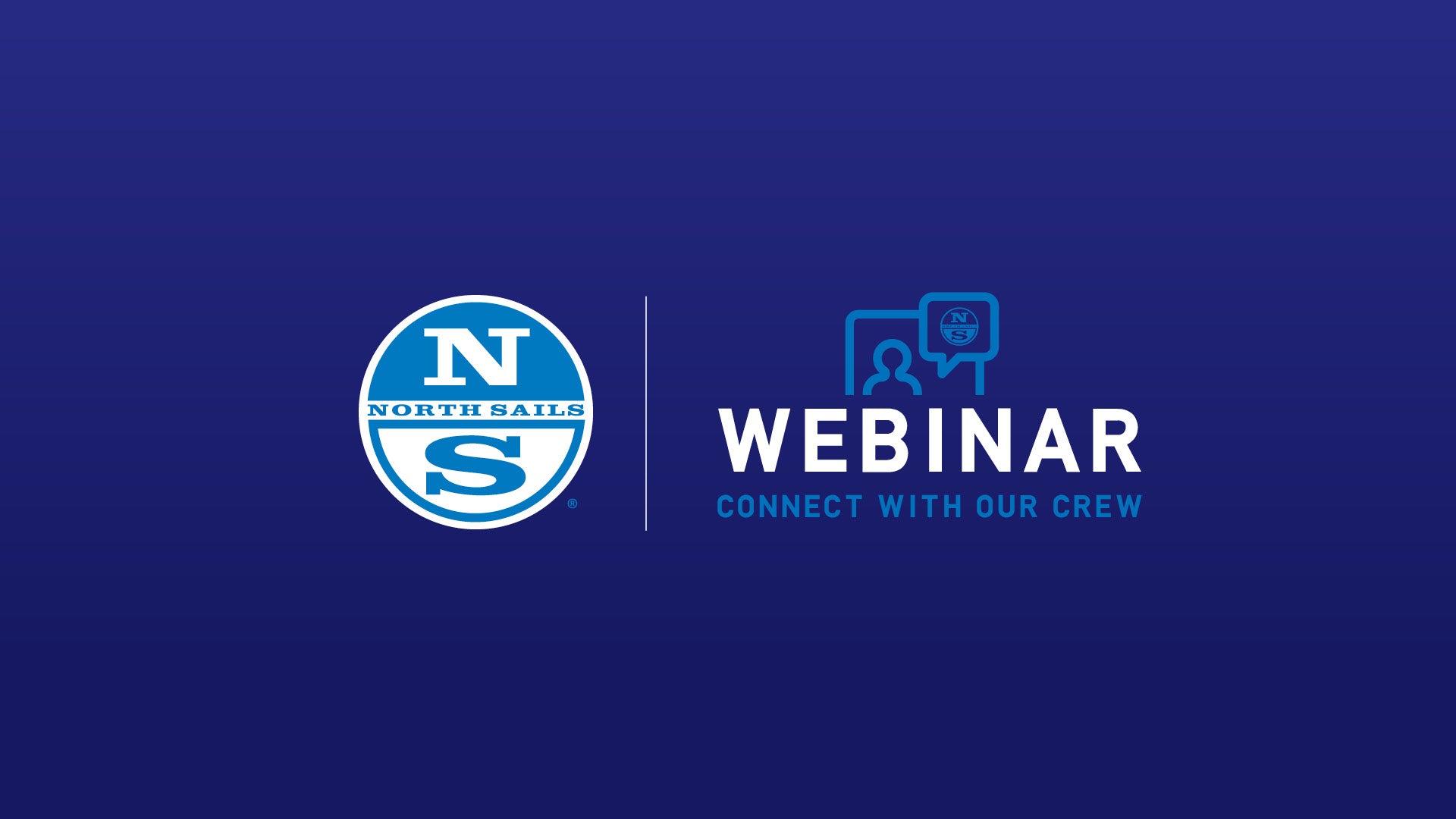
LET'S TALK STARS | RIG TUNING
LET’S TALK STARS
Rig Tuning with Eric Doyle & Markus Koy
Star Class champions Eric Doyle and Markus Koy present a in-detail presentation on Star Boat Rig Tuning. This great presentation is moderated by Maurice “Prof” O’Connell.
Topics include:
6:20 – How to set up your mast
34:20 – Mast position in the boat
1:01:01 – Tuning on the water
Learn about North Sails fast Star designs.
READ MORE
READ MORE
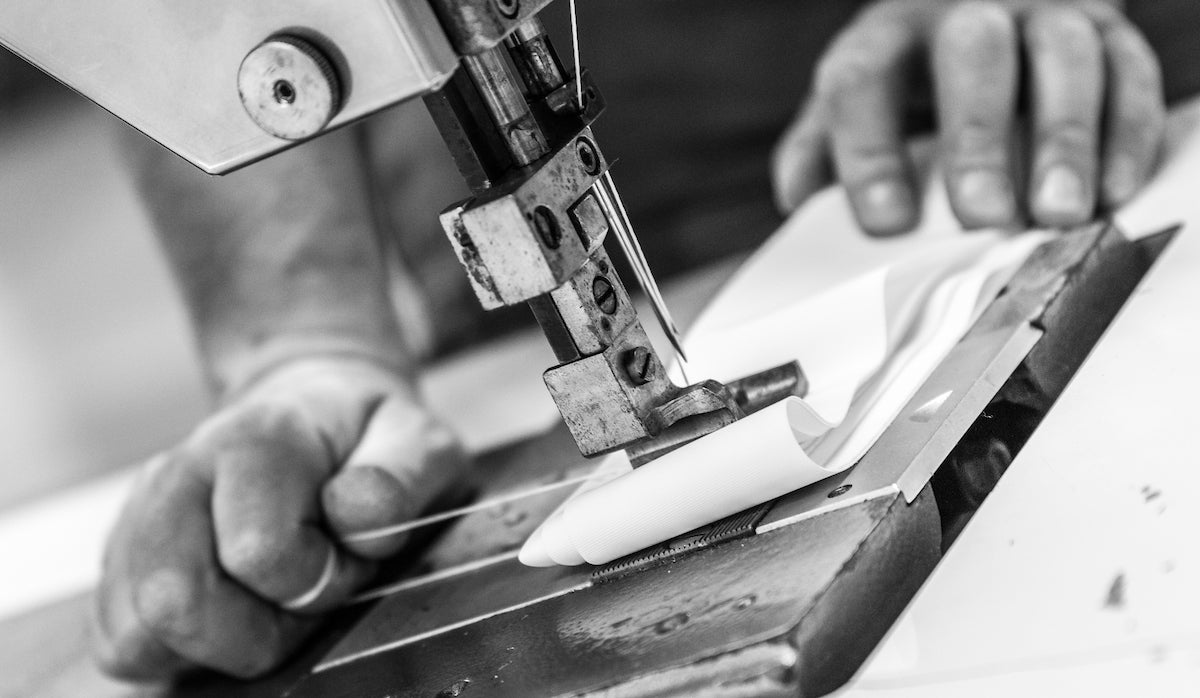
NOS SERVICES SUR MESURE
NOS SERVICES SUR MESURE
Découvrez en détail tous les services sur mesure proposés par notre équipe North Sails Suisse.
Web séminaires De votre salon à chez nous, nous vous invitons à rejoindre notre équipe d'experts pour des séminaires sur différentes thématiques ! Ecoles de voiles, classes spécifiques, thème personnalisé : n'hésitez pas à nous contacter pour organiser votre web séminaire sur mesure. Coaching et conseils personnalisés avec North Experience Que ce soit en Surprise, Grand Surprise, Luthi, Psaros, Esse ou M2, profitez d’un moment unique afin d’apprendre tous les trucs de nos navigateurs professionnels, autant lors d’une navigation qu’à terre ! 3 types d'accompagnements ; à bord "in situ spécial régate", depuis un coach boat relié par VHF, ou théorique à la voilerie, profitez de l'expérience de nos experts. Exemple en détail ici. Mise à bord, aide aux réglages, livraison et mise en place En début de saison, contactez-nous pour organiser la livraison et la mise à bord de vos voiles. Nous vous proposons également une aide pour les premiers réglages. Listing de voiles d’occasion Nous proposons une série de voiles d'occasion. Découvrez la liste complète ici. Réparation et nettoyage de vos voiles toutes marques Confiez-nous vos voiles, quelque que soit la marque, et nous vous les réparons dans la semaine. Si vos voiles sont pliées dans le cockpit, un service d'enlèvement et de rapatriement sera mis en place. Inspection annuelle "Certified Services" En 10 points, profitez de notre contrôle service certifié : détail ici. Travaux de sellerie Protéger votre voile, votre bateau ou vos meubles extérieurs avec une housse ou une bâche, c’est garantir leur longévité. Une housse protègera des agressions extérieures et mettra votre matériel à l’abri des changements climatiques. Une voile est solide, mais ne résistera pas longtemps au soleil et aux UV si elle n’est pas protégée. Contactez-nous dès maintenant par mail ou téléphone et discutons des possibilités en terme de matière, de tailles et de couleurs ! Toutes nos réalisations sont faites sur mesures et coupées dans des matériaux de première qualité. Toiles d’ombrage et décoratives : North Sails Sun Besoin d'une housse pour votre parasol, d'une toile pour ombrager votre terrasse ? Prenez contact avec nous et expliquez-nous votre projet. Forfait hivernage Comprenant l'enlèvement à bord, le contrôle complet, le renforcement et le stockage durant l’hiver Service assuré en Suisse et en mer Plusieurs manières de contacter, par email ou par téléphone, notre équipe à la voilerie ou chez nos revendeurs ! Pour un service de proximité, faites appel à nos collaborateur qui sillonnent la région ou utilisez nos points de dépôts autours des lacs romands. Nos collaborateurs descendent régulièrement sur le pourtour méditerranéen et atlantique pour prendre des mesures, assurer une livraison ou mener des essais en mer. De plus, nos voileries de service situées à proximité des grands ports peuvent en tout temps effectuer des interventions, recoupes et réparation en coordination avec notre bureau technique de Genève. La liste de nos revendeurs et services points ici.
READ MORE
READ MORE
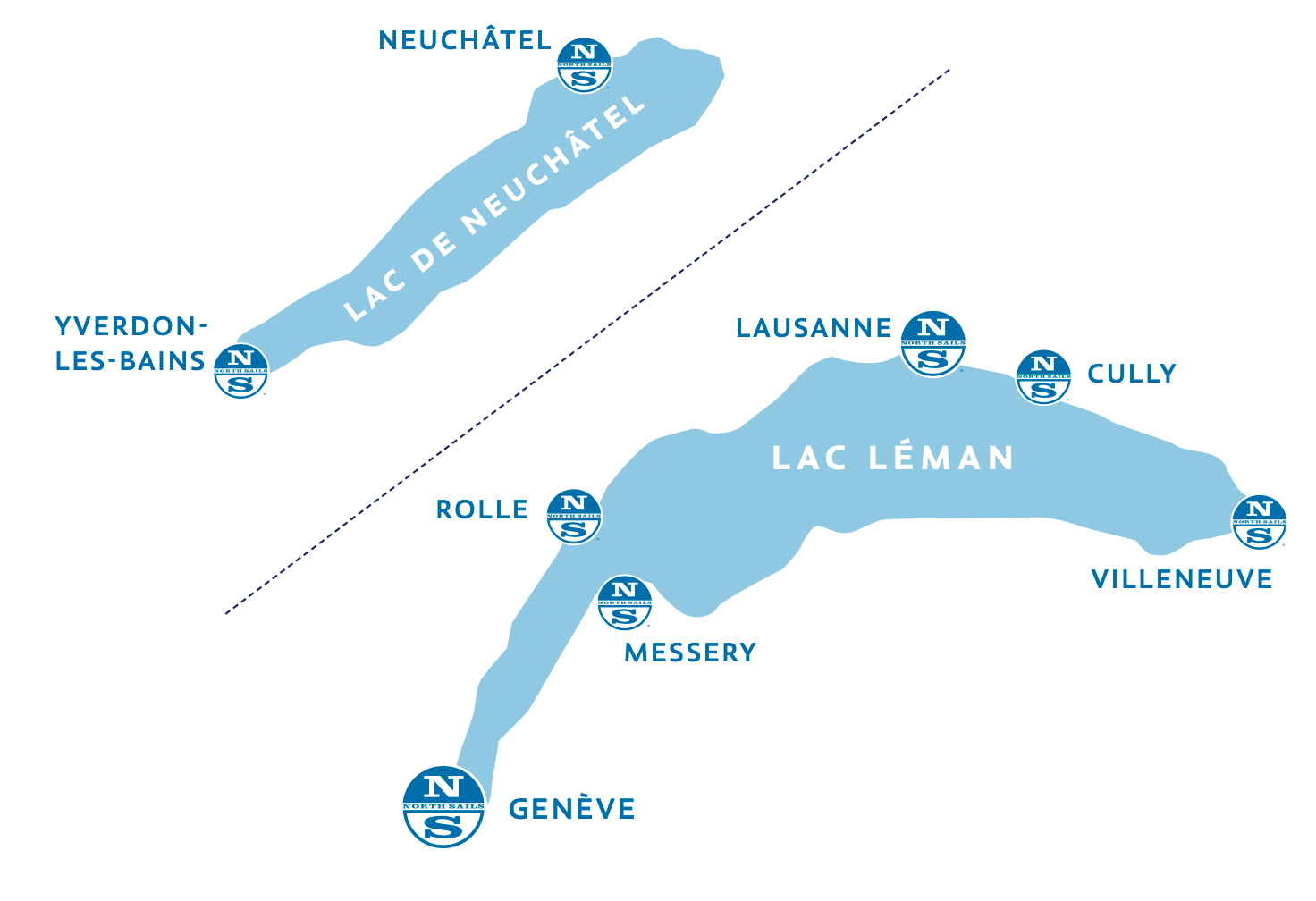
RÉSEAU DE REVENDEURS & POINTS DE DÉPÔTS
FAISONS ÉQUIPE ENSEMBLE POUR UN SERVICE DE PROXIMITÉ
Réseau de revendeurs et points de dépôt autour des lacs Léman et de Neuchâtel : contactez nos revendeurs ou nos services points les plus proches !
Depuis la fondation de l’entreprise il y a plus de 60 ans, North Sails s’investit pour les techniques révolutionnaires et les idées innovantes. Aujourd’hui, le nom de North Sails est synonyme de technique de pointe, de qualité et de service de proximité. Lors de l’achat d’une voile, un bon conseil est indispensable : vous ne profiterez pleinement de votre voile sur le long terme que si elle convient parfaitement à vos besoins. Nous vous conseillons en détail et restons à vos côté, même après votre achat, avec des conseils d'utilisation et des astuces de réglage. Plusieurs manières de nous contacter, par email ou par téléphone auprès de notre équipe à la voilerie ou chez nos revendeurs. Pour un service de proximité, faites appel à nos collaborateur qui sillonnent la région ou utilisez nos points de dépôts autours des lacs romands.
Notre réseau de revendeurs
HAUT LAC Chantier naval Ygor Yachting Route d’Ariel 15 / ZI B.55 1844 Villeneuve +41 79 947 08 59 ygor-yachting@bluewin.ch www.ygor-yachting.ch Chantier naval Birbaum & fils Route de Préverenges 10 1026 Denges +41 21 802 65 15 birbaum.fils@gmail.com www.birbaumfils.ch LA CÔTE Pro-sailing Patrick Tosh Huguenin Case Postale 1063 1180 Rolle +41 79 413 5911 / +41 21 808 06 41 patrick@pro-sailing.ch www.pro-sailing.ch LÉMAN FRANÇAIS Léman Plaisance Philippe Raphoz 62 route de la Pointe FR - 74140 Messery +33 4 50 94 73 07 courrier@lemanplaisance.com www.lemanplaisance.com
Nos services point
NEUCHÂTEL Chantier Naval L. Burkhalter Rue du Parc 15 1400 Yverdon-les-Bains 024 425 74 64 chantierburkhalter@bluewin.ch Centre de Formation Nautique Jean-François Zesiger Port du Nid du Crô 2000 Neuchâtel 079 242 12 88 info@cfn.ch
LAUSANNE Chantier naval de Vidy Allée du Bornan 2 - Port de Vidy 1007 Lausanne 021 616 08 48 info@bateau.ch www.bateau.ch Marine Pro Sàrl Chemin des Pêcheurs 9 1007 Lausanne 021 616 41 81 info@marinepro.ch www.marinepro.ch
GENÈVE MW Matelotage Denis Ménétrey Route de Compois 23 1252 Meinier/GE 079 203 41 11 denis.menetrey@mwmatelotage.ch
CULLY Chantier Naval de Moratel Yves Estermann Route de Moratel 4 1096 Cully 079 565 69 60 yves@c-n-d-m.ch www.c-n-d-m.ch
CONTACTEZ NOS COLLABORATEURS NORTH SAILS SUISSE Direction
Julien Monnier : mob : +41 79 574 11 15 - julien.monnier@northsails.com
Pierre-Yves Jorand : mob : +41 79 418 63 91 - pierre-yves.jorand@northsails.com
Experts
Julien Monnier : mob : +41 79 574 11 15 - julien.monnier@northsails.com
Michel Vaucher (monotype specialist) : mob : +41 78 898 20 24 - michel.vaucher@northsails.com
Nicolas Groux : mob : +41 78 736 96 90 - nicolas.groux@northsails.com
David Guertzenstein : mob : +41 361 08 05 - david.guertzenstein@northsails.com
Pierre-Yves Jorand : mob : +41 79 418 63 91 - pierre-yves.jorand@northsails.com
Bernard Schagen : mob : +41 78 803 60 58 - bernard.schagen@northsails.com
Atelier: +41 22 782 32 22
Bureau d'études et dessins: +41 22 782 32 22
Patrick Mazuay (patrick.mazuay@northsails.com) & Kilian Wagen (kilian.wagen@northsails.com)
Administration et comptabilité +41 22 782 32 22 - info@ch.northsails.com
Marketing, communication et événementiel +41 22 782 32 22 - info@ch.northsails.com
READ MORE
READ MORE
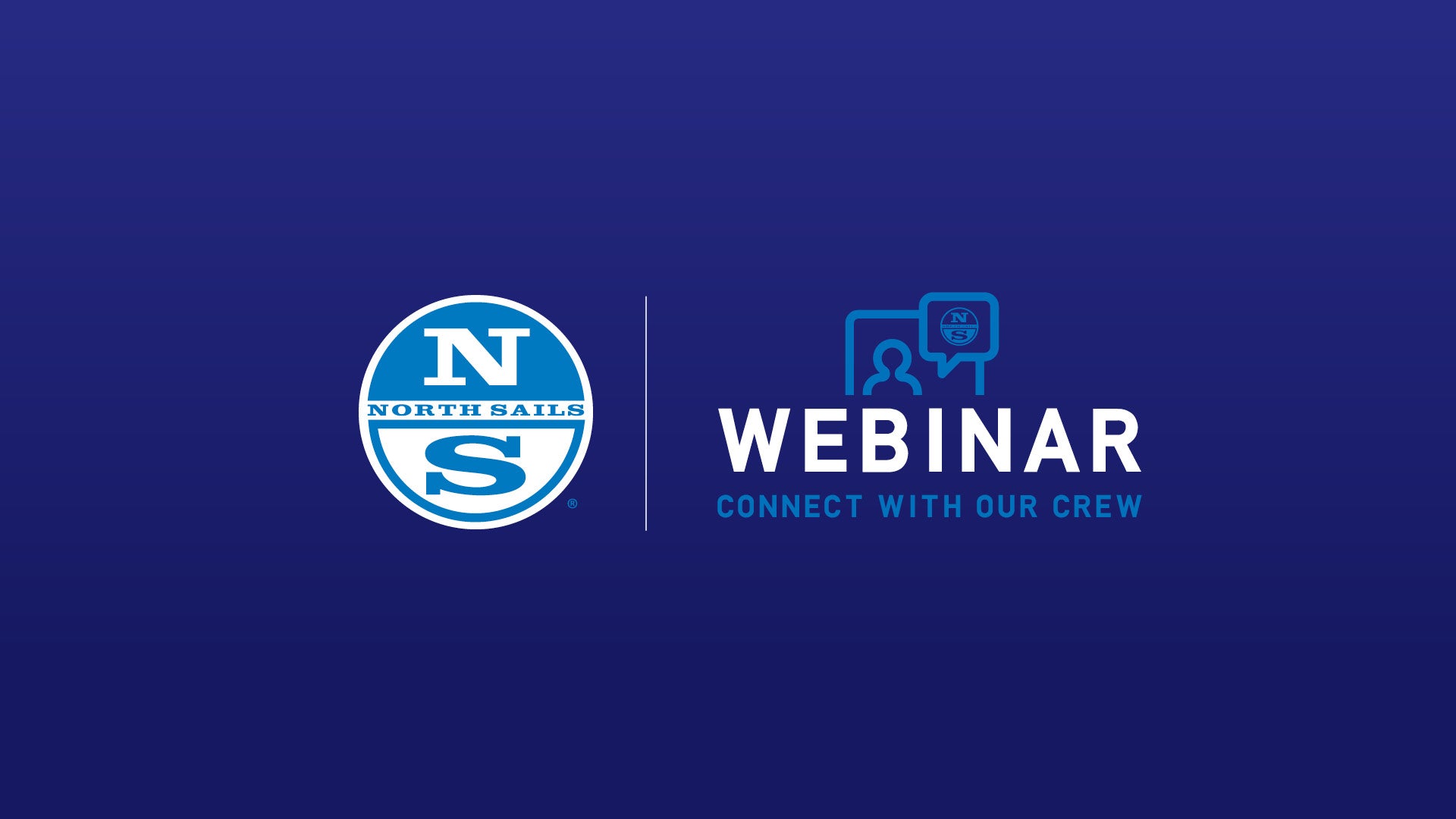
LET'S TALK J/24 | UPWIND & HEAVY AIR TECHNIQUE
LET’S TALK J/24
Upwind & Heavy Air Techniques
North Sails J/24 experts Will Welles, Andrea Casale and Mike Ingham talk about J/24 heavy air techniques.
Webinar topics include:
5:03 – J/24 Blade Jib vs Genoa decision
11:45 – Balancing the J/24
26:45 – Trimming the J/24 Genoa
54:00 – Trimming the J/24 Blade Jib
1:05:56 – Sailing the J/24 in 25+ knots
Complete information on J/24 sails
READ MORE
READ MORE